
THE SPIKE - BLAYDON HAUGHS - PART 1 of 5

HAUGH - an old English/Scots term for a low lying meadow in a river valley.
THE SPIKE - how did it get this name? No-one knows for sure. There are at least four theories. Number 2) below seems most likely.
1) From the spike of land that used to stick out into the Tyne at the north western part of the village (pre closure of Lemington U bend in river - see ariel map).
2) From the 'Spike Castle' - which in the 1860s became a lodging house for mostly Irish workers. They probably gave it this name and it was then adopted for the entire area as the terraced rows were built. A 'Spike' is an old Irish slang term for a cheap boarding house. These navvies would be working for Joseph Cowen and the Tyne Improvement Commission' eg. removing Blaydon Island, improving the river banks.
3) From the 'spiking' of Russian guns captured during the Crimean War and brought back here to decommission, in the 1850s.
4) From rhyming slang for Turnpike - because of the nearby turnpike road. I think this explanation is unlikely as the nearest turnpike was not in the immediate vicinity.
Hereunder is quite a lot of information about this unique place and its close-knit community. At the end of the text is a map showing many of the places mentioned in the anecdotes, from the 1920s/1930s era, then finally two quite amazing poems written by Spiker Dora Kirvan nee Amos.
Just to the north east of Blaydon and next to the River Tyne is Blaydon Haughs Industrial Estate. Factories, Steel Stockholders, Scrap Yards, Garages, Distribution/Storage facilities etc. It may be that many who visit or work there are unaware of the unique social and industrial history and the close knit riverside community who lived there up to compulsory purchase and demolition of their homes in the 1960s.
Both my parents James Danskin Veitch and Lily Veitch (nee Charlton) were born on The Spike (1919 and 1921 respectively). My mother lived at 11 Patterson St - my father at 8 Townley Street. I was born later, in Blaydon, but my father regularly took me to his mother's house in Townley Street to see her and his siblings. In later years from my parents and other locals I learned more about this very close knit, riverside community. Many of the Spikers are elderley now or no longer with us. So I'm trying to gather information, anecdotes and any old photos would be just great.
PLEASE E MAIL ME via home page of website if you can help. I would like to build up a nice record of this rather special little place - a part of Blaydon yet apart, with its own community.
To start the ball rolling I've written down the recollections of my mother Lily (born 1921) and these are below. Also I've taken some photos as now - would love to get some old photos/drawings of The Spike as it was before the streets of houses were demolished and the community sadly dispersed.
Top left - Smith Patterson's factory wall - goal posts/cricket stumps visible
Top right - The Bottle House Arms - now business premises.
Second left - riverside looking west from beyond north eastern end of Patterson Street (from what was Hogg's field). Lemington Glassworks cone visible.
Second right - riverside looking east from beyond north eastern end of Patterson Street. New A1 bridge, beyond it is the old railway bridge. Further east was the Chain Bridge - now demolished.
Third left - ferry landing for an old Blaydon Ferry? It lies between the railway station and western end of The Spike.
Third right - wreck of old boat (was this the ferry boat?) visible at low tide.
Fourth left - view down river from near what used to be Blaydon Island with The Spike riverside on the right.
Fourth right - view down river from the south bank, just west of The Spike.
Bottom left - view down Factory Road, leading to Patterson Street, from near the railway crossing at the south west 'Blaydon' end.
Bottom right - MOT Garage and Brick/Stone distribution merchants on the site of the old terraced streets - Townley St, Victoria St, Pioneer St and Cowen St.
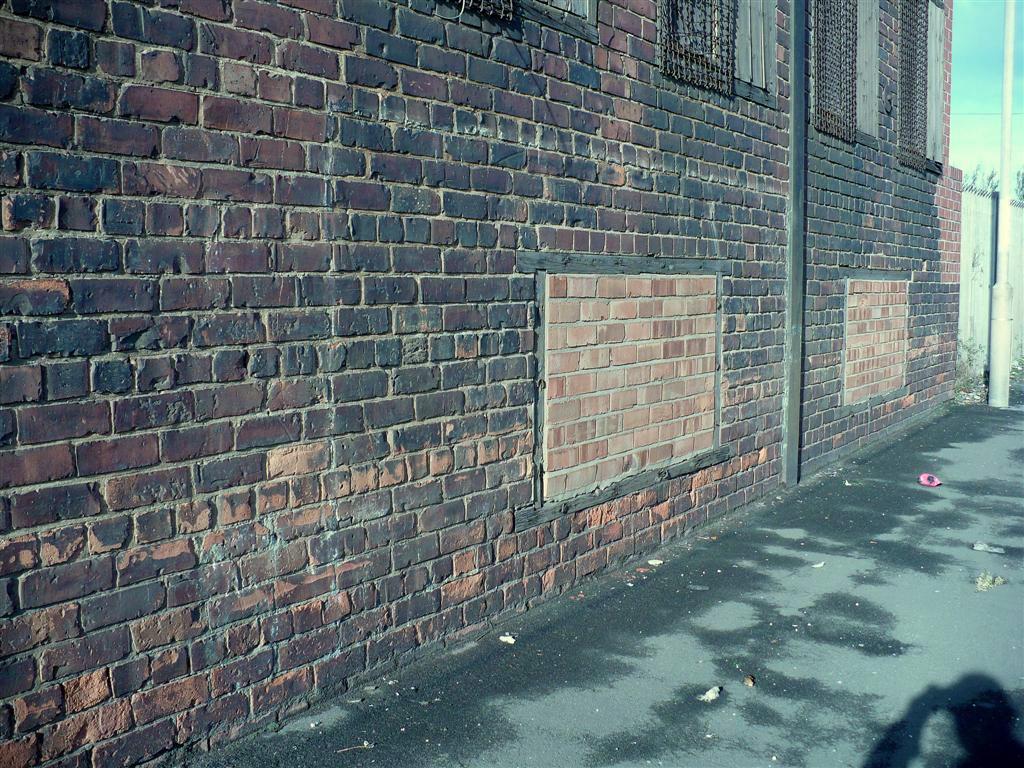
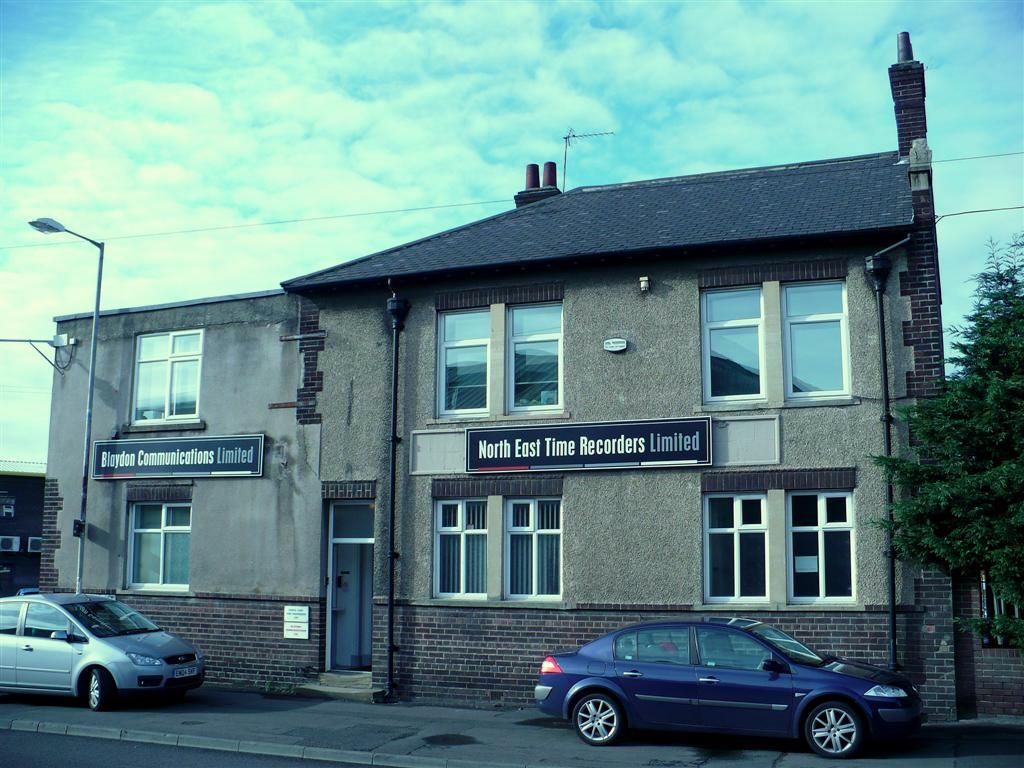
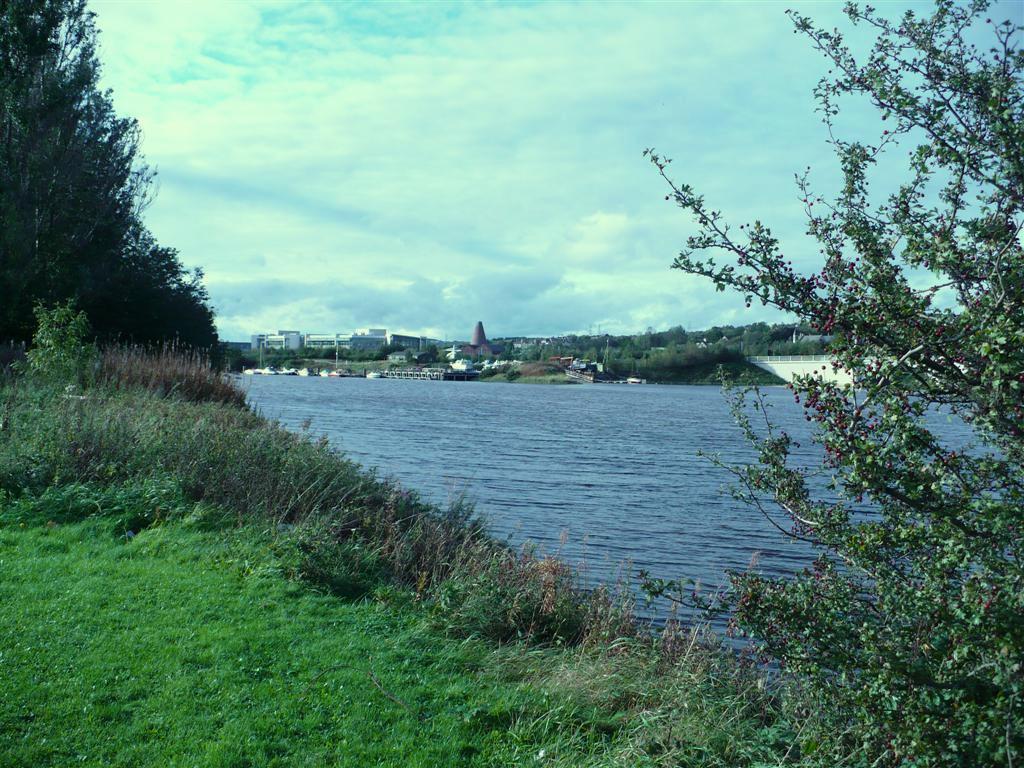
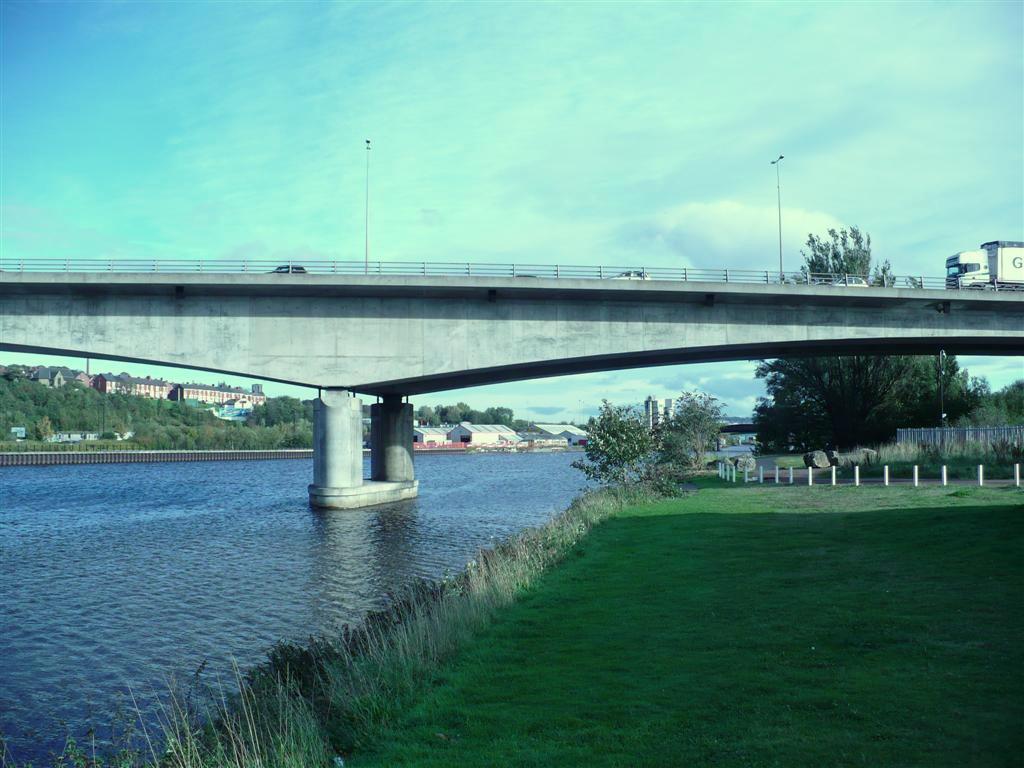
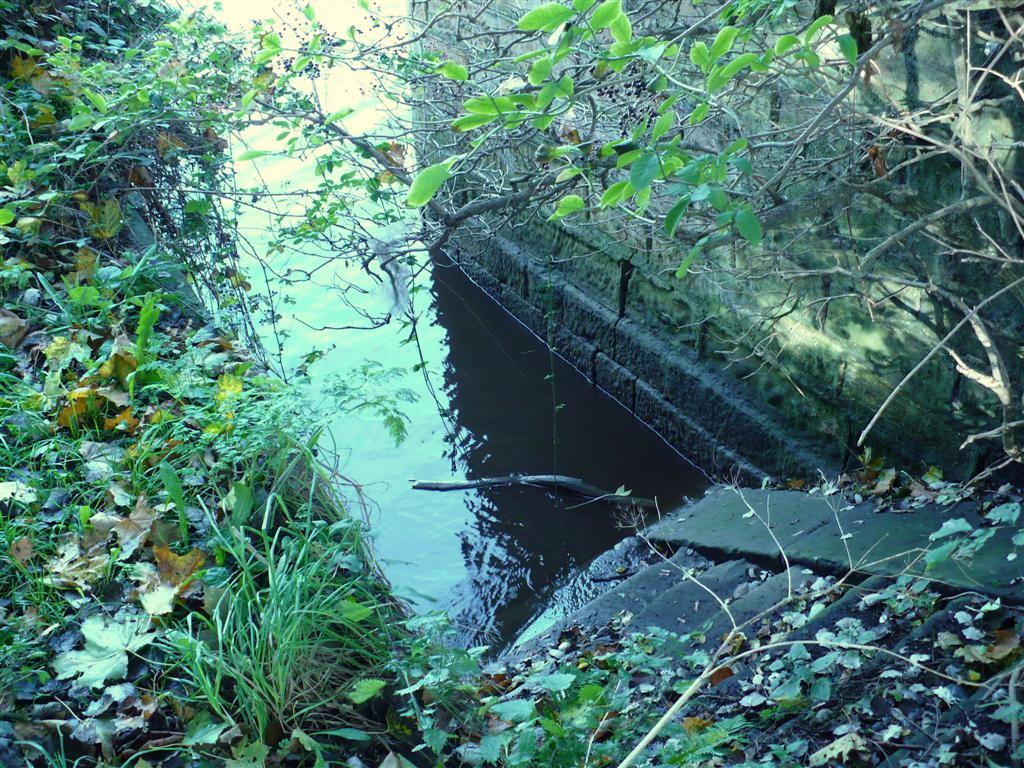
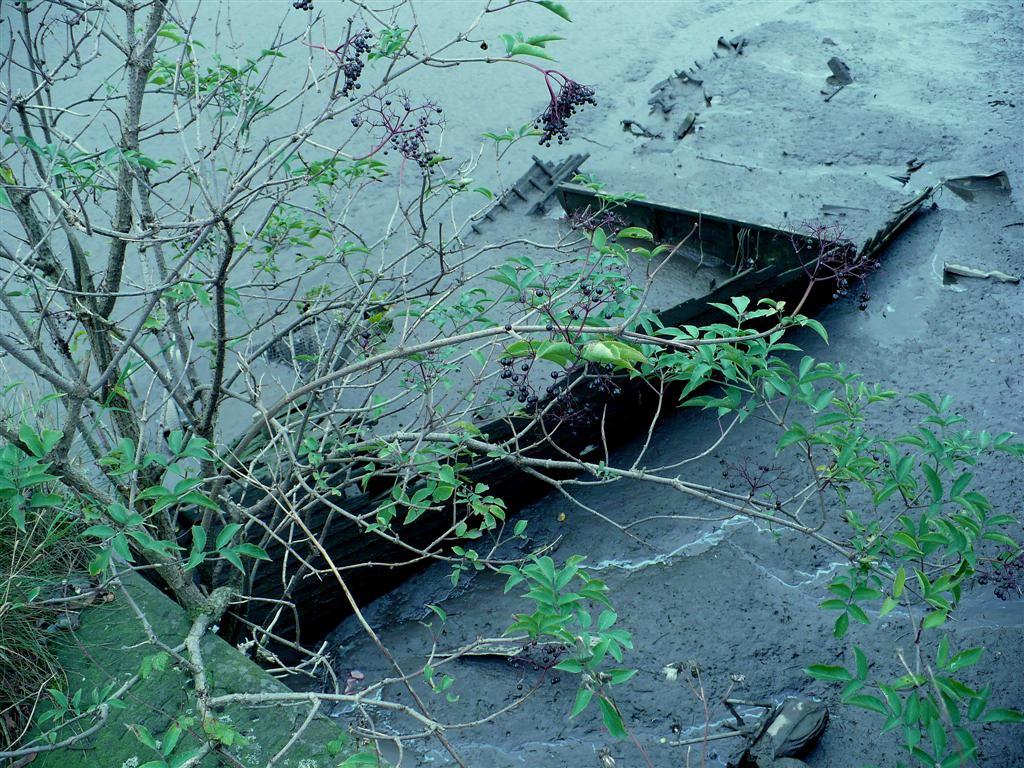
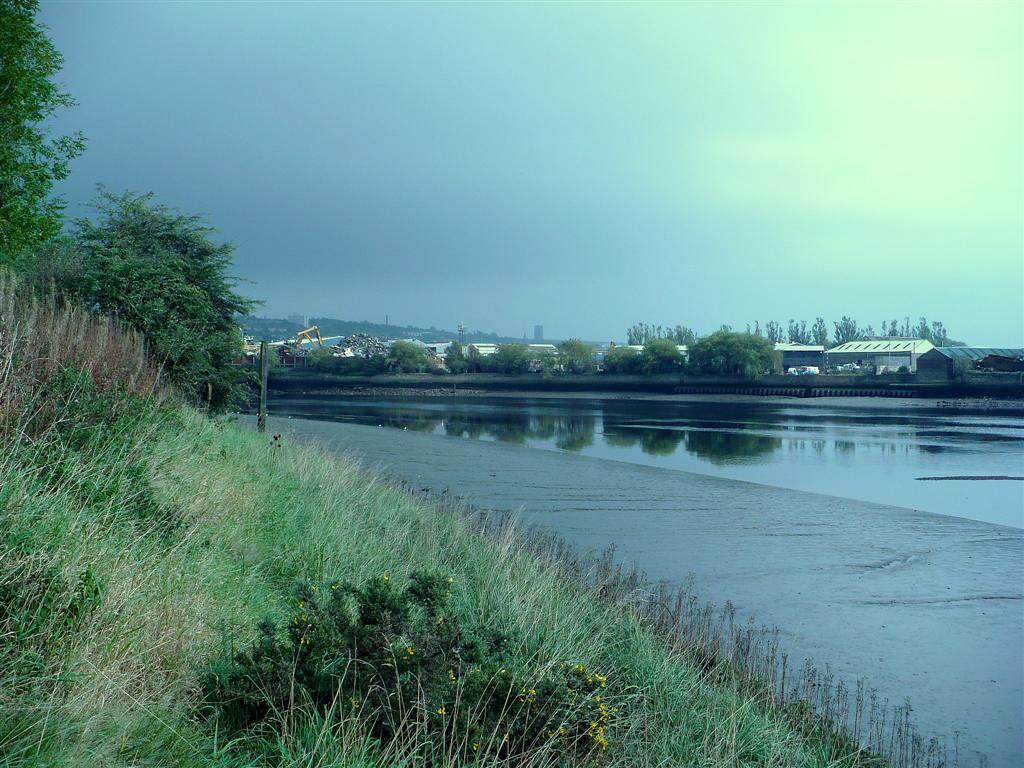
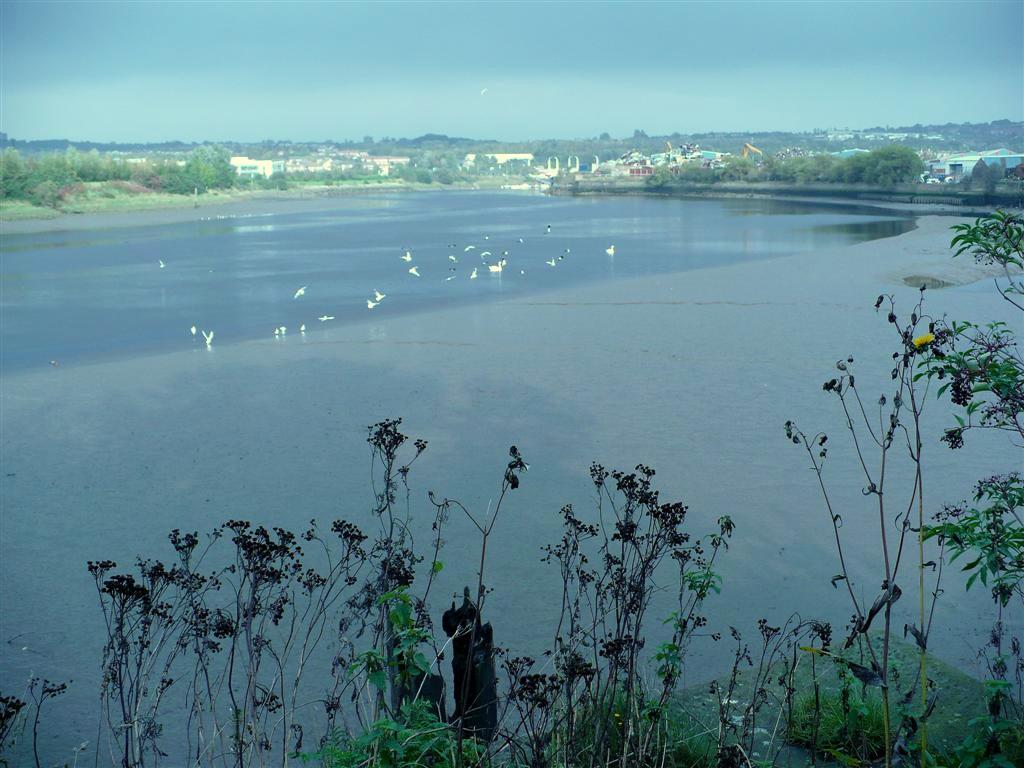
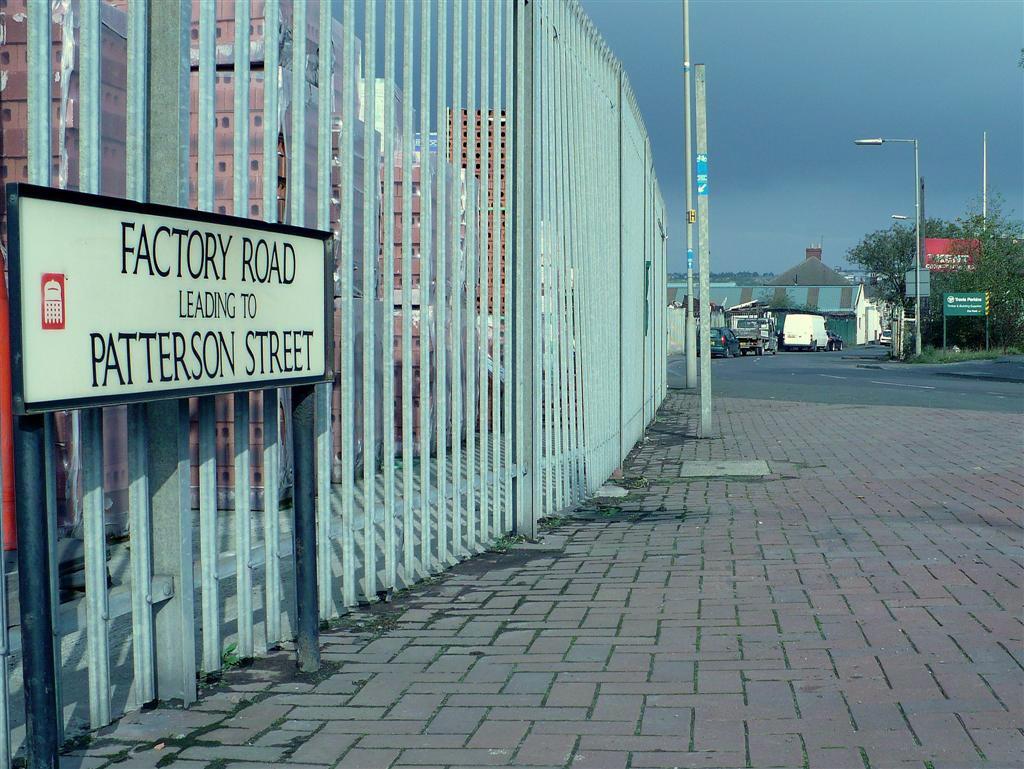
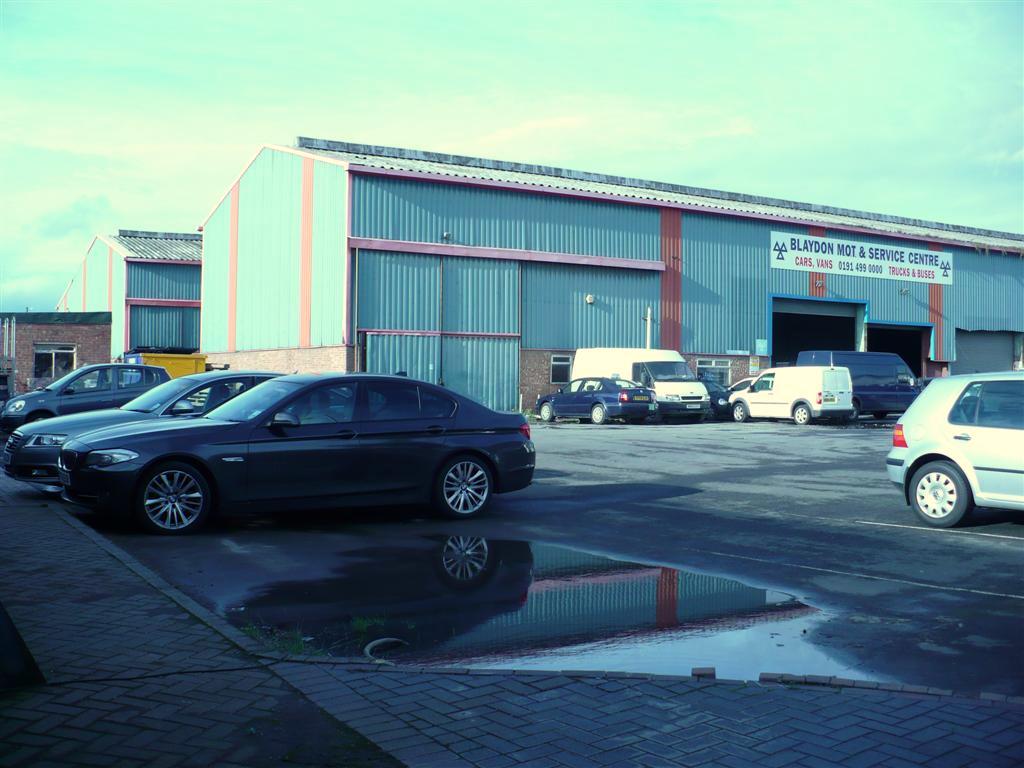
LILY VEITCH (nee Charlton) - MEMORIES OF THE SPIKE
recorded by son Roland during October 2011.
The main road down to the river was Factory Road continuing on to Patterson Street. My grandmother, Harriet Reay, had a good sized shop (a general dealers) at 1 & 2 Patterson Street. It was on the street corner with two big shop windows, one each side. Harriet’s maiden name was Mace. She was from St Ives, Cambridgeshire and moved up here with her father and brother George Mace. Her mother had died when she was a very young child. The other brother went to The USA. Her father died soon after and she was looked after by her grandfather who had a shop in Winlaton. That is possibly how the young Harriet learned the skills required to run a shop. George married locally and had a son George Jnr.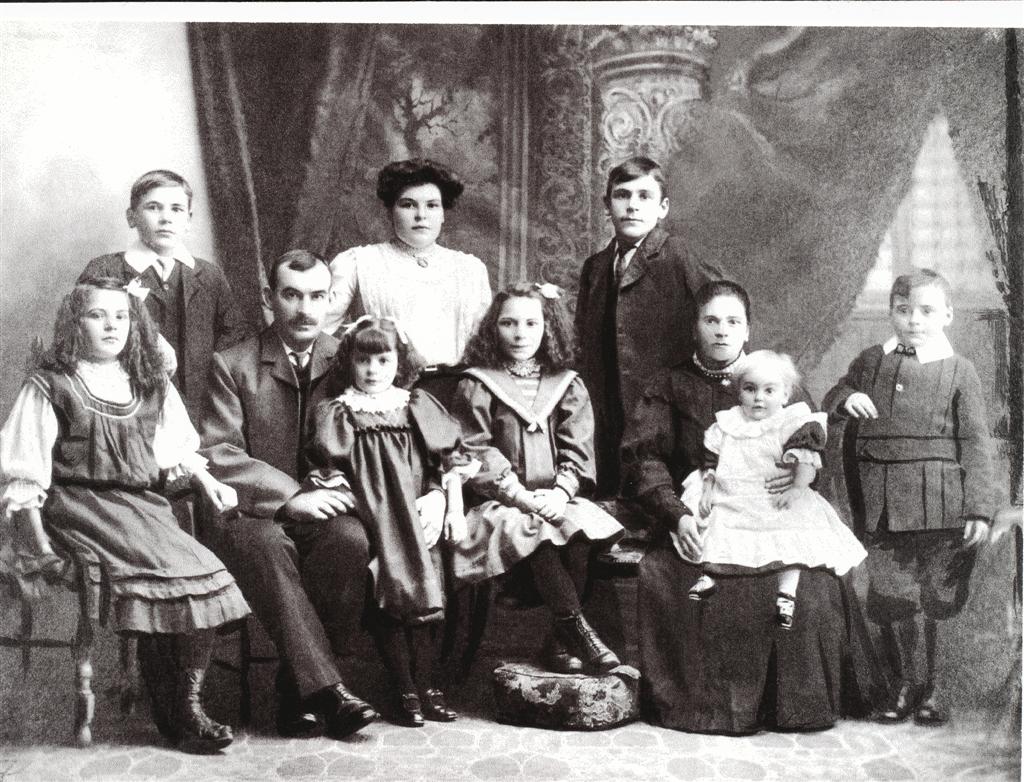
Harriet Mace married William Reay (family photo on the right) – but the shop was in her name. It was a good business despite the people being poor (it was the time of the great depression, 1920s/30s). It was known locally as Reay’s shop. Opposite in Patterson St. was another little ‘house shop' of Granny Leikle (not sure of spelling – she was Danish or Scandinavian) which just sold sweets and a few odds and ends, literally from the home. I often visited her shop for a few sweets. Further down Patterson St. towards Blaydon (on the junction with Townley Street) was also another proper shop (a grocers) + house run by the Amos family (Dora?) and another tiny ‘house shop' of the Hogg family. Also Sally Chapman had a small 'house shop' at the bottom of Patterson Street near the river and I remember a small fish and chip shop near Harrimans.
The Reay family sold their shop to the Idesons who wanted a business for their son to come back to – tragically he was killed during the war. Other Spike families my mother recalls are - Lamb, Lewins, Batey, Jackson, Waggott, Howstan, Stubbs, Lucas, Perna, English, Crumplin, Fox, Liddle, Potter, Somerville, Holmes, Robinson, Amos, Nevin, Dodd, Chapman, Ideson, Burnett, Ainslie, Haddon, Turner, Page, Kelly, Tench, Bennett and Veitch.
Mrs Perna was Italian - she had an ice cream business (run from home, later a shop in Blaydon) – her daughter Toni married my Uncle Stephen Reay – they had children Betty, Harriet, Stephen Jnr and Billy.
Local ‘characters’ had nicknames with an apparent penchant for foodstuffs – Sausage, Teacake, Scone (my brother in law Ronnie (Ron/Scone) who was a pro drummer) also 'Gi' Chapman (husband of Sally mentioned above) who looked after the cricketers hut. There was a cricket team – also I remember a Golden Tigers football team. Mrs Crumplin lived in a solitary house next door to Harrimans Brick Factory (which made fire bricks and sanitory fittings) and near ‘The Spike Castle'. (continued below photos)
Photos below - - -
Top left - The Spike Castle (also known as Turret Place, The Old Castle, Blaydon Castle) in 1926, with Mary Green (right) and her friend. Photo kind permission of Mary's niece Anne Jeavens and Aileen and Colin Porrett. This 'castle' was something of a strange oddity - see the separate essay on it via the index.
Top right - Blaydon Manure and Alkali Company, on The Spike*.
Second right and left - William Harriman and Co, Blaydon Firebrick and Sanitary Tube Works, Factory Road, The Spike and a worker with a finished sanitary fitting*.
Third left - The Bottle House Arms with the 'Spike Castle' in the background - probably mid 1920s**.
Third right - Reay's shop on Patterson Street, with proprietor Harriet Reay at the door - late 1920s or early 1930s**.
Bottom - The daily routine - shopkeeper Harriet Reay feeds the hens**.
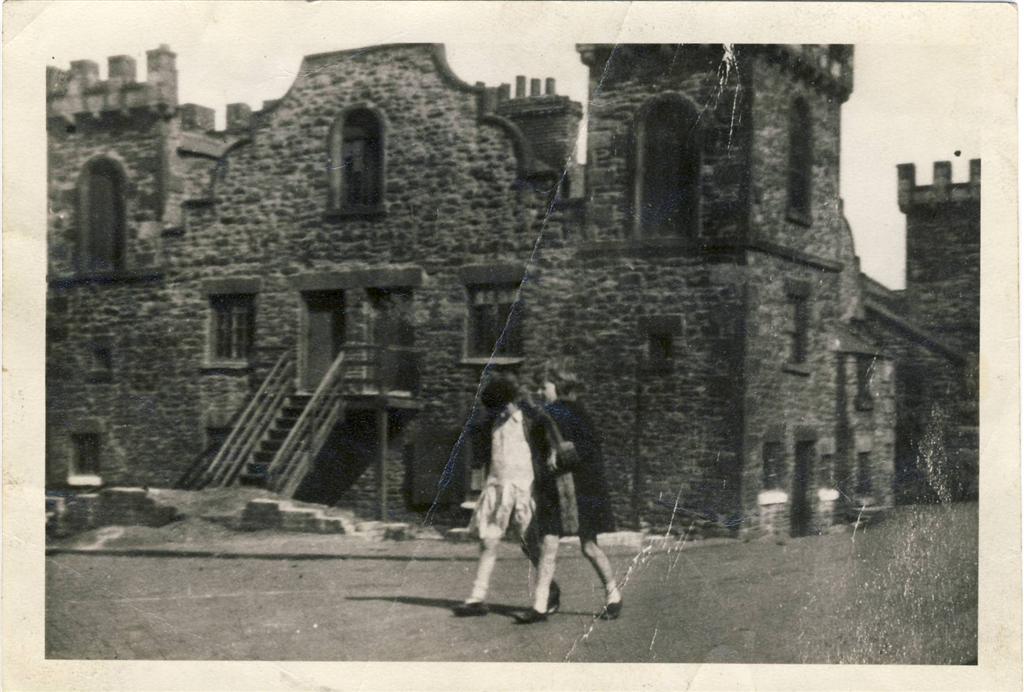

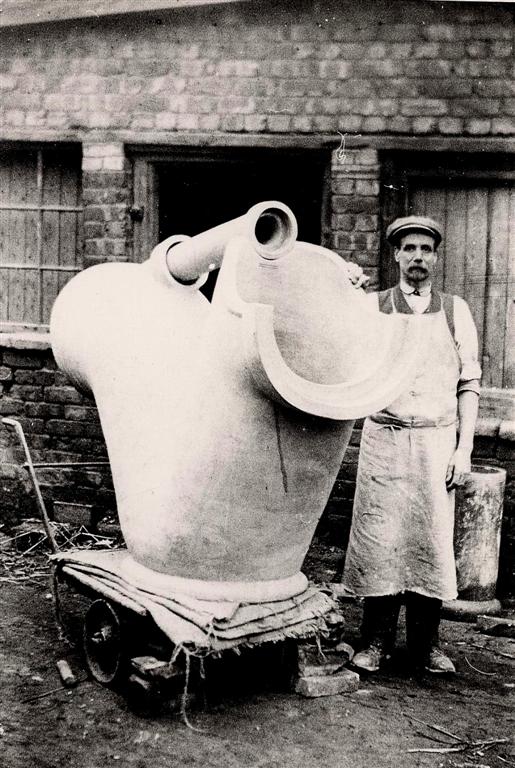
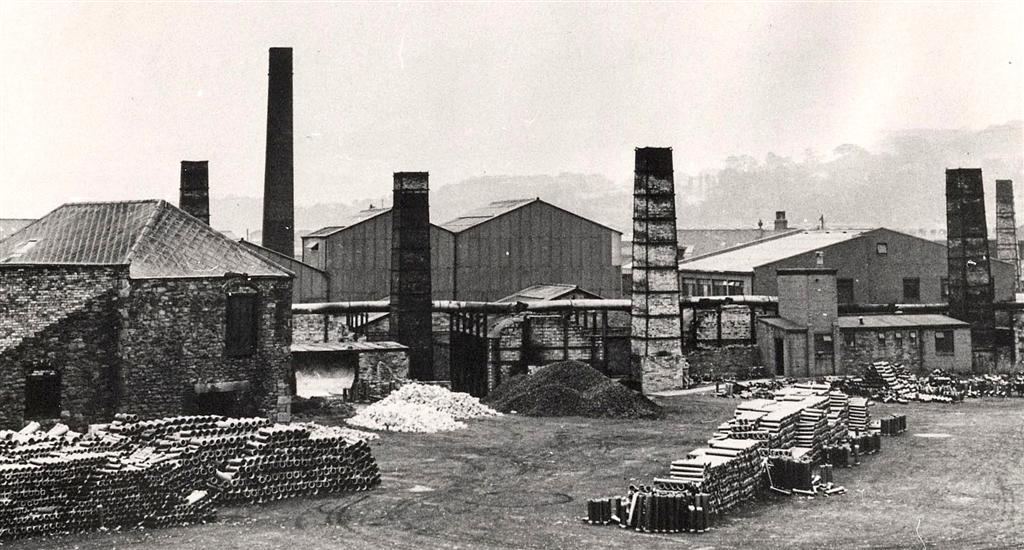
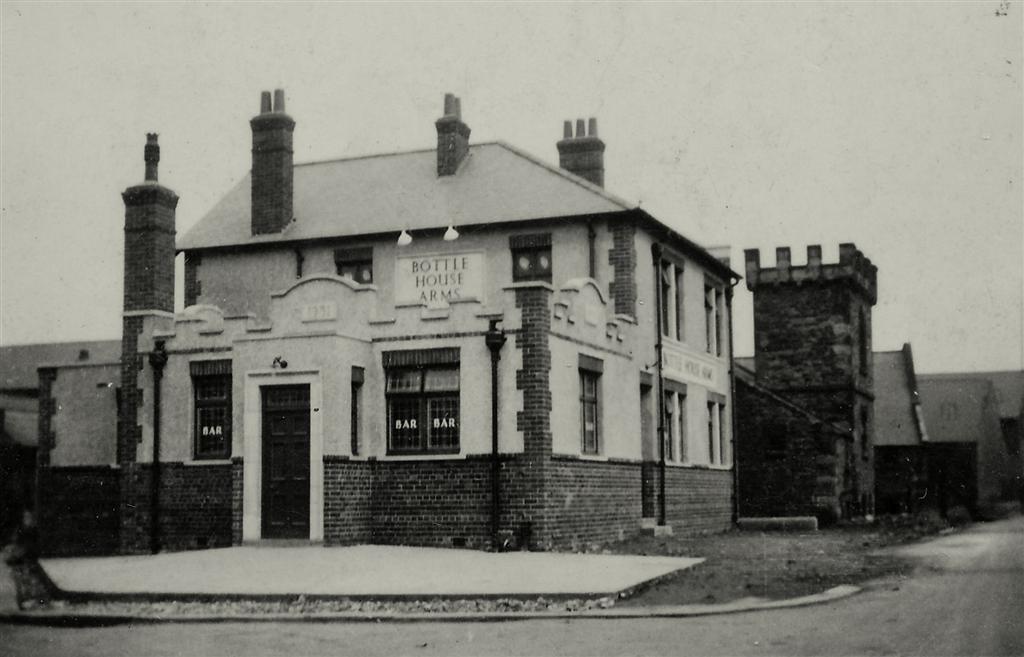


Out of Smith-Pattersons factory came a railway track with its old industrial steam engine (nicknamed 'the jinty' but its actual name was Pioneer) which crossed Patterson Street to link up with the main line from Newcastle through Scotswood and on to Hexham/Carlisle. Near this point were a couple of inhabited railway huts (carriages?) – one by Mrs Meggie Burnett. They were known as ‘the bungalows’. They were kept lovely inside. Meggie Burnett and Aunt Hannah Reay used to clean the offices at Smith-Pattersons.
There were two pubs – one The Bottle House Arms is still there, now business premises. The other, The Pioneer, was demolished.
There was a Primitive Methodist chapel down near the river and also a ‘Mission’ (just a hut) – with Sunday school, visiting preachers etc. The field at the bottom of Patterson Street, near the river, was Hogg's Field. Children played there. Lewins, who owned Primrose Buses, then built their garage on this field. On the right were some nice gardens belonging to the Howstans and, right next to the river, Gi Chapman. Also on the right and beyond these gardens, and very close to the river, there were some inhabited wooden huts (about six I think). They were very basic but kept neat and tidy. Also beyond these gardens and set back from the river a bit was the cricket field. The railway line at the far side of it. The cricketers hut was a glass building - Gi Chapman looked after it.
Down Factory Lane was the foundry of Smith Pattersons & Co Ltd – they made railway track chairs, tunnel castings, manhole covers, drain covers, mechanical feed stokers (for coal power stations) which were sent to Japan. My husband Jim (and his father) worked there as metal dressers – a filthy, dangerous to health job, cleaning off the rough castings. No masks in those days! There was another foundry, Douglas Bros and The Lampblack Co. which also made a black dye for things such as shoe polish. I remember the workman coming out - they were absolutely covered in black dust. Smith-Pattersons factory wall still exists on Factory Rd. – on it still are the painted goal posts and wicket where the local boys played football and cricket.
My parents were Annie Charlton (nee Reay) and Robert. My brother is Wilfred Charlton now of Crawcrook. Robert’s mother Catherine was from Winlaton. His father from Carlisle. Annie was daughter of Harriet/William – her siblings were Jack, Thomas, Stephen, Esther, Lucy, Libby, Hannah and George, who was given the full name George Mace Reay.
My husband Jim's parents were Ellen (nee Danskin) and William Veitch. His siblings were Isabella, Evelyn, Norah, George, Norman, Lawrence, Ronald (Scone). Jim was given the full name James Danskin Veitch.
Additional comment from Roland Veitch
From my mother’s recollections it is clear the Spike was a rather special place (a part of Blaydon yet apart and indeed with rivalries among the youths) – a very close knit and contented community where folk were mostly poor (due to the great recession with much long term unemployment) but they always helped each other. Everyone knew each other. There were happy days playing games in the streets, in the nearby fields, along by the river (many went swimming, fishing and there were boats etc). She has very fond memories of these times. Her family moved up to Low Town End, Winlaton when she was still a young child then back to Oswin Street, Blaydon in late 20s or early 1930s but she spent much time visiting her grandmother, helping with chores in the shop etc. My father’s family remained in Townley Street till compulsory purchase/clearance in the late 60s – much of old Blaydon was demolished then too. My parents got a council house in Winlaton in the early 50s having married in 1945.
My father's grandfathers were keelmen/watermen – probably among the last. The Danskins were from Bell's Close, just over the river and west of Scotswood, on the north bank. Many went into the factories and pits as keelmen’s work became obsolete due to the rapid growth of the railways, river dredging, staithes etc. Interestingly an old 1895 ordinance map of Blaydon lists various business people/traders etc. It has James Veitch (waterman) of Blaydon Haughs and John Danskin (waterman) of Summerhill, near Stella.
Photo right - Cowen Street on The Spike. Outside toilets and no electricity but it was home sweet home.
EMPIRE DAY PARADES ON THE SPIKE
Empire Day was intended to be a celebratory day that would remind children in particular that they formed part of the British Empire, that they might think of others in lands across the sea. The idea had been considered as early as 1897, built around the image of a motherly Queen Victoria at its head and to be shared by an empire spanning almost a quarter of the entire globe. However it was not until after the death of Queen Victoria, who died on 22 January 1901, that Empire Day was first celebrated. The first took place on 24th May 1902, the Queen’s birthday. Although not officially recognised as an annual event until 1916, many schools across the British Empire were celebrating it before then. The patriotic Spikers were no exception. Huge efforts were made to prepare decorated themed floats, the children would be dressed up, there would be home made refreshments and a wonderful day made of it. Here are a few photos of these parades down on the Spike, taken probably late 1920s - early 1930s. Thanks to Ann Robson for these old family photos. Some may have been taken by her uncle George Reay, who was one of the first Spikers to have a camera. George was also a fine pianist who was often involved in the organised self entertainment eg. dances and communal 'sing songs' at The Mission etc. In those days folks made their own amusement.
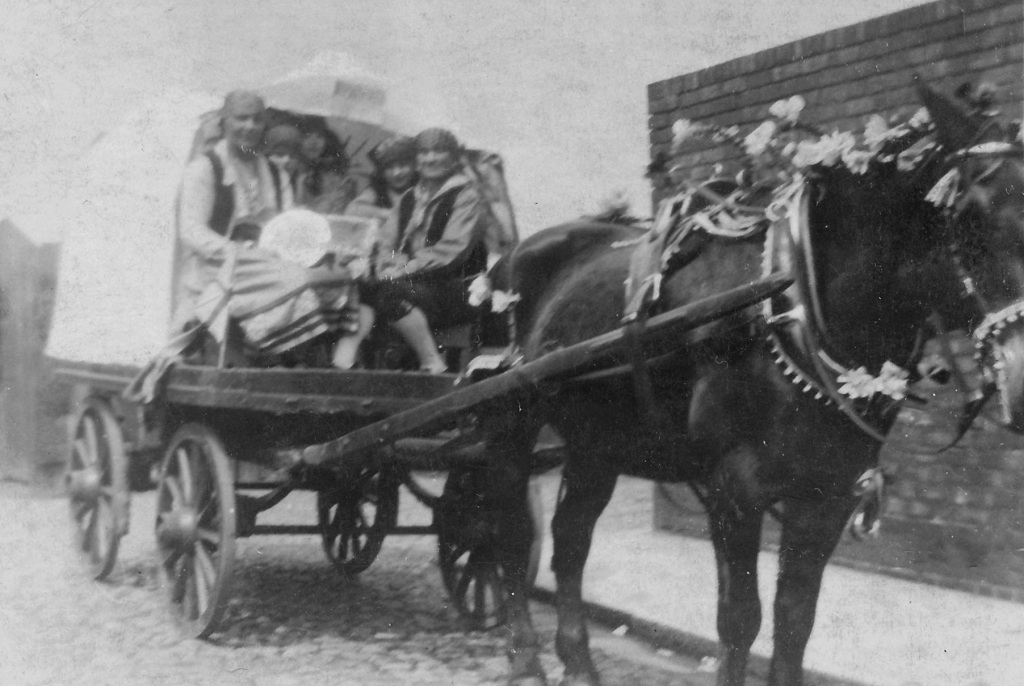
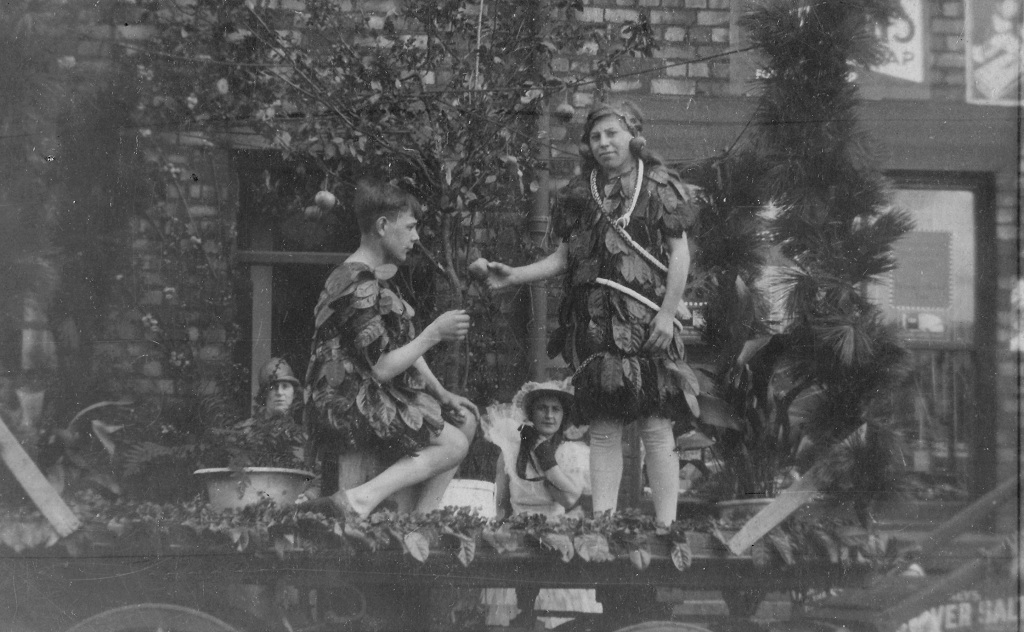
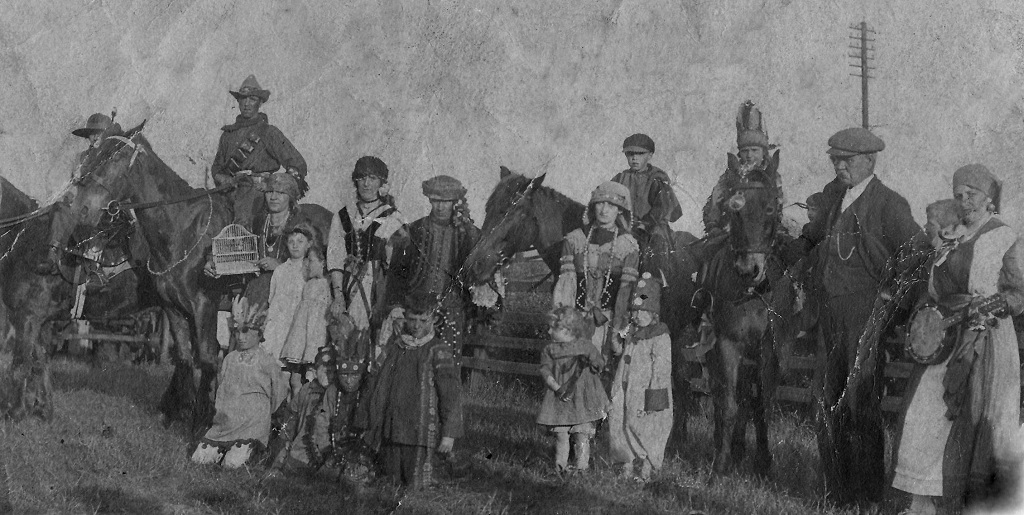
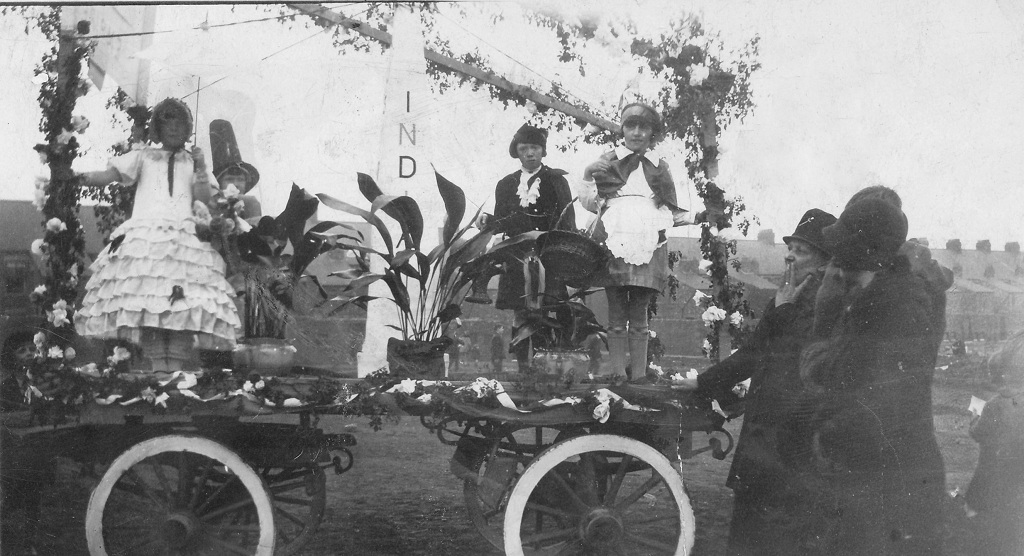
BLAYDON CO-OP HORSE SHOWS
Talking of parades, the Blaydon & District Co-operative Society held an annual horse show. Blaydon's was one of the first Co-op stores in the country. Before mechanised transport they used horses and canvas covered carts to do deliveries of food/veg etc. On the big show day the horses were all thoroughly groomed, decked with head plumes, leather and polished brass apparel and generally looked fantastic. The horses were from many local Co-ops and were prepared at the Co-op stables in Blaydon, just at the rear of the Co-op store in Church Street. The parade then proceeded to where the the show and judging took place, in a big field just off Chain Bridge Road, lying between the road, the river and The Spike. One of the Co-op cart drivers was George Telford, who took particular pride in his horse. This day was another very popular social occasion for all Blaydon folk. Thanks to Spiker Wilfie Charlton for this information.
THE SPIKE - MEMORIES OF MARY GREEN (see separate essay on 'Blaydon Castle')
Mary Green was born 1917 in a building called Blaydon Castle or Turret Place, at Blaydon Haughs also known locally as 'The Spike'.
“ I will proceed to give you the history of 'The Spike' and 'Blaydon Castle' before I tell you of our lifestyle there”.
Below is an exact transcript of two texts Mary dictated and signed when she was 80 years of age. It is a wonderful document and I am grateful to Colin and Aileen Porrett and to their friend Anne Jeavens, for their very kind permission to include it on this website. Anne is Mary's niece.
Text 1 (a single A4 page) - - - The Spike was the name given to that part of the town also named Blaydon Haughs. 'Spike' is an Irish name for a lodging house, and the district was so called by the large contingent of Irishmen working locally and living there in the 1860s.
The original lodging house which gave The Spike its name was probably the building known as Blaydon Castle. Whilst not a military building it was of castellated structure and properly known as Turret Place. Although obviously a building of great pretensions in its later days in the 1880s it was made into tenements and housed eight families. The council's pre-war clearance resulted in its demolition. It was a large building, square in plan, of good quoining and rubble masonry which had a broad Dutch gable on each face with corbelled and crenellated turrets at each angle. Many of the original windows were large round headed openings and judging from these details the castle was built in the days of King Charles II.
We can hazard a guess as for which family the house or castle was built. It's site formed part of the Selby estate in Blaydon, this is shown on the map facing page 68 of our 'History of Blaydon', as Sir William Selby's Haugh. The castle stood in the waist of this plot. As a result of the Civil War and family tragedies, in the mid seventeenth century the Selby family entered upon hard times. Sir George Selby was forced to sell off his estate in parcels and as a result, the Claverings acquired the White House and adjacent lands and in 1675 the rest of the Selby share of the Lordship of Winlaton was bought by Sir William Blackett. But members of the Selby family continued to live in Blaydon for on the 4th January 1721, Mrs Frances Selby of Blaydon was buried in the choir of the church at Ryton. We think it highly probable the Selby's resided in the castle.
The Spike was in reality a village on its own, divorced from Blaydon by the railway. There were six streets of houses, Pioneer St. Townley St. Victoria St. Cowen St. and at right angles to these Douglass Tce and Patterson St. There were two pubs, The Bottle House Arms and The Pioneer. The former stood to the south of the 'castle' and the latter at the end of Pioneer Street. The Pioneer had a most beautiful doorway, with hooded canopy.
Text 2 (comprising four A4 pages) - - -
The Selbys, Blaydon Castle, life on The Spike and in Blaydon
Page 1 - - - It was the late sixteenth century and the beautiful Mrs Francis Selby could often be seen walking from her castle along the banks of the River Tyne. She would stand smiling at the fishermen as they haulded in their nets full of the most beautiful salmon. The River Tyne at that time was a pleasure to behold – clear, clean, glistening water in which the salmon excelled. Francis would undoubtedly return to her castle on the 'Haughs' and she would not be empty handed. She was thought very highly of by the workmen and all who knew her.
Let me tell you the history of this castle which was in that era the home of the Selby family. It was known as 'Blaydon Castle'. Whilst it was not a military building it was of castellated structure and was a building of great pretensions. It was square in plan, had good quoining and had a broad Dutch gable on each face with corbelled and crenellated turrets at each angle. The windows were large round headed openings. Its details all pointed to the castle having been built in the days of King Charles II.
The castle was built for the Selby family – its site formed part of the Selby estate in Blaydon. Sometimes it was known as Sir William Selby's Haugh. As a result of the civil war and family tragedies, the Selbys fell on hard times and in the early seventeenth century were forced to sell off the estate in lots. These lots were bought by Sir William Blackett and the Clavering family. Members of the Selby family continued to live in Blaydon for in 1721 Mrs Frances Selby was buried in the choir of the church at Ryton. It was highly probable she still lived in the castle until her death.
The castle remained the home of the Selbys but later was deserted by them due to costs (of upkeep). In 1800 it was made into tenements and housed twelve families. It was said Frances Selby never did leave her castle as on more than one occasion she was seen by many gliding around, a ghostly apparition and still smiling.
Page 2 - - -
Now getting on to the tenements. They were mostly occupied by Irishmen who got local work, for by this time Blaydon Haughs had turned into a hive of industry. Factories were popping up like mushrooms. There was a chemical works, a sanitary pipe works, three engineering works, a glass bottle factory and a lamp black factory. My forbears happened to be one of the families who lived in the tenements – I myself was born there in 1917.
The tenements consisted of two large stone floored rooms and two very small rooms. The living room had a huge fireplace which had a large, round oven. The ceilings were heavily beamed, the beams must have been oak but were coal black with years of smoke. The walls were rough cast plastering so could not be wallpapered – people kept them whitewashed. There was no hot water and no electricity. All the tenants had oil lamps. The oil man called each week with his oil drums on a horse drawn cart. The toilets were dry closets or 'netties'. Two men referred to as /midden men' came each week to clean these out. They shovelled the rubbish out from a small hatch at the back of the closet.
Each tenant had large tubs called 'poss tubs'. These stood outside the door and were used for washing clothes in and also for the family bath tub. Filling the tubs with hot water was quite a task, remembering that all the water had to be boiled in pans, kettles and whatever else could be used on the fire. It was a regular thing for either one woman or two who had their tubs filled to grab all the kids playing around and strip them, scrub them, wash their hair and send them off home to have their hair combed. Actually the tenants in the castle were one big family – very close knit and protective of one another. None of the children came to any harm, as someone was always around to keep an eye on them as if they were their own.
Some of the men kept pigs, others had poultry and others had allotment gardens. There was always a pan of broth, a side of bacon and a roast of pory for everyone. The fresh eggs went mainly to the children and the very old.
The castle was on its own – it was divorced from Blaydon by the railway at one side, divided by fields, was the little village named The Spike.
Page 3 - - -
The Spike had six streets of houses, two ale houses and two chapels, one methodist, the other a little tin hut – it was Anglican. On the other side in Blaydon was a Roman Catholic church. Blaydon was a very quaint old market place – the shops, which were very small, were more or less built around a large square named Wesley Square. Any meetings or gatherings congregated in Wesley Square – on a Saturday night you could be entertained by the speakers of different religious sects shouting to the crowd in the ways of the Lord and damnation. The opposition would throw old fruit and tomatos at the speakers but this did not deter them. They would brush themselves down and continue to shout their anthems. The shops in Blaydon were all low, stone floored little places at that time. The roads leading to it from the railway were all cobbles and at regular intervals were the old horse troughs for the horses to drink – the horse cabs being the main conveyance to travel. The shops were small but plentiful. There was a cloggers, a boot and shoe shop, a milliners, a tailors, a hardware shop, a blacksmiths, several butchers, bakers and even candle stick makers. The candlesticks were mainly used by the miners. In those days they were a small tin affair with a sharp spike at one end which they pushed into the pit prop – this held the candle.
At Christmas time it was fairyland for the children going to the shops at Blaydon. One shop competing against another in Christmas décor and Santa didn't have his reindeer, he always turned up in his horse driven trap. I think the biggest fascination was the butchers shop window, always with his pig heads in there – they were done up with holly and had an orange in their mouths. The ducks and geese always were well decorated with holly and small sugar pigs etc. surrounding them – it was childhood magic. It did not matter that Santa only left them a sugar pig, an orange, an apple and a new penny.
Dare I say a funeral in those days was a very grand affair, also very mournful. The night before the internment the men of the castle gathered at the home of the deceased and had the wake. This was sitting up all night with the dead. It was unheard of for a dead person to be left alone. No need to say the whisky ran freely all night also the old clay pipes were handed around with free tobacco.
Page 4 - - -
The funeral coaches were magnificent, black, shining horse drawn coaches. The horses drawing these coaches were black and groomed until their coats shone like black silk. They had black feather plumes done up with the black ribbons. The hearse was figured glass panels and the horses drawing the hearse were very special indeed. Everyone went to these funerals – they walked two abreast behind the mourning coaches all the way to the Blaydon cemetary. Afterwards there was quite a spread, roast hams, pease pudding, pickles, cakes of all descriptions and of course the large spice loaf. I remember this beautiful old castle being demolished, it will be 68 years ago now. It will be remembered with nostalgia and affection by anyone who is still living who lived there. Alas the site is now given over to industry. I wonder if Frances Selby left it too.
Signed - Memories - by Mary Green (age 80 years)
SPIKE MEMORIES OF IRENE & PEGGY HOWSTAN ( Howsty)
I went to visit sisters Irene and Peggy at the invitation of Irene's daughter Margaret. We spent an enjoyable hour talking about their very fond memories of The Spike. Its clear they loved the place and their happy childhood there mean such a lot. Some of the general recollections are already documented elsewhere in this essay but here are some additional memories and anecdotes. There were four siblings – Annie and brother William (Billy Howsty) are deceased. Billy Howsty was a well known local coal merchant.
Roly Veitch. 30th Jan 2013
The Spikers were extremely clannish and looked after each other. They did not willingly give information to strangers and if someone asked questions they would be immediately suspicious and ask 'why do you want to know?' Spikers new they were very poor ('the lowest of the low') but they were one big family.
Mary Howstan each day used to give water in a bucket to Dobbin the horse which was in the nearby field. One day there was a knock on the door – when they opened it Dobbin was stood there. It wanted its water!
There was no doctor on the Spike – any illness meant a journey up into Blaydon to the surgery. They paid 6 old pence a week for a form of health insurance to cover the cost of medical treatment for the family. This was pre NHS and whilst it was a struggle, most families paid for the cover.
Their friend Ginny Kelly's mother made toffee apples and toffee cake, sold from the house. Mary Howstan made pies and peas and sold them from her house shop. Sally Chapman and Meggie Burnett had house shops too. These 'house shops' were a part of Spike life – folk making a few things, food, sweets etc. and sold them from their home to make a few pence. Some families took turns to have the shop at their homes – one week each. Folk had to be resourceful – they all made hooky mats, home made Christmas decorations (gourdes), clothes and so on.
On Empire Day Parade Day all the children received an apple and an orange in a brown paper bag.
There was an Italian family - the Pernas. Old Mrs Perna did speak broken English but Mr Perna never did learn English. They made lovely ice cream (isa creama) – in the back yard! They sold it from their 'house shop' but also had a cart and later an ice cream cafe type shop in Blaydon. Mrs Perna used Sarsaparilla to dye Easter eggs (paste or pace eggs).
Hoppings Day (a travelling fun fair) was a great day for the children. The traveller who owned the various rides was called Hoadley.
The children once a year went on a day trip, by train, to the seaside (Whitley Bay, Cullercoats or Tynemouth). That was another great day.
Davy Howstan had a pig on his allotment. When fattened up, he had it killed for food but when it came to it he just couldn't face eating it. The allotments were just over the road from the Patterson Street houses. Beyond them was a field, then the railway. Hogg's field was down at the bottom of Patterson Street next to the river, on the left hand side. The river was clean (1920s/30s) and they would swim, and there were fine salmon too.
Tommy Hogg had the first car on The Spike. He had a garage type building but sadly there was a fire and two horses stabled there were killed.
John Lewins had the only phone on The Spike and had a notice on his house wall 'You may telephone from here' for a nominal charge towards the cost of it. He later had a newsagents shop in Thomas Terrace, Blaydon.
The children played in Gi Chapman's garden and the cricketers hut that he looked after but they had to obey his strict rule 'keep off the vegetables'.
Their grandmother Annie Burgess Ivison got the first house to be built in Pioneer Street. The terraces were just being build at that time and Joseph Cowen was involved in the building. This would be in the late 1860s to 1870s. The cement used to build them had thousands of glass marbles mixed in – it somehow strengthened the cement.
On the day Olive Hall was born, in the wooden houses down on the riverside, a water rat (water vole?) was seen to run over the bed. Talking of births and deaths – they were invariably at home with family and neighbours all helping in any way they could.
BLAYDON HAUGHS INDUSTRY IN THE LATE NINETEENTH AND EARLY TWENTIETH CENTURY
By the year 1850, Blaydon possessed a thriving and important trading community. Manufactories lined the side of the river, many of them on The Spike. Industries of nearly every description were commenced. On The Spike alone the following works were in active operation.
North Durham Bottle Works
A. Thatcher, glass manufacturer
W. C. Carr, clay-retort manufacturer
W. Harriman, fire-brick manufacturer
R. Hall & Co., chain manufacturers
Blaydon Chemical Company
W. G. Hawdon, engine builder and founder
R. Lynn, lamp-black manufacturer
B. Stokoe, fell-monger
By the early part of the twentieth century there were several quite big employers on the Spike, biggest being Smith Patterson. Here are some details about them and what they did, obtained from various on-line sources.


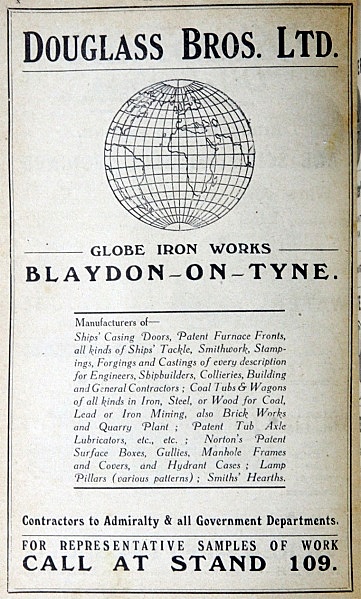
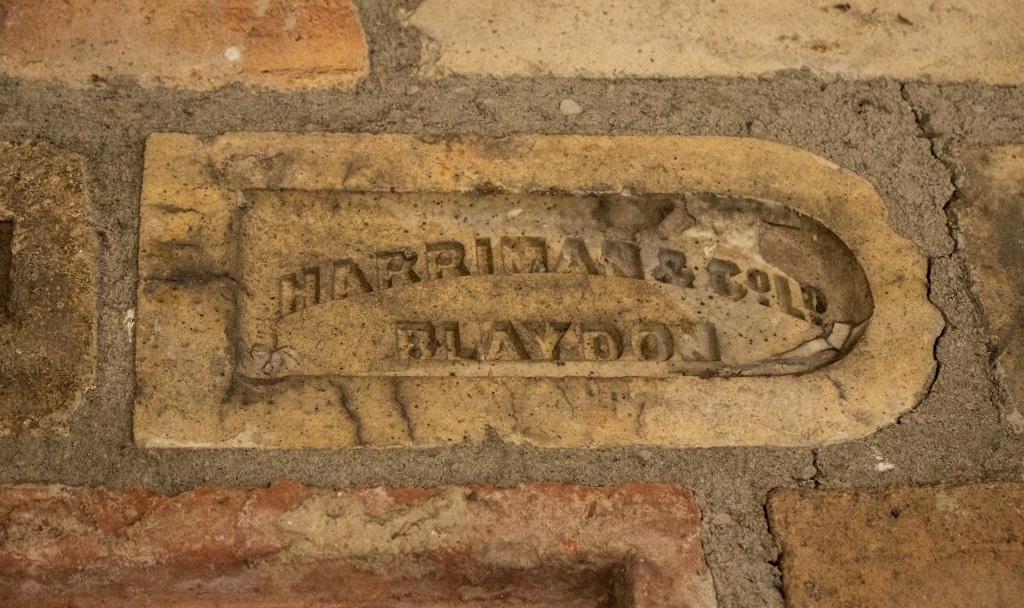
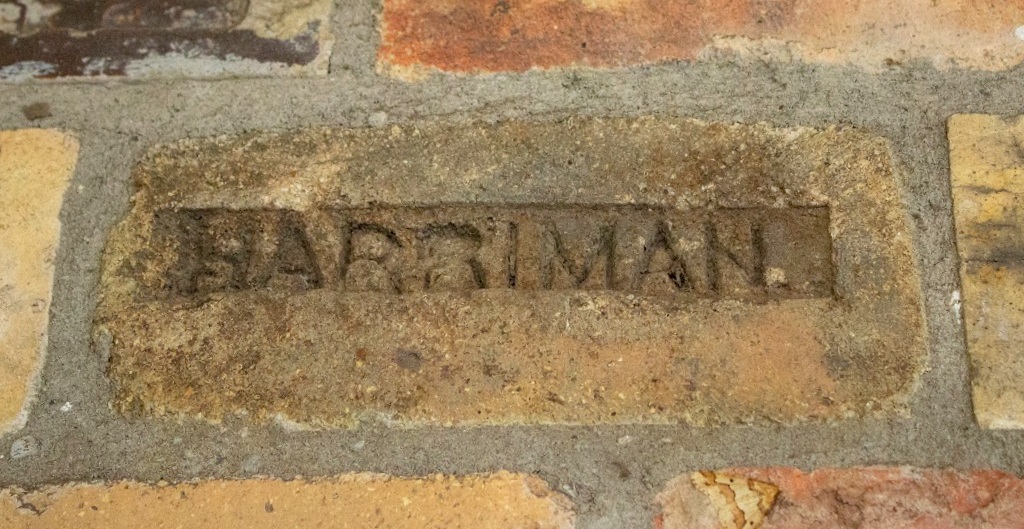
William Harriman & Co Ltd
The Company was founded by William Harriman some time before 1856. Whellan's Directory of County Durham for that year records the company as William Harriman and Co, Blaydon Firebrick and Sanitary Tube Works. Harriman's home was at Bells Close. By 1864 the Company also had a Newcastle office in Neville Street, but by 1872 the registered office had moved to Fenkle Street, Newcastle. The firm was still in existence at Factory Road, Blaydon until at least 1966
The Lamp Black Co.
Carbon black (also known as acetylene black, channel black, furnace black, lamp black or thermal black) is a material produced by the incomplete combustion of heavy petroleum products such as FCC tar, coal tar, ethylene cracking tar, and a small amount from vegetable oil. Carbon black is a form of amorphous carbon that has a high surface-area-to-volume ratio, although its surface-area-to-volume ratio is low compared to that of activated carbon. It is dissimilar to soot in its much higher surface-area-to-volume ratio and significantly lower (negligible and non-bioavailable) PAH (polycyclic aromatic hydrocarbon) content. However, carbon black is widely used as a model compound for diesel soot for diesel oxidation experiments. Carbon black is used as a pigment and reinforcement in rubber and plastic products. The current International Agency for Research on Cancer (IARC) evaluation is that, "Carbon black is possibly carcinogenic to humans (Group 2B)". Short-term exposure to high concentrations of carbon black dust may produce discomfort to the upper respiratory tract, through mechanical irritation.
Douglass Brothers Ltd Globe Iron Works
In 1864, Douglass Brothers leased some land at Blaydon on which they had recently built the Globe Iron Works. This was part of a plot of 7 acres leased to Thomas Young Hall of Stella House, colliery viewer, in 1841 and which he had gradually sublet in smaller sites to various manufacturing industries. In 1871, Douglass Brothers and William Harriman and Alexander Watson, fire brick manufacturers, who also leased part of the site, agreed to buy the leasehold of the whole 7 acres from the executors of Thomas Young Hall who had died on 3 February 1870. Douglass Brothers had an iron foundry and general engineering works, manufacturing colliery equipment including coal tubs, ships doors etc, and drop forgings. The company was taken over in 1973 by Edward S Johnson, but still traded under the Douglass Brothers name, though in engineering rather than as a foundry.
Smith Patterson & Co. Pioneer Foundry
1870 Company established.
1873 Incorporated as a Limited Company.
1891 Advert. Iron and brass founders.
1897 Company reconstructed and capital doubled.
1911 Manufacturer of Railway Plant for the Railways.
1914 Directory: Listed as Iron Founders.
1914 Ironfounders and Engineers. Specialities: turbine and all high-class engine and other castings, sanitary castings, railway chairs, axle boxes and all kinds of castings for railway work, tunnel segments for underground railways and sewers and all descriptions of castings up to 40 tons.
1954 Private company formed as Smith Patterson (Blaydon) Co. Ltd.
1954 Name changed.
1961 Engineers and ironfounders. Manufacturers of iron castings, chairs for sleepers, tunnel segments, manholes and builders' merchants castings. 400 employees.
The Blaydon Manure and Alkali Works Ltd. (also known locally as 'The Chemical Works')
Witherite (barium carbonate) from the former lead mine at Settlingstones was processed at the Blaydon Manure and Alkali Works Ltd on Blaydon Haughs, which in peacetime just made Sulphuric Acid and Fertilizer but during WW2 the resulting Barium Sulphate was supplied to both Ilford and Kodak for use in their photographic products as used for arial reconnaissance.
Blaydon Bottle Works
In 1854, Anthony Thatcher established Blaydon Bottle Works. Later, Alfred Alexander, Anthony Thatcher, James Battle Austin, and Henry Poole formed a partnership, the Blaydon Glass Bottle Co., to operate the Blaydon plant. The plant eventually was to become Alfred Alexander & Co. The Blaydon plant made 'pale' (very light aqua) bottles, especially soda water bottles, confectionery bottles, and chemists bottles as well as amber, green and blue chemists bottles.
- - - - - - - - - - - - - - - - - - - - - - - - - - - - - -
ANECDOTES, MEMOIRS & MEMORABILIA.
Roly Veitch remembers as a youngster going down Factory Road, Blaydon Haughs when sometimes you had to wait till a small steam engine, on shunting duty, crossed over the road. The railway track emerged from a factory, went over Factory Road, and joined the substantial goods and carriage sidings to the north of the Newcastle to Carlisle main line. This little steam engine was fondly known as 'The Jinty' to the Spikers. His uncle Wilfie Charlton recalls there were two engines - the oldest one, called Pioneer (shown in the photo) was replaced by a newer steam shunter but Pioneer was kept in shed and still used occasionally when the newer loco was undergoing maintenance etc. Pioneer was an early Hunslet designed engine built back in the 1867. It was eventually sold to a firm in Sittingbourne - for more info visit this website page - http://www.irsociety.co.uk/Archives/14/2_Hunslets.htm
The photo, shown kind permission of local historian Noel Rippeth, shows Pioneer carrying one of the two railway carriages which were installed on foundations and used as homes by Spikers, and affectionately known as 'The Bungalows'. These bungalows are referred to elsewhere in this treatise and were beautifully kept by their tenants. Wilfie also recalls the bend in the track going into Patterson's yard was so tight the engine could not be attached to the wagons otherwise the buffers overlapped and interlocked. So the engine had to gain speed and push the wagons, then brake hard, sending the wagons freewheeling into the yard. A dangerous manouvre! Sometimes the men would put a wooden chock between the buffers as another way round this problem. At that time (late 1930s) the engine driver was Tommy Bell.
Bill Kendal remembers well his 'ganny' (grandmother) Mary Lizzie Forbes who lived on The Spike. She was quite a character. She played the piano to entertain the patrons of The Bottle House Arms (she didn't read music - all by ear). Also she told fortunes by reading tea leaves or playing cards. This would be in the 1940s/50s. Mary passed away in the 1960s when she was in her eighties.
Smith Patterson Pioneer Foundry - my uncle, Wilfred (Wilfie) Charlton, who's grandmother had the Reay's shop, tells me 'Pattersons' made railway chairs - the castings which fasten to the sleepers and hold the track. They also made huge plate castings for fabricating the tunnel walls of the London Underground. They also made self emptying coal/coke burning stokers. This was the 'Taylor Stoker' which was patented by Taylor and made under licence - with a cleverly designed sliding grate mechanism, which allowed coal/coke to be fed in and ash to be easily expelled. They were for use in power stations and such like. One was ordered by Japan and shipped over but they didn't order any more - they copied it! One major client was Battersea Power Station and when any component failed, a replacement was ordered by phone and where possible it was machined that same day ready to dispatch next morning. It was Wilfie's job to package the replacement item (if only a few pounds in weight) and take it to Blaydon railway goods yard to be sent off. Larger items went on the SS Pattersonian. This was their own ship, which regularly docked at their wharf and carried their products mostly down the coast to The Thames and London. Less bulky products were sent by rail. When Wilfie was in southern Italy in WW2, he was at a town near Bari when he looked down at a cast iron drain cover to discover it had the name Smith Patterson on it - its a small world!He also told me that huge amounts of coarse sand, the waste from iron casting moulds, was used as infill on Chain Bridge Road, to help drain the boggy ground. It was taken there by horse and cart (Tench and Jacky Noble - see below), the system in place being that when a cartload was checked out of the factory, the driver would be given a metal disc then later the discs would be exchanged for cash at their office. Pattersons also had a superb Thorneycroft lorry (see photo of similar lorry) used for local deliveries of smaller castings - grates, sinks, manhole covers eg. to local municipal and borough councils including Blaydon MBC. The driver was Tommy ?? and he took great pride in it and when he was not out delivering stock he would spend hours cleaning it, polishing the chrome fittings etc. My father Jim Veitch and his father, William, worked at Pattersons as metal dressers, a dirty, toiling job that involved cleaning off the rough castings, taking off rough edges etc.
The SS Pattersonian - one story still recanted is that during WW2, The Pattersonian sank a German submarine or U-boat by ramming it. Whether that was intentional or accidental, or whether it even happened is unclear - anyone out there know more? The ship was built in 1919 as SS Blaydonian but it was renamed in 1923 as SS Pattersonian. It ended its days in Scottish ownership (Glasgow) eventually running aground and shipwrecked, in 1945, just south of the Isle of Jura in Scotland.
The SS Hopestar - this was another local merchant cargo ship built at Swan Hunters at Wallsend. The Robinson family lived at 3 Patterson Street, next door to Reay's shop. Their son Stanley was a merchant seaman on this boat and suffered a sad end. In 1948 the ship was in the North Atlantic headed from the Port of Tyne, UK to Philadelphia when it disappeared without time even for any SOS. It was a mystery - the boat and its crew of 40 were never found. Stanley Robinson would only be in his early twenties. The matter was investigated by the Board of Trade who concluded - "The Court, having carefully inquired into the circumstances attending the above-mentioned shipping casualty, finds, for the reasons stated in the Annex hereto, that the most probable cause of the loss was that the "Hopestar" broke in two in bad weather owing to insufficient strength, but there is an outside chance that striking a mine caused or contributed thereto."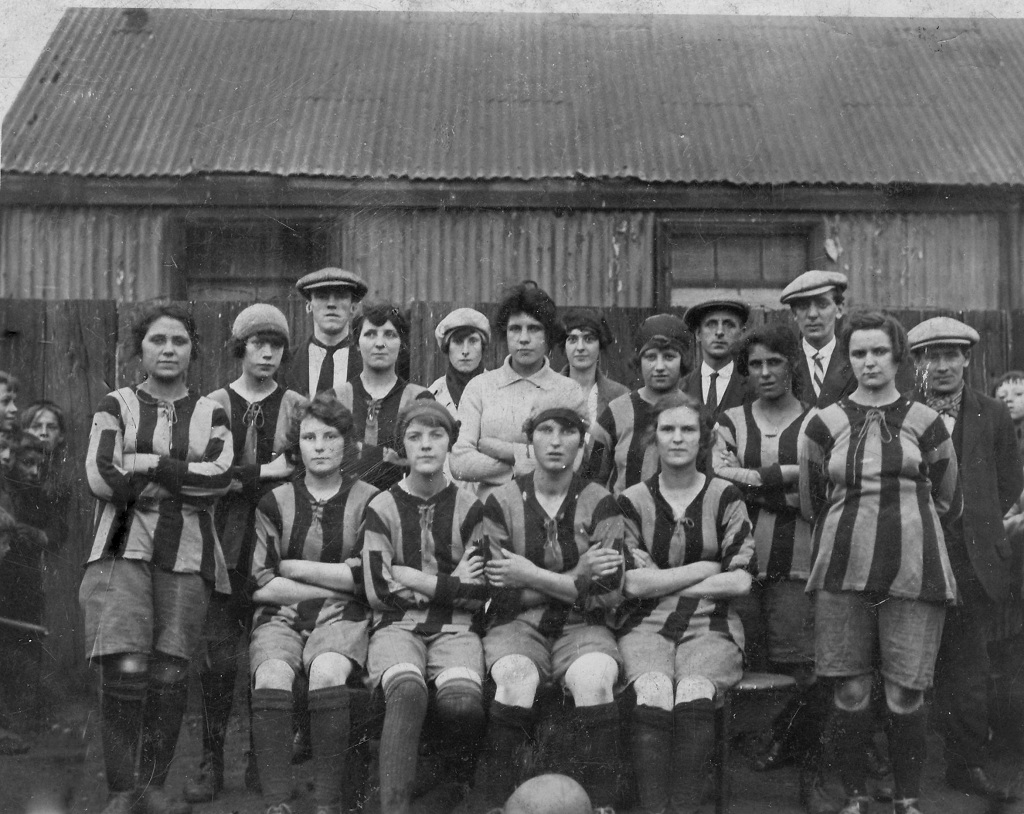
Blaydon Haughs Ladies Football Team
These days there is a lot of publicity about ladies football which is surging in popularity. The Spike was way ahead on that one. Here is their ladies football team probably early 1930s. Thanks to Spiker Ann Robson for this team photo. The only person she can identify is Laura Perna on the left.
Wilfie Charlton recalls 'Spiker' Mick Bowles. He had a rowing boat (like many of the locals) and he ran a ferry service from The Spike over to Bell's Close on the north bank. Two old pence a crossing. His house was next to the river with a nice garden in which he built some swings, slides etc. for the children to play on. Wilfie also recalls fishermen who came up from somewhere down river. They had extemely long salmon nets - twice the river width. They would cross in their boats taking the nets to the opposite side then double back forming a huge loop. The nets had floats and lead weights to keep them in position. Then they drew in the looped nets so the area of water they encircled got smaller and smaller until the fish were easy to catch. It was a very successful method and there were lots of fish in the river. Then they disappeared back down river with their haul. A company (possibly called Richardson's) had pleasure cruisers. They brought trippers upstream from Newcastle Quay to Ryton Willows. The cruisers, full of passengers, were a common sight as they passed by The Spike. In fact there was a great deal of activity of all types on the river in those days (1920s - 1930s). He also recalls 'the wood houses (or huts)' down at the bottom of Patterson Street next to the river, just along on the eastern side towards Scotswood Bridge. They were very basic but nicely kept - about six in all. Geordie Scott lived in one and in another was First World War veteran John Wester who had lost both legs in battle (the Somme 1916). He had a wheel chair with two long levers to pull back and forth using his strong arms, to propel it.
Harry Rogers had a very successful ironmongery shop just off Tyne Street beyond the Lime Yard, in Blaydon. He sold tools, items of ironmongery, Hornby model railway items and Meccano. I remember gazing in the window at the Meccano parts, gear wheels etc with fascination. I liked Meccano and bought bits and pieces with my pocket money. Wilfie tells me Harry supplied small tools to the Spike foundries - Smith Patterson and Douglas Brothers also to Harrimans who made ceramic coated clay sanitary fixtures and fittings, pipes etc.
Tony Page has some happy Spike recollections - - -
"My grandparents, John and Elizabeth, lived in Pioneer Street and they had five sons Thomas, Charlie, Joe & Mick(twins) and Albert. They also had two daughters Hannah & Margie. I was born in Victoria Street, with no electric and very basic living conditions. When our row of houses was demolished we moved to Cowen Street (basically a downstairs flat) but luxury compared to what we’d had. My dad worked for Raine & Co, Derwenthaugh (nicknamed “the Delta”) and two uncles worked for Pattersons. I can remember Pattersons had an air raid siren which would go off every working day at 12.00 to signal the lunch hour. The Spike also had a very good football team. I remember the goalkeeper, 'Whomper' they called him. We often played by the river as kids which would probably horrify some parents today, but thankfully nobody came to any harm. I had my cousins, Keith, Pauline and Catherine living beside us, so I was never lost for a companion. When I was eleven we moved to Winlaton. Great days, wonderful memories."
Thanks to Tony for the two images below. Left - members of the Page and Kendal family, taken outside Cowen Street in 1936 - Charles Kendal aged 86 (seated with hat), John Thomas Page age 35 seated with with baby June Page and Elizabeth Jane Page (age 53).
Right - their post WW2 Ration Book.
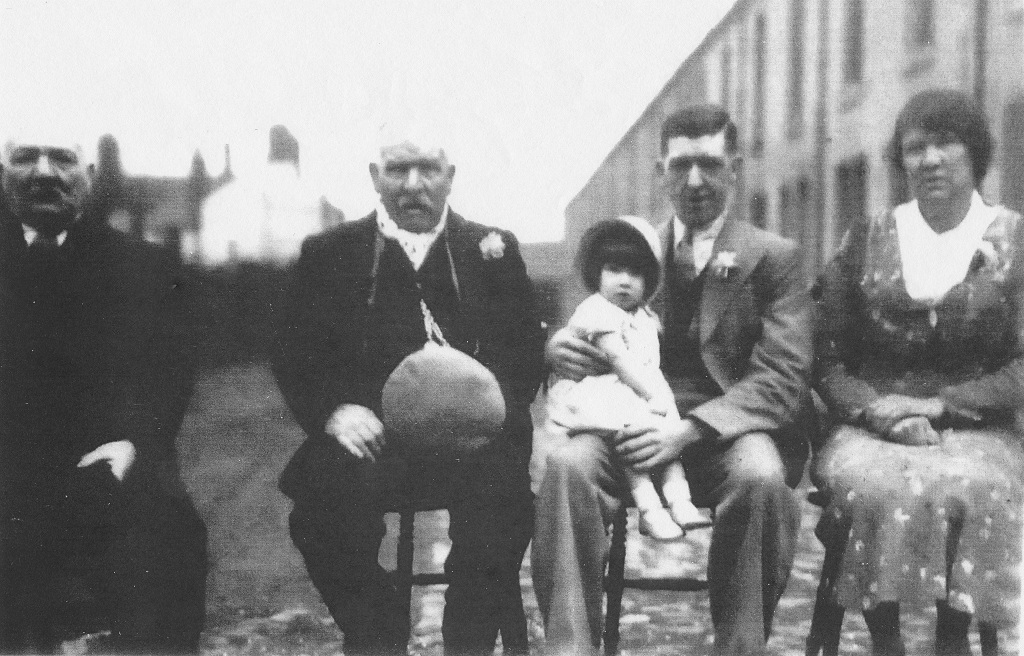
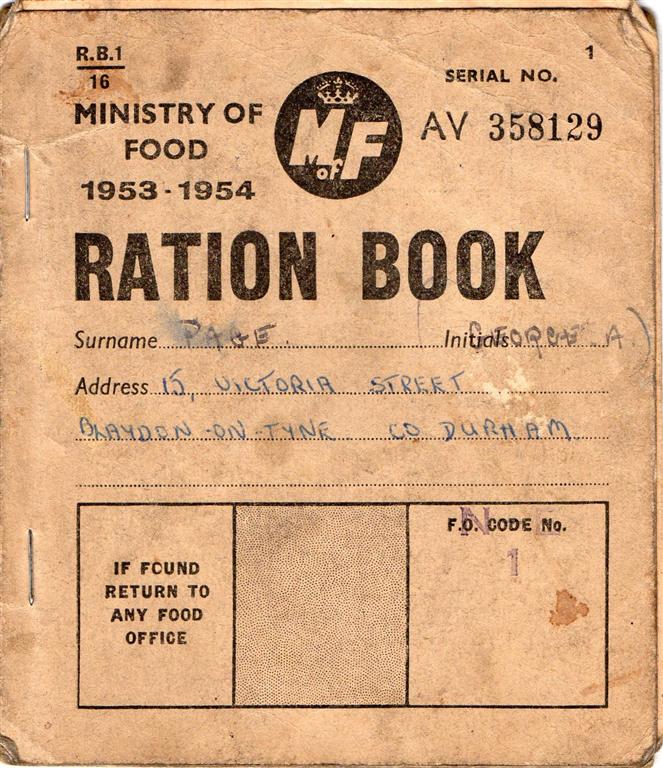
Thanks also to Les Page, now of Bingley, for sending me the Spikers photos shown below.
Top left - Charlie Page(L) and Biff Hurst(R) outside The Bottle House Arms in the 1940s.
Top right - outside 20 Pioneer Street around 1930 - youngster Mick Page with Mrs Elizabeth Jane Page and Mrs Meggie Bannister.
Middle - death certificate of Charlie Page who sadly died of typhoid in 1899 aged only 44. There was an outbreak of typhoid fever in the Blaydon area in 1899. Rather a sobering thought.
Bottom left the Page family early to mid 1920s.
Bottom right - amazingly, three of the Page brothers met girls in the WAAF (Women's Auxiliary Air Force) stationed at Scotswood Balloon Site No 74. The WAAFs were all from southern England and they all had to learn the Geordie dialect. One was Les Page's mother. When she was first introduced to grandad he said "Howay in hinny, ye must be starvin' - pull yersel a cracket up by this fire - would you like a bullet?" She hadn't a clue what it was he said. Howay in (come on in), starvin' (starving cold), hinny (honey), cracket (small stool) bullet (boiled sweet). Thanks to Les for this photo and a great story. You might like to read the essay on the White City Greyhound Stadium (see links) for more detail on the wartime requisition of the stadium by the military and the romance that blossomed there.
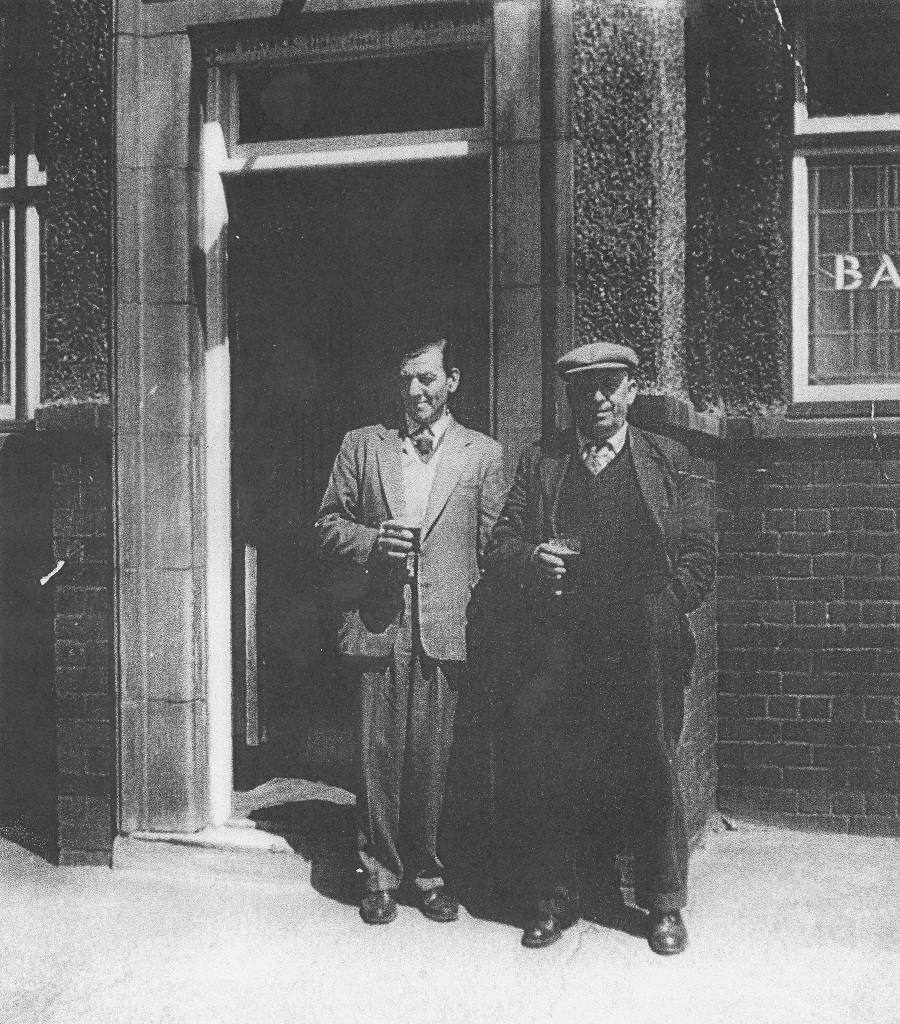

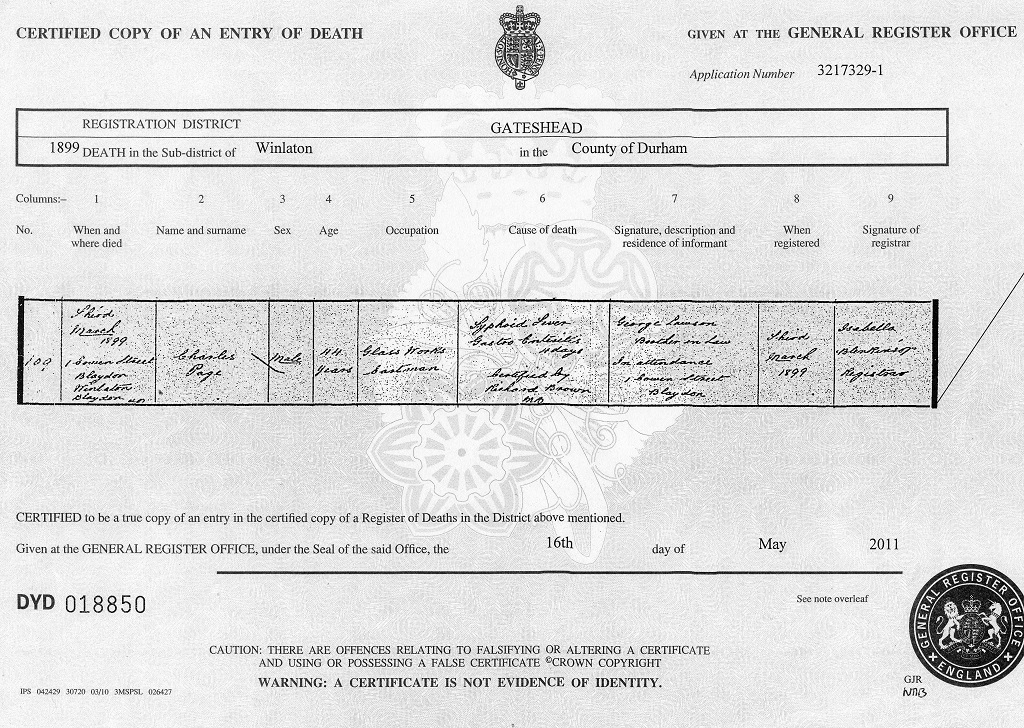
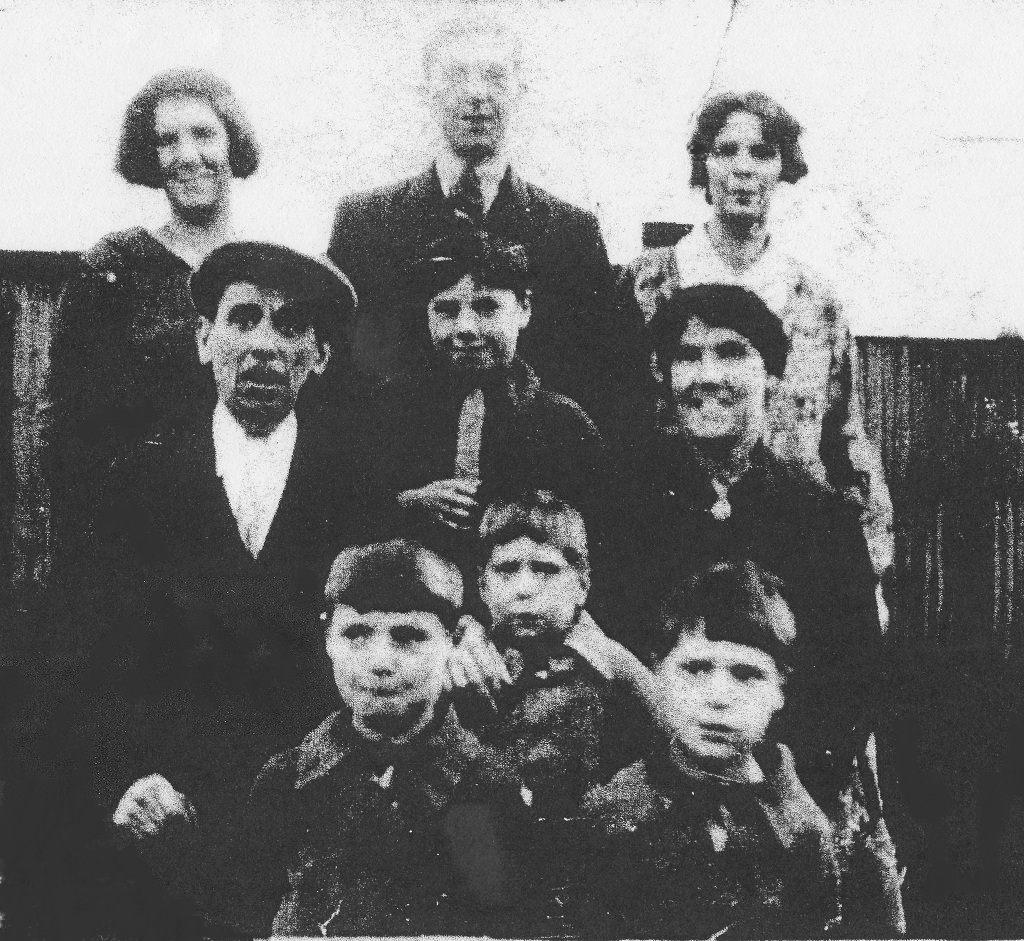

Regarding the wartime barrage balloon site and the WAAFs mentioned just above, below is a photo taken by Les Page's mum Vera in 1942. It shows the crew of Site 74 which was situated at the White City (the old greyhound stadium at the south side of Scotswood Bridge) and its role was to protect the bridge.
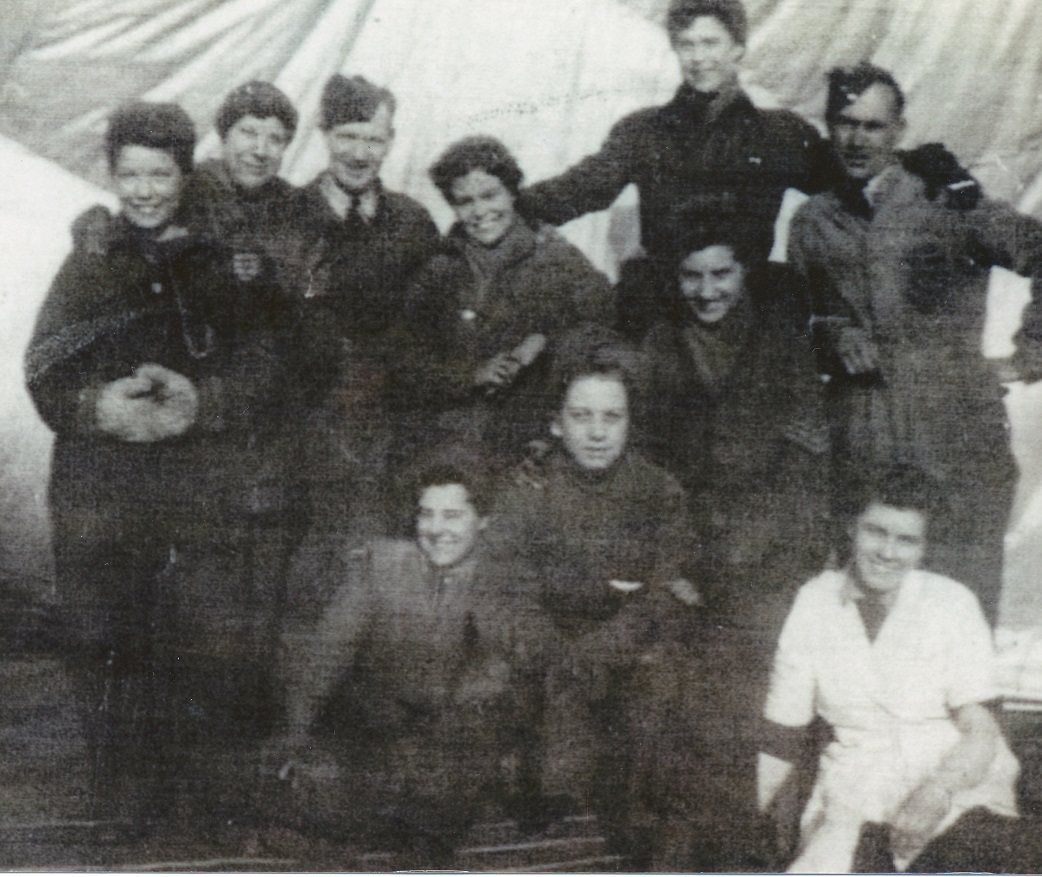
Spikers Wilfie Charlton and Ann Robson remember the old Mission (sometimes called The Tin Mission as it was just a fabricated building of corrugated steel) on The Spike. In those pre WW2 days folk made their own amusement. There were frequent concerts and dances in the 'Mission', and a regular pianist for the music 'turns' was George Reay. Sometimes he would accompany a fine singer Mary Chapman. Wilf says those duets by Mary and George were the nicest music he ever heard in his life! The minister in the mid 1930s was Mr Douglas? Hargrave. He was a lay preacher who had a 'fruit and veg' shop in Tyne Street, Blaydon.
There were also parades with floats - folk dressed up in fancy dress, adults and children alike. Some girls and ladies would be in long crinoline dresses and boys dressed up as Indians using old potato sack cloth died brown and stitched into a garment.
'Horses and Carts'. On the opposite side of Patterson Street to the terraced houses were gardens then Tench's field, Hogg's field being further down near the river. Mr Tench had several horses used for pulling his carts. His business was haulage of sand from Pattersons, rubble to and from road building and other civil engineering projects, and similar types of contract work. It was Tench's horses and carts which were used for the fancy dress parades. Jacky Noble also had a horse and cart carrying out similar work to Tench - haulage of sand, rubble, etc - it was heavy, dirty work. Jacky was quite a character. During the week when he was hard at work he would get quite dirty but at weekends he spruced up and socialised wearing country gentleman's garb - tweed coat, riding breeches, gaiters and leather boots. Then back to his work clothes and hard graft on the Monday!
There were two churches on The Spike. The Mission (already mentioned) was on Patterson Street more or less opposite Reay's Shop but down nearer the river was The Primitive Methodist Chapel (see map below).
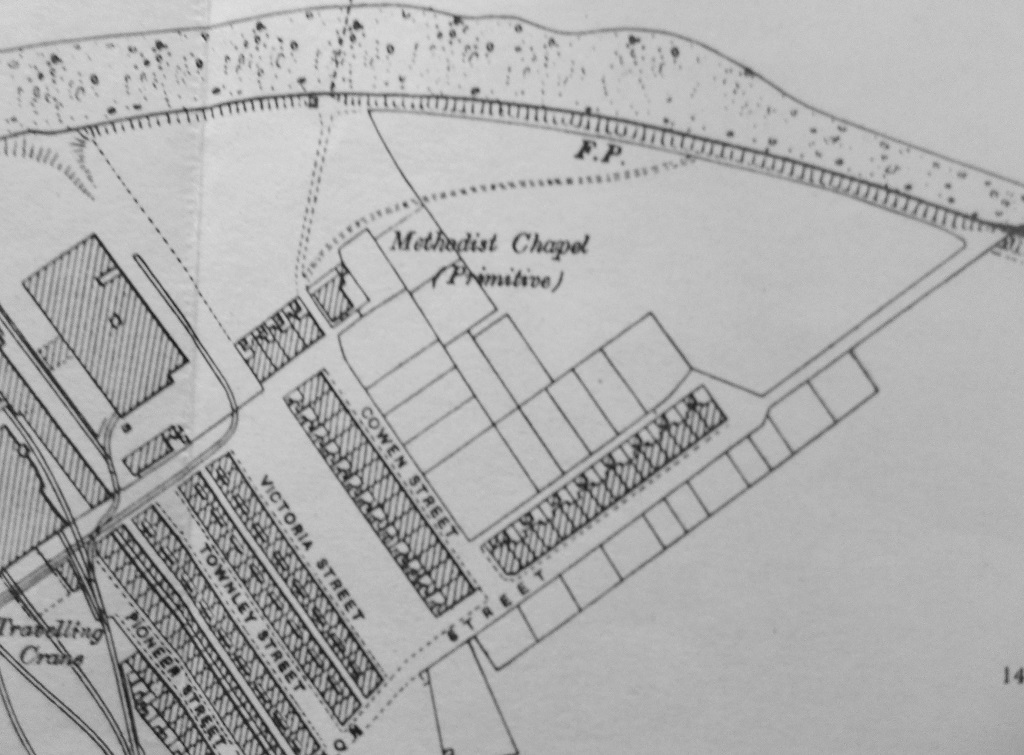
Primitive Methodism had grown throughout the 1800s and in Winlaton the work of William and Mary Surtees led to the formation of a local society in the early 1820s. From there the movement grew in strength in the Blaydon area leading to PM chapels in all the local villages. William Paxton, a tradesman of prominence in the locality, devoted much time and attention to Blaydon Haughs, establishing a Sunday School, then having preaching services, and eventually, largely through his generosity, a chapel was built there, in 1881. It could seat 150 (possibly 200 according to local historian Bourne).
There were other figures involved the founding and success of this church. Two of the most significant were Mr & Mrs John Gaddes who both dedicated their long lives to it. Just below is a photo of some church members (possibly Sunday School teachers or helpers) clearly showing a wall-plaque dedicated to Mrs Gaddes in 1929 in appreciation of 50 years service. Then separate photos of John Gaddes and his wife and a Diploma of Honour dated 1916 for John Gaddes for 50 years service and a brass plaque to his memory after he died in 1919, the year of their Golden Wedding. See also the Golden Wedding acknowledgement showing the great esteem and affection in which they were held by all the church members, and no doubt the other Spikers who would all know them very well.
At the end of the first world war the members of the congregation were each presented with a commemorative mug, see photos below. My Uncle Wilfie Charlton recalls that the chapel held a 'women's circle' social meeting every Monday afternoon. This would be 1920s/1930s. His mother Annie Charlton (nee Reay), Ada Dixon, Elsie Chapman and several other ladies went regularly. Wilf and his sister Lily, although by then residing in Blaydon, went to the Sunday School at Blaydon Haughs PM Chapel. At that time (1920s/30s) the teacher was Matthew (Matt) Purvis, a lay preacher who was a miner from the Crookhill or Hedgefield area. Matt was a quiet man, a gentleman much loved within the church and community. After their religious lessons the Blaydon contingent, children and adults, regularly in summer walked down the short path to the river and east, along to the old Scotswood Bridge then back up Chain Bridge Road into Blaydon. Sadly the chapel closed in the early 1950s and was then used for a while as a commercial storage facility (possibly by Smith Patterson) before eventually being demolished.
Thanks to Richard Jennings of Bede Circuit and Newcastle upon Tyne District Methodist Archivist for sending me these images in connection with the church and for permission to show them.


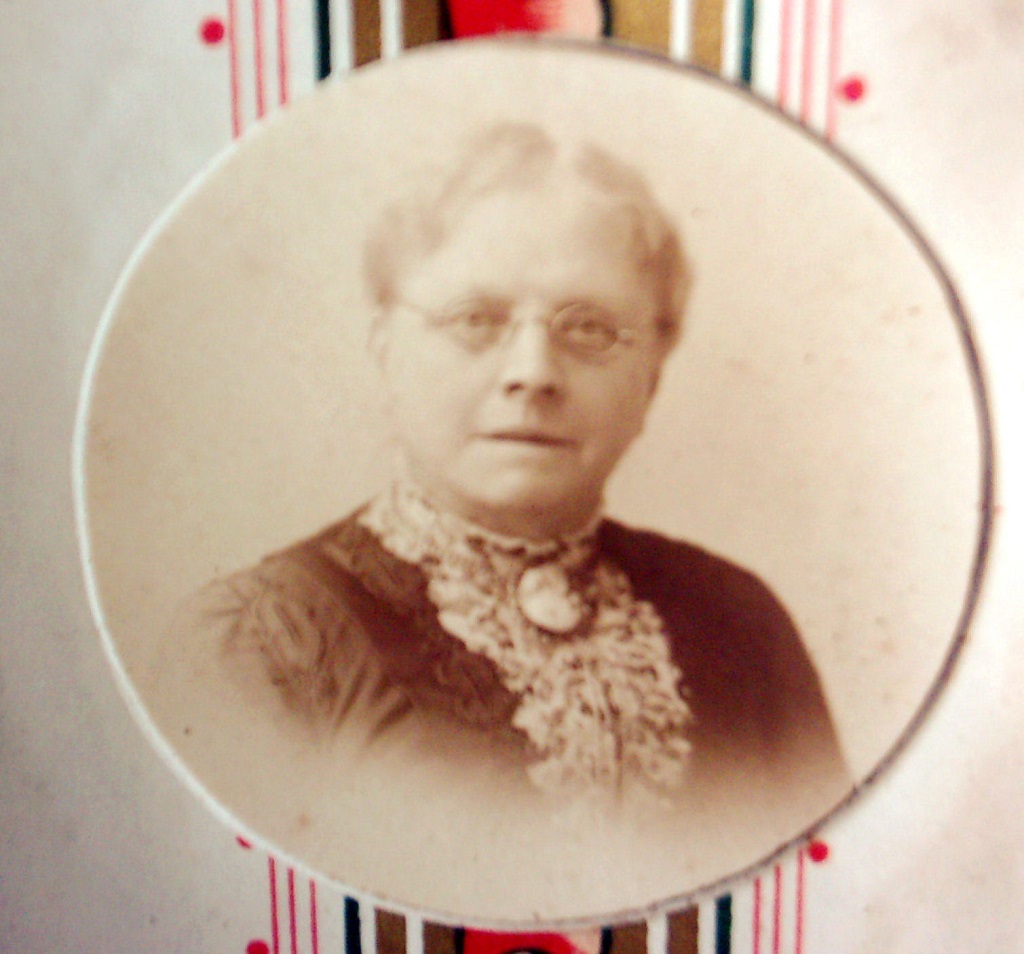

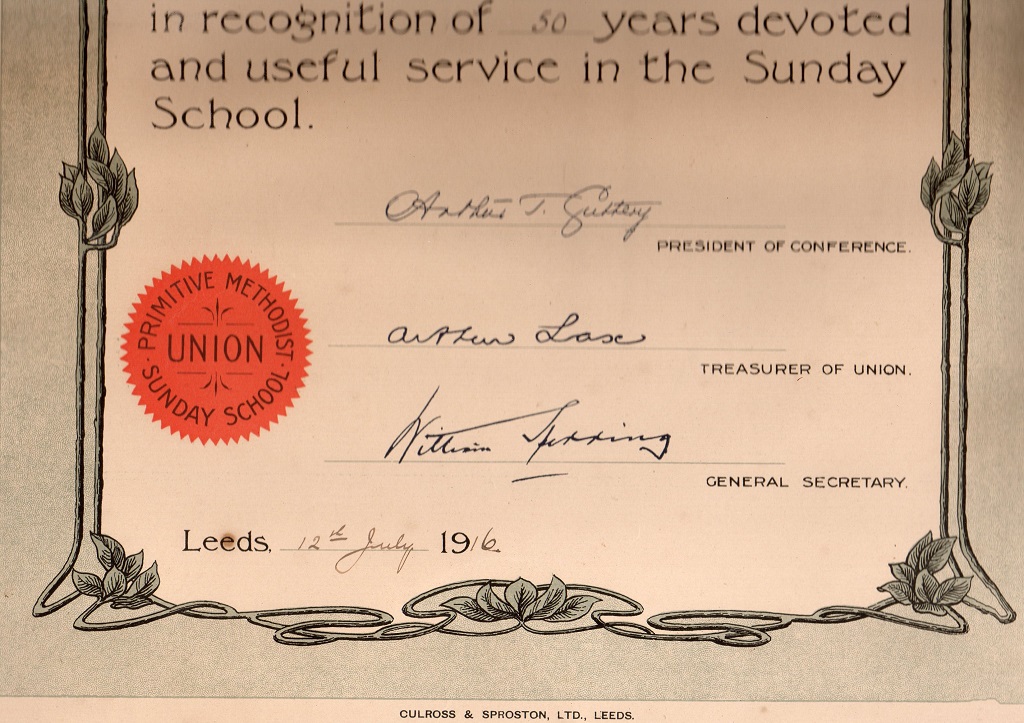
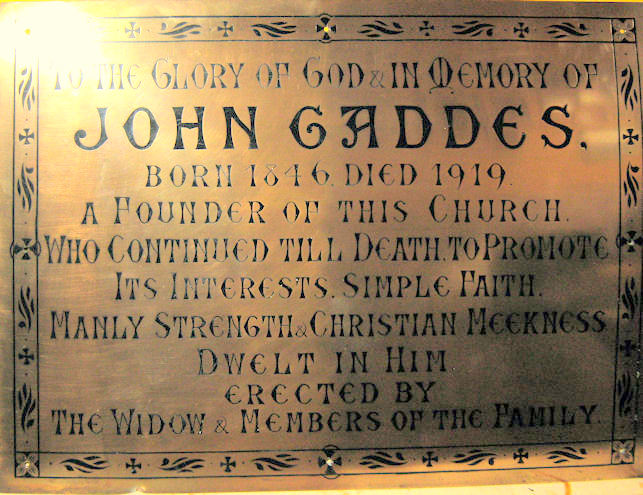

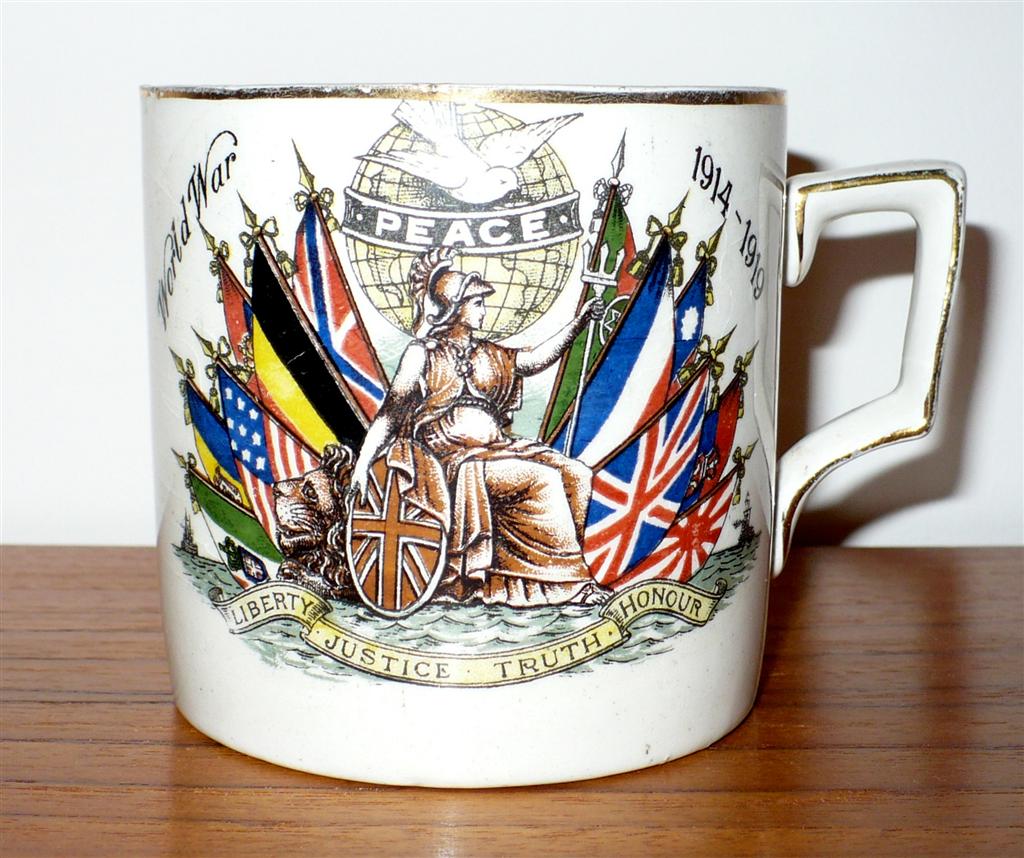
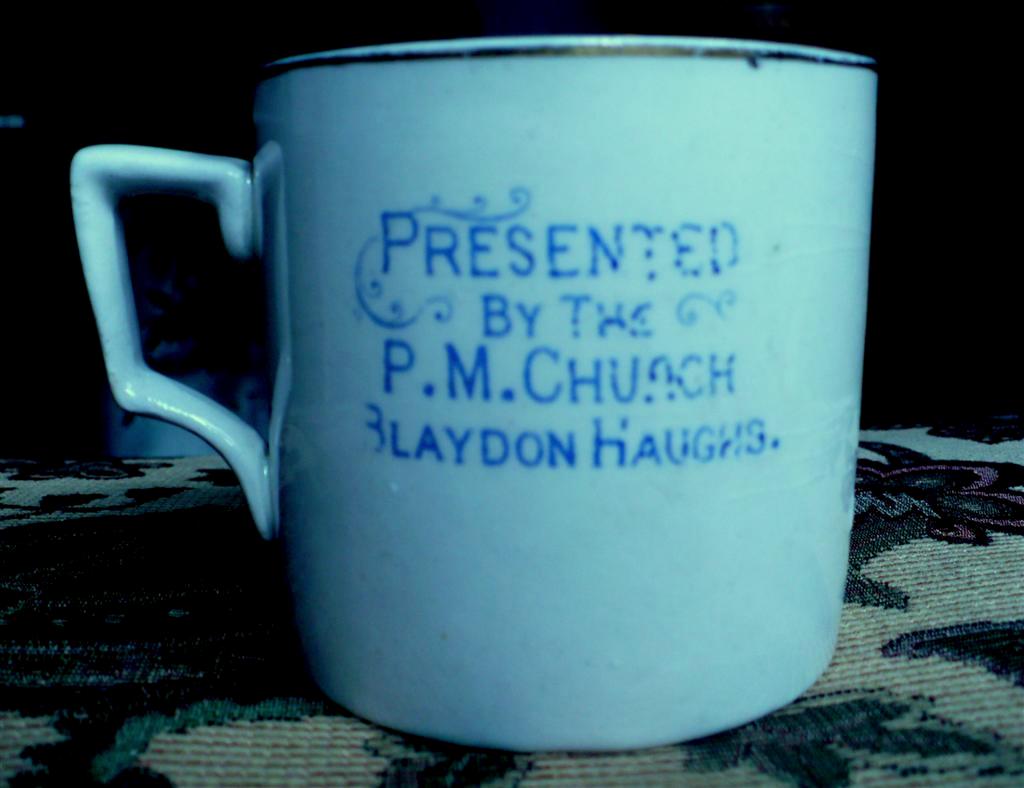
The Spikers also held a children's fancy dress party in 1919 to celebrate the end of WW1. Thanks to Gordon Robson (now in Australia) and Les Page for this photo.
Louisa Bulman - Indian in sari; Sarah Bulman - Red Indian; John Thomas Page - tramp; Anne Bulman - small girl in front to Sarah; Ruth Tench - Robin Hood hat with feather; Maggie Chapman - Spanish gypsy with scarf; Lizzie Chapman - Periot; Margaret Stobbs - sailor outfit(brothers from Pioneer Street); Maggie Cameron - gypsy; ? Cameron - Indian; Edith Liddle (Gordon's mother) - fairy behind skeleton (left side); others unknown:
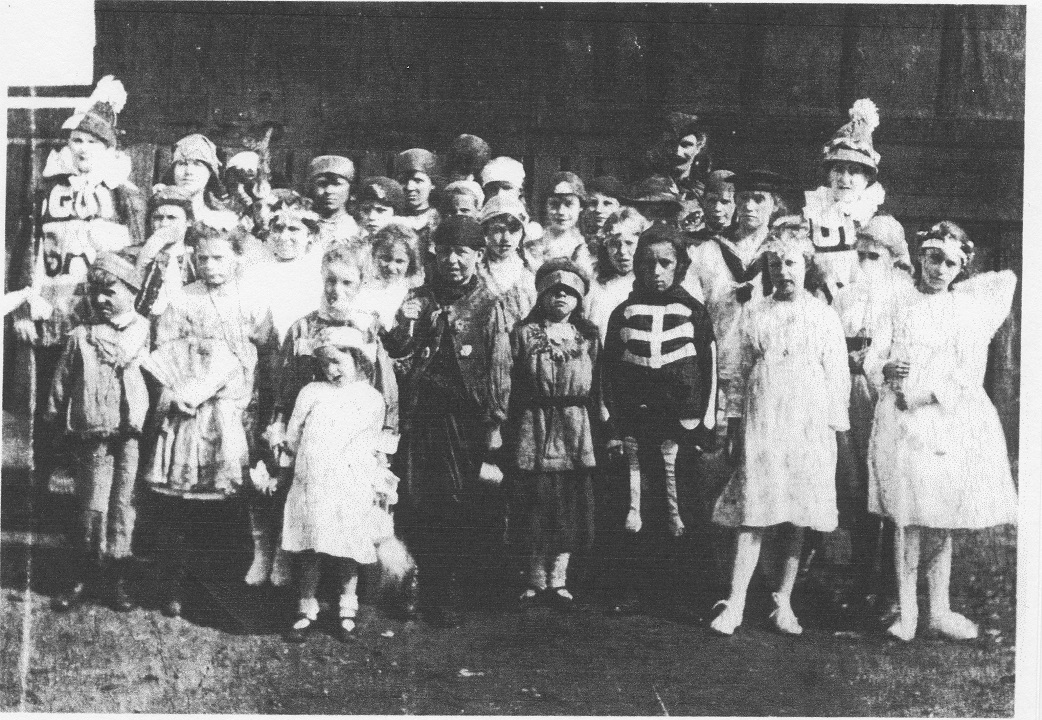
Below some photos of family life on the Spike, all taken circa 1947, with sincere thanks to Les Page.
Top left is toddler Keith Page with Victoria Street behind and at the back Smith Patterson foundry.
Top right Linda Page with young Keith, behind is Cowen Street.
Underneath left, five Spike youngsters - rear left Albert Jennings, rear middle unknown, rear right Jimmy Ridley, front left Tony Page and right Keith Page.
Underneath right Tony Page with steam engine, Keith Page on bike.
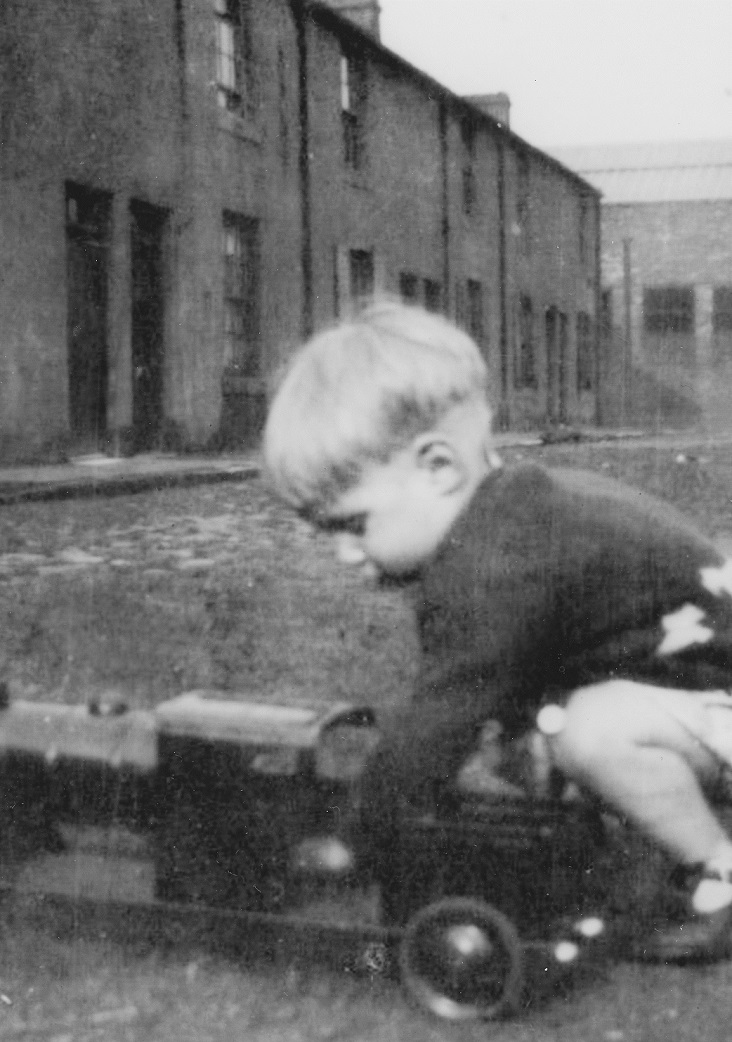
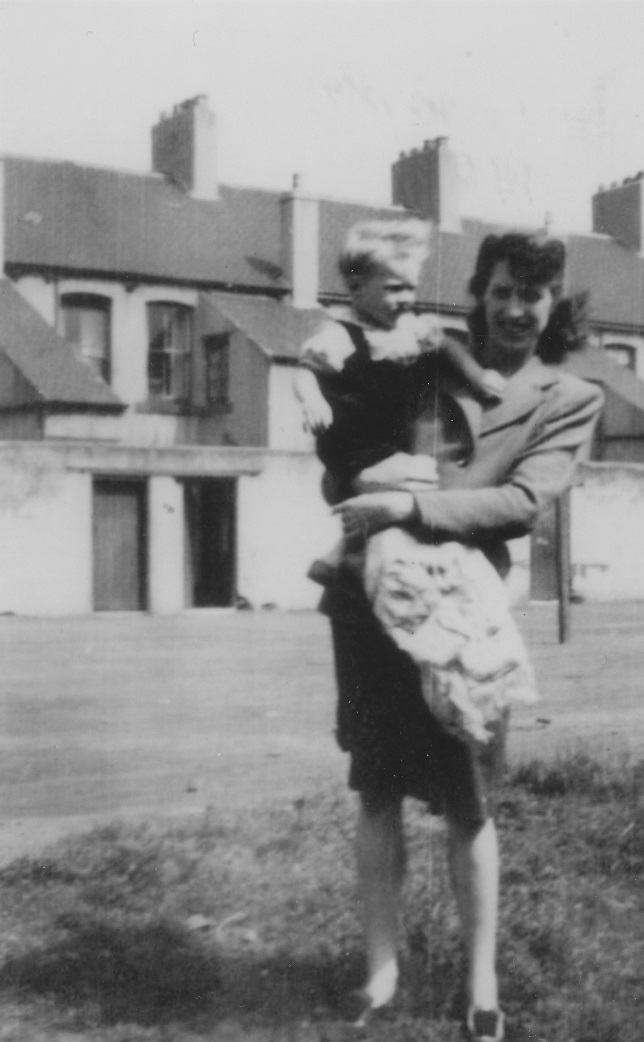
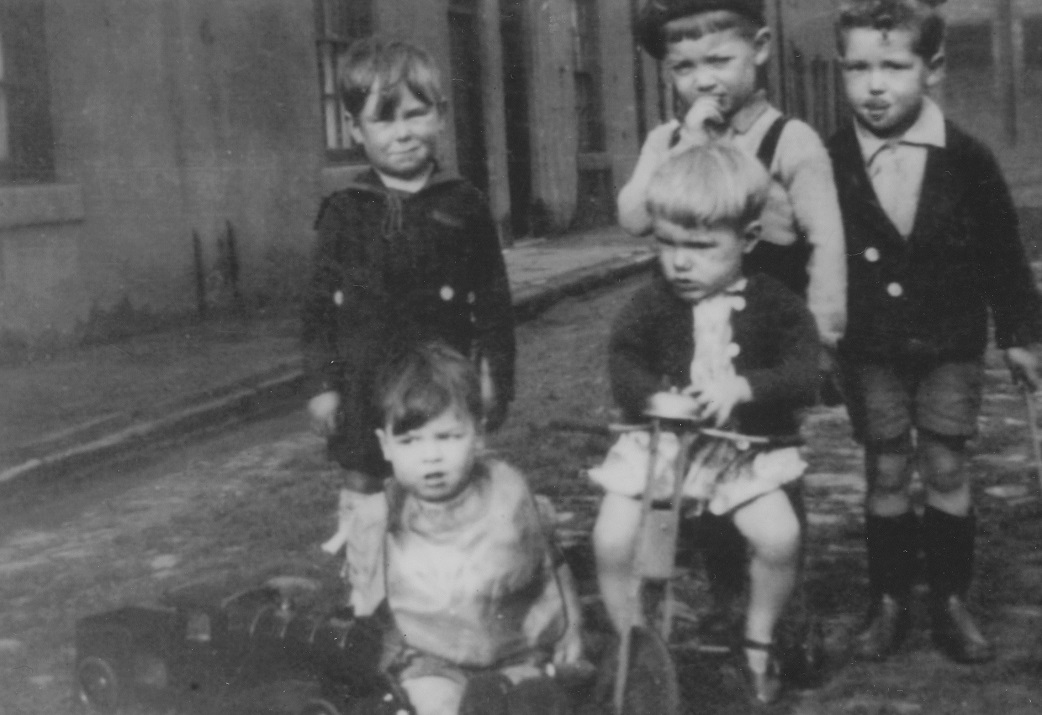
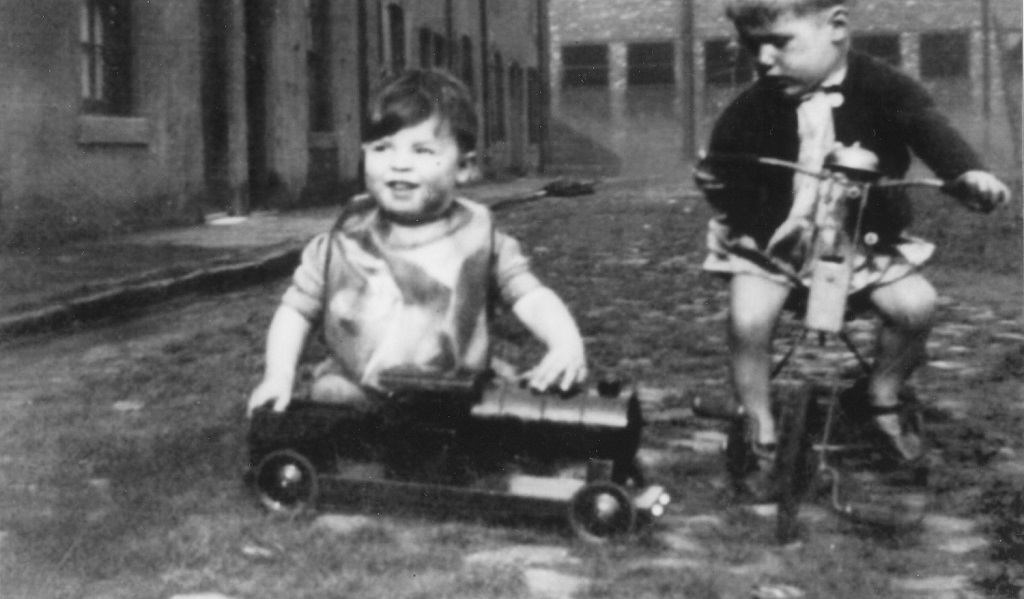
Wilf Charlton remembers the Ringtons Tea Man calling at the family (Reay's) shop with horse and cart. The driver used to reverse the cart up to the entrance and put a nose bag on the horse to feed it and left it standing there while he popped in for his lunchtime sandwiches. He also recalls the foot patrols of the local police constable. Every evening he walked the area checking commercial premises were locked for the night and generally keeping a close eye on things. The children were afraid of him and the residents respected him. On one occasion the Reays were having a meal at the rear of the family shop when he wandered in, unannounced, to say 'Did you realise your door wasn't locked?'. Because of his regular patrols it helped folk feel secure.
Spikers never went short of coal (1920s/30s). There was a lot of coal spillage at the nearby railway sidings which could be scavenged from the trackbed. No-one went short - some was always given to the older folk and to the infirm.
Another Smith Patterson recollection from Spiker Wilfie Charltion. They made replica bombs used for RAF bomb practise during the war. These were engineered to look and weigh exactly like the originals but had no explosive charge. Pattersons must have had a great sales team - mechanical stokers to Battersea and Japan, drain covers to Bari in Italy, tunnel plates to the London Underground, railway chairs for the UK and beyond - and so it goes on.
Wilf also recalls Harry Crumplin, caretaker and night watchman for Harrimans, who lived in the house just at the entrance, opposite to the Bottle House Arms on Patterson Street.
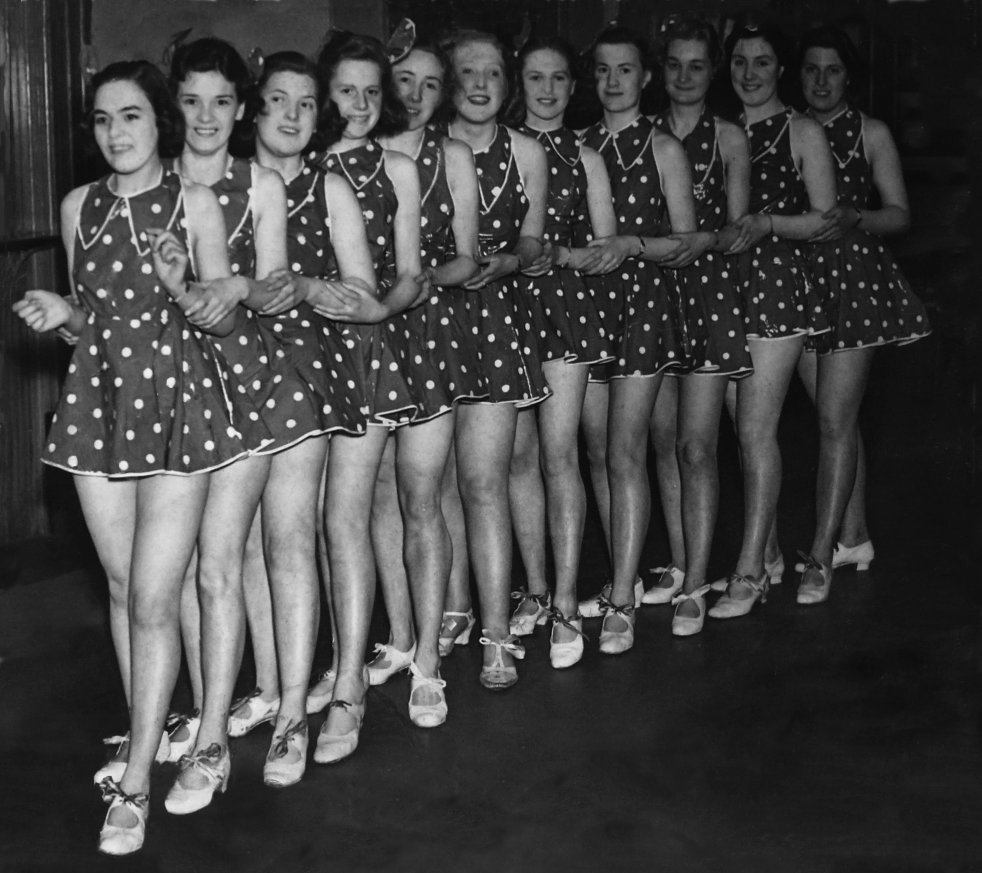
Several Spikers worked at Binns Department Store in Newcastle. They included Elsie and Lillian Jackson, Betty Reay and Lily Veitch (nee Charlton). The girls there had a keep fit class and out of that came the idea of a dance chorus line as many loved dancing. They made the outfits themselves and eventually gave a one-off performance at a local dance hall to a rapturous reception. Here is a photo taken at the time (around 1938) - Lily Veitch third from the left.
Another Spike memory (1920s - 30s) from Wilfie Charlton. The Spikers used to organise a huge bonfire together with sports events for the children. This annual event was not to celebrate Empire Day nor Guy Fawkes - it was a separate special day when everyone in the neighbourhood came together for a big social gathering. It was on the Spike field, an area of grassland on the Blaydon side of Tench's house and field and next to the Blaydon/Scotswood railway track. Tench's own field (used for his horses) was a bit further down towards the Tyne and Hogg's field (another play area for children) was down at the bottom of Patterson Street, next to the river.
Some of the men who frequented the Pioneer pub on the Spike occasionally gathered outside of a Sunday evening to sing hymns. They were all smartly dressed with suits and bowler hats. Among them was Tommy Reay, son of Harriet who had Reay's shop. These 'concerts' were very popular and as word went round many locals would gather to listen.
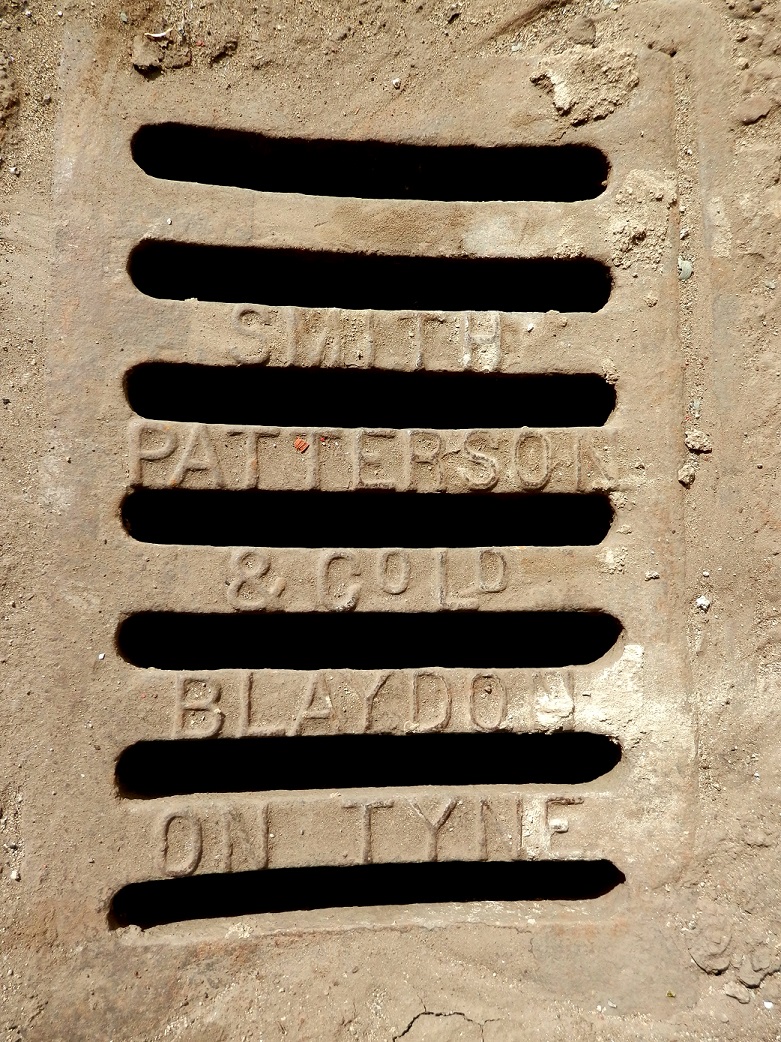
In the 1930s the person in charge of the Smith Patterson Foundry's 'big yard' (where consignments and deliveries were dealt with) was Jack Peterson. He had a team of incredibly strong men known as 'Peterson's Gang' who would lift and move items such as heavy castings. Feats of back-breaking strength that would necessitate cranes and hoists these days. Among them was Mick Lee of Winlaton, Bob Foster and several other brawny Spikers. The overall foundry manager in the 1930s was Mr Harold Watson. Every working day, without fail, he would get the bus from his home in Benwell and travel down to Scotswood Road, then a second bus to Blaydon, then walk down to Blaydon Haughs and into the factory. He wore a smart suit and bowler hat. He was every bit 'the manager', an old style boss who ensured that everything was in its correct place, everything was properly done and who commanded total respect. He was much liked by the workers.
Smith Patterson employed a full time chemist. In the 1930s leading up to WW2 it was John Pickering. He was consulted and made decisions on all things requiring such expertise eg. the required percentage mix required for different alloys, the amounts of carbon in particular types of steel, etc. all depending on exactly what the casting was for.
One of the type of castings Smith Patterson specialised in was drain and sink covers. Before WW2 they had the contract with Blaydon Urban District Council to supply these. Somehow the contract was lost just after the war. With the passage of time these grates have disappeared but at least two remain. One on The Spike near the old Bottlehouse Arms building (photo right) and one in Barlow Village (photo left). Are there any more hidden away in road or footpath verges? The search is on. They are industrial relics of a golden age for Smith Patterson Pioneer Foundry.
Mick Bowles
Talking to old Spikers one thing stands out – the place was full of characters. One of them was Mick Bowles.
Sincere thanks to Cathy Harrigan, Mick's granddaughter, who has noted down some of her late mother's memories of her late father who everyone knew as Mick but who's correct name was James Norman Bowles. Cathy's recalls her grandad, who was a devout Charles Atlas fitness enthusiast, swinging his Indian Clubs when he was into his 80s. Her mother was Christine Smith.
Mick worked at Smith Patterson Foundry and was very well known as a man of remarkable strength and a fitness fanatic. Mick had a big garden at the end of Patterson Street near the river, used as a gym and kiddies playground. Also he had a small boat which he used to ferry folk across to the north bank of the Tyne.
The 'John' mentioned is John Wester who tragically lost both legs in the Great War (at the Somme 1916). He is mentioned elsewhere in this treatise as everyone knew him. Wester lived in the 'wood houses' aka 'the wood huts' (probably originally keelmen's homes) down on the riverside, later moving to Robinson Street in Blaydon together with his sister. John Wester died suddenly in 1970. Below are two photos of Mick Bowles and the third, of when they joined up for WW1, has Mick seated on the left with the recruiting officer stood in the middle. 'Your country needs you' was the slogan and many brave and patriotic young men enlisted to do their bit. Here below the photos is Christine Smith's memories of her father and The Spike.
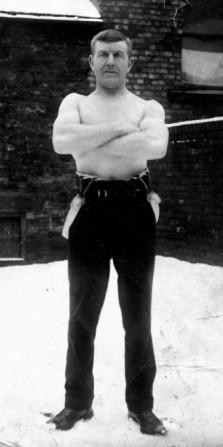

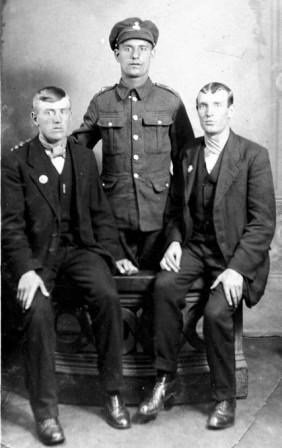
I grew up in a house by the foundry and right on the river. By the time Dad married Mom (1936) he was working at the steel foundry, organising the pig iron deliveries from the ships up to the foundry itself. Although he had had to leave school at twelve, he had continued to study at evening classes, as had most of his brothers, and so had done quite well at the foundry. He lived in a house close to the foundry and had a garden backing on to the river. Dad had divided the garden in to four main areas – it was not a garden to sit in and enjoy, it didn’t even have any flowers. One area was vegetables; one, a large one, was an outdoor gymnasium; one, firmly fenced, was for the hens; and the last one was full of racing skiffs, a dinghy and a motor-boat.
Dad had quite a reputation as a strong man and there were lots of stories about him. Even the children in school knew who my father was. This was something that I found really odd because he was very quiet and even at work he was thought of as a quiet man – just one you wouldn’t cross. There were lots of stories about his strength. One that went around the town is a typical example. After the iron had been smelted in the foundry it was taken to the next stage by a small steam engine. One day, one of the men tripped and got his leg caught in the rail just as the train was pulling out, and the man was trapped under the front wheels of the engine. They tried to get him clear, but couldn’t, so then Dad was sent for and he was able to use his great strength to help get the poor man pulled clear.
Another accident involved the works crane. Ships brought the pig iron up the river to the foundry dock where it was unloaded using the crane and sorted before being taken into the foundry. One day this crane toppled over, causing Dad and another man to fall into the hold. All the men watching were sure they would be dead, but then the sailors shouted that one man was trying to climb out. The other poor man lost his life. Dad said later that as soon as he knew they were going over he totally relaxed all his muscles as he was falling (as taught by you-know-who!). He insisted on walking home unaided, although I remember several men walking behind him, where he collapsed into bed and didn’t move again for weeks. His body was a mass of bruises. My mother was brought home. The foundry doctor arrived. The foundry owner arrived. Aunt Maggie had hysterics. It was all very chaotic and confusing but Dad was the hero of the hour and although it was a long time before he could even get out of bed, he hadn’t broken any bones or suffered any permanent damage. It really was a miracle.
My father worked at the foundry, although never inside the actual foundry; he always worked outside in the yard or with the ships, and there he made a new friend, John. They started work together and were the same age. When the war started there was terrific advertising for all young men to join up and Dad and John decided to do that. They joined the Tyneside Irish and were quickly trained (I suppose) and shipped off to France. I think it was at the beginning of the battle on the Somme that they were both injured and were lucky enough to be taken to a medical post and eventually repatriated. John lost both legs and Dad was shot through the knee. Much later, they were to learn that all the rest of the battalion never made it home.
{Note from Cathy: - Grandad was in the 26th Battalion, 3rd Tyneside Irish, Northumberland Fusiliers and he signed up on 7th November 1914. He gave his address on the form as 11 Cochrane Street, Blaydon but on 1911 Census, he was living at home with his parents at 36 Pioneer Street}
“Dad had always been fit – all the family were keen swimmers and spent their youth mucking about on the river, which was very near their house, so he really hated limping along. Of course, it was very much harder for John. Luckily, there was a new 'Strong Man of Britain', who really believed in himself and in the power of advertising and the Charles Atlas 'You too can be a Strong Man' absolutely swept the country. Dad and John exercised together and Dad made John a cart and he gradually gained the strength to push himself around. As there was very little help for disabled soldiers, Dad found himself teaching the Charles Atlas course to quite a few young men and this led to him setting up a gymnastics club in Blaydon.
{Note from Cathy:- Bernard and I were absolutely astonished to meet an old friend of his while we were staying at my Cousin Edna’s near Blaydon in 2001, who told us it was still going!. I would love to know who “John” was and whether the gym story is true}.
{Note from Roly: - in its later years the gym was on the top floor of Blaydon CIU Working Men's Club building in Garden Street, High Blaydon. It was believed to be operational up to the early 2000's. The CIU closed January 2013. The last fitness enthusiasts to run it were from nearby Cochrane Street which, coincidentally, was where Mick Bowles lived after he moved into Blaydon from The Spike.
The Wester family were from Belfast and among many Irish who moved to Tyneside from the 1850s onwards, looking for work. John Wester came with his parents and brother, probably around the early 1900s. After his terrible injuries in WW1 his sister Nella came over from Chicago in the USA to look after him.}
Wilfie Charlton, grandson of Spike shop owner Harriet Reay, tells a rather nice story. He left school aged 14 (in 1937) and as jobs were scarce in the wake of the 30s slump, he went up to the 'Dole School' on Tyne Street, Blaydon. It was situated west of the railway station, further up the street on the same side. It was mostly boys who went - they were taught woodworking skills, simple engineering tasks etc. After many months Wilf still had no job. He was quite shy and not of big physique. One day the school head called him in. He said 'I have a letter for you to take down to Patterson's Foundry, take it right away and pass it to the office manager. Wait there for his reply and bring it back to me'. Wilfie obediently took the sealed letter and handed it over. He was asked to wait. He sat there waiting for ages. Eventually the secretary came back with another sealed letter which he took straight back to the Dole School as instructed. The manager opened the letter and said 'Well young man, you've got a job at Patterson's. You'll be working in the office to begin with. You start on Monday morning 7.30 prompt. Make sure you are there on time'. Wilf worked there, dealing with dispatch orders, invoices etc. until he was called up for active service in 1941.
Spike weddings - as has been already commented on quite a lot, the Spikers were a close knit and clannish community. So needless to say there were many weddings within the residents including my own mother and father, James Danskin Veitch and Lily Charlton. One such wedding was between Thomas Harrison and Hannah Page, back in the 1940s - see photo on the right. The picture also includes, front right, Maureen Bannister (nee Page) and at the back Charlie Page and Cowen Street is in the background. Thanks to Les Page for this photo - Charlie Page was his dad.
This is a story that went round the Spike - I've heard it several times. Spiker Thomas (Tommy) Reay was one of the sons of shopkeeper Harriet Reay. He was my great uncle. He apprenticed as an engineer at Vickers Armstrong on Scotswood Road. When he lost his job in the slump of the 1930s he spent his time tending his allotment including rearing hens and having a try at rearing turkeys. One day he was walking past the houses on Patterson Street when Meggie Haddon shouted down from an upstairs window "Tommy, what do you feed your turkeys with?" Tommy was quite shrewd and wouldn't give away his secret formula so in jest shouted back "biscuits". Meggie too had turkey chicks and she fed them on broken biscuits and they thrived. Tommy's birds became ill and died. Tommy eventually got a job at Lemington Glassworks eventually reaching a senior position managing the engineering aspects of the business. He later became a well known Blaydon figure as an elderly man with his smart suit, trilby hat and 'regular as clockwork' daily trips to the Blaydon Conservative Club. He used to tell me he was socialist and wink. I never knew whether he meant it or not!
David Lamb contacted to say his family came from The Spike. His father Jimmy Lamb lived there along with siblings Jack, Willie and Myra and their parents.
My Uncle Wilfie Charlton tells me the houses in Patterson Street were actually owned by Smith Patterson Foundry and presumably built for them to house their workers. It poses the question of who owned the other Spike houses which were rented mostly to residents working in the local factories? I've heard it said that Joseph Cowen Snr had Turret Place renovated and converted into apartments originally for lodgings for navvies (mostly Irish migrants) who came to work on the River Tyne improvements. This included the dredging of the river, removal of Blaydon Island (Dent's Meadow) and the Lemington 'U bend' and constructing the revetments on the river banks. This was all in connection with his chairmanship of the 'Tyne Improvement Commission' his work on which duly led to his knighthood.
Pioneer Street Memories - thanks to Les Page and Gordon Robson for the family photographs just below, taken in Pioneer Street. Top left - Mary Elizabeth Liddle nee Bulman with grand-daughter Beverley Butcher. Top right - Florence Bulman.
The photo underneath has caused amusement and puzzlement - why the funny hats? The most likely explanation is that this 'dressing up' was part of the fun when the residents went for the annual charabanc day trip to the coast (they usually had just one of these special days out each year). This was a tradition in many of the local mining villages and in other industrial working class village communities. On the photo are John Thomas Page (front left) and Jock Vardy (front right) - others unknown.
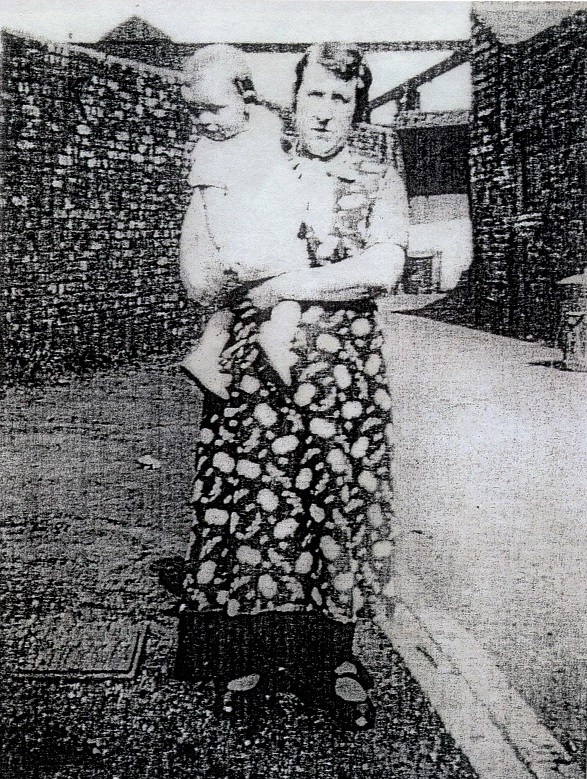
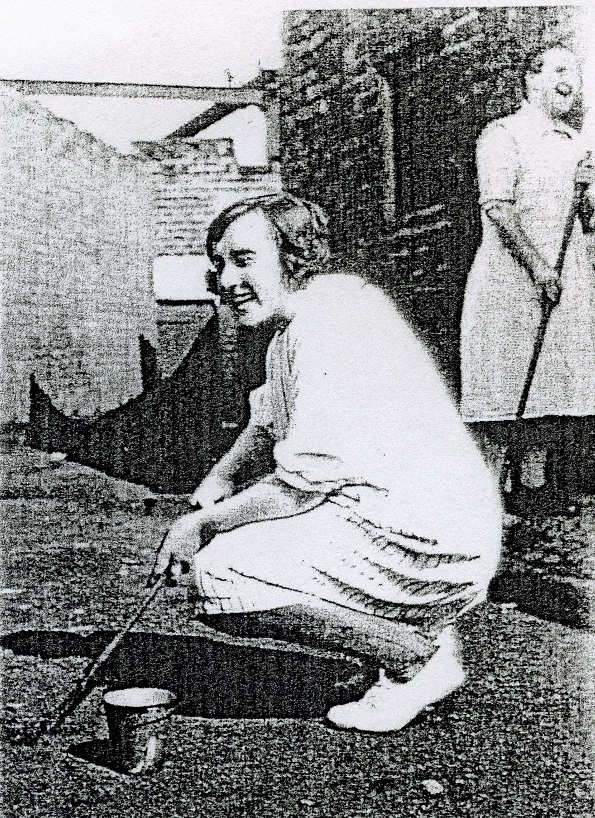
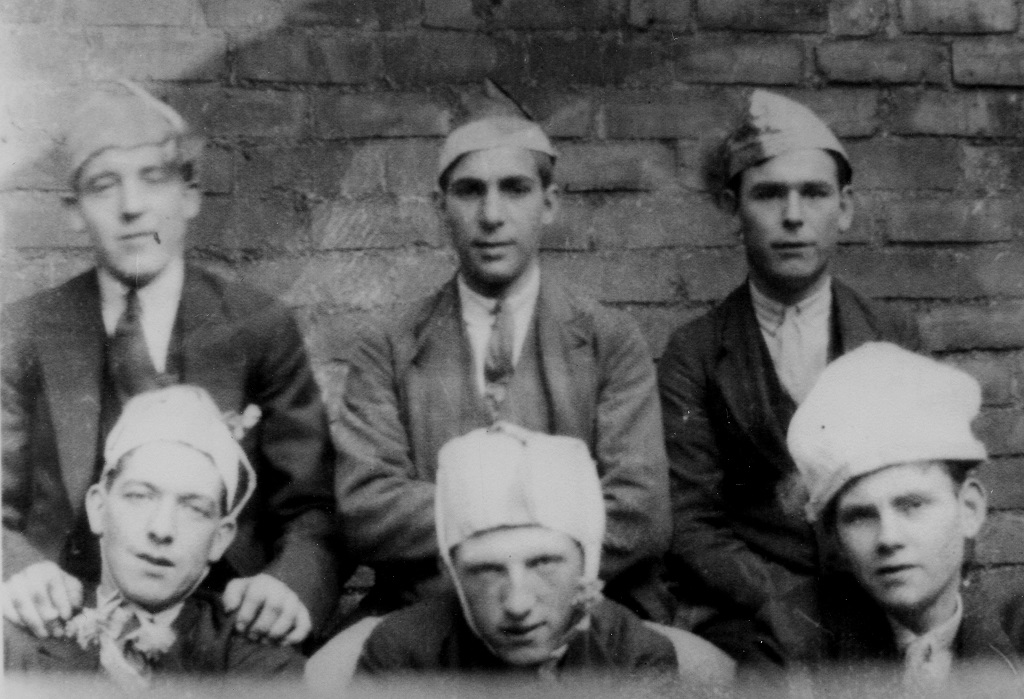
18/12/2014 From Keith Murray - 'My mother’s family, the Hallidays, were proud Spikers. Her father was Pepper Halliday (a skiffman), her mother's name I don’t remember but their children were Jean (my mother), Duncan, Margaret (Peggy), Patrick (Paddy), Ettie, Nellie, Jack and Eddie. The family moved to Robinson Street, Blaydon where I visited my grandparents in the 1950s'.
29/12/2014 More Spike memories from Wilfie Charlton, now aged 91 and residing in Crawcrook. The Primitive Methodist Chapel was down near the riverside, just beyond Douglas Terrace. When Wilf was a child the Sunday School teacher was Matt Purvis who he thinks worked at one of the local pits and lived in nearby Crookhill. He was a very nice man, popular with the children and the Sunday School was very successful. Wilf also recalls that pigeon racing was a very popular activity among the men. Many had crees on their allotments and the breeding and racing was taken very seriously. At weekends, during the summer racing season, birds were prepared then sent off in wicker crates (usually by train) to the destination chosen for release. The birds were ringed, each ring having an identifying code. When the birds got back to their home the owners removed these rings and the Spiker nicknamed 'Teacake' (who was a quick runner) had the task of dashing with the rings to the reception point where a racing club official would put the ring through a machine which clocked the time. Once all the data was recorded the winners would be announced and prizes were given out. Teacake ran barefoot! He was one of many nicknamed characters on The Spike - Teacake, Sausage, Scone and so on. Teacake was James Somerville who was a very well known and respected local athlete. He was a foot runner of some renown having won many races around the Northumberland/Durham villages for prize money. At one time he played professional football for Huddersfield. Thanks to Teacake's son for the photos just below of Teacake (top left) and some of his Spike pals also a Spike football team probably dated after WW2 (late 40s/50s). Re. photo below in The Bottlehouse Arms with Teacake and three ladies, the lady on the right is Mary Reeve nee Waggott. Thanks to her daughter Jacqui Piper, now resident in France, for this information. Anyone recognise the others?
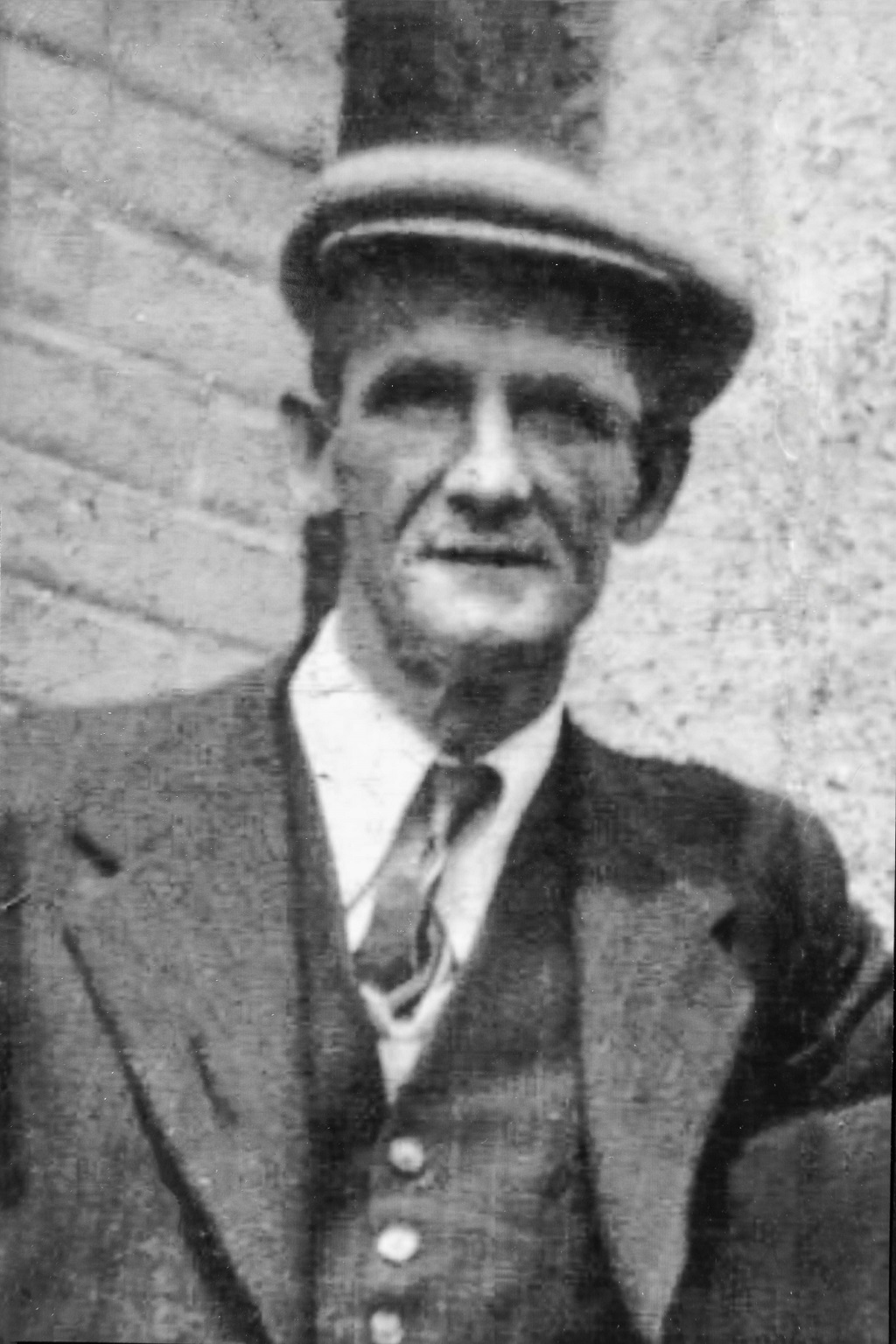
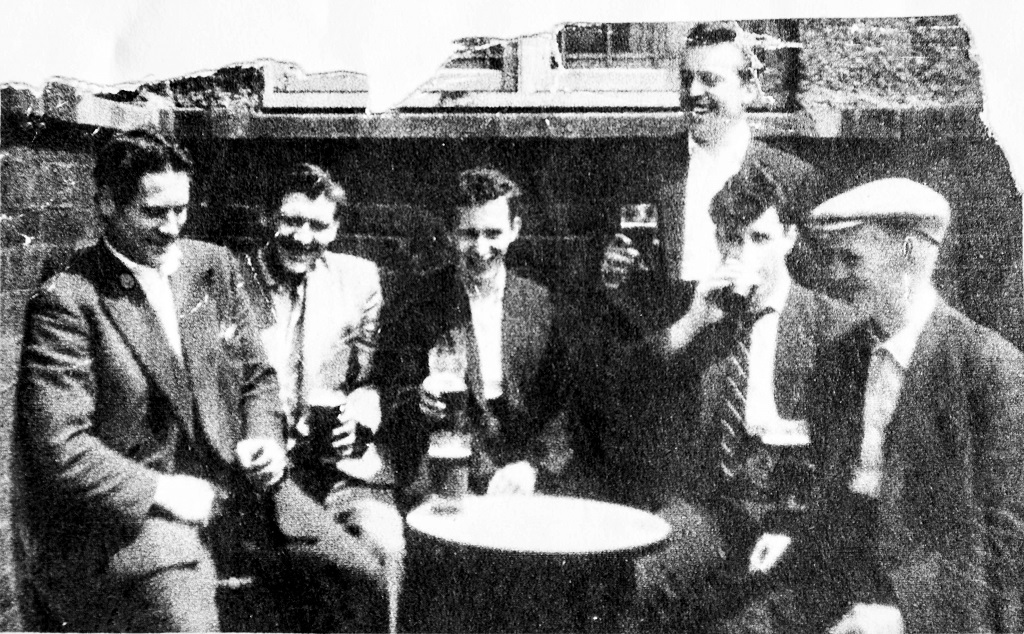
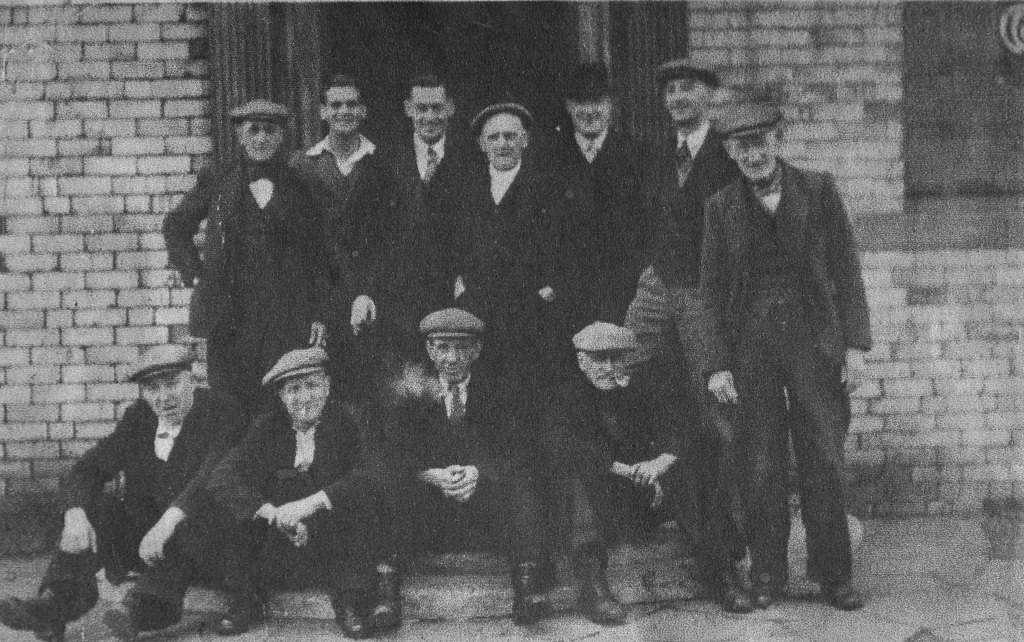

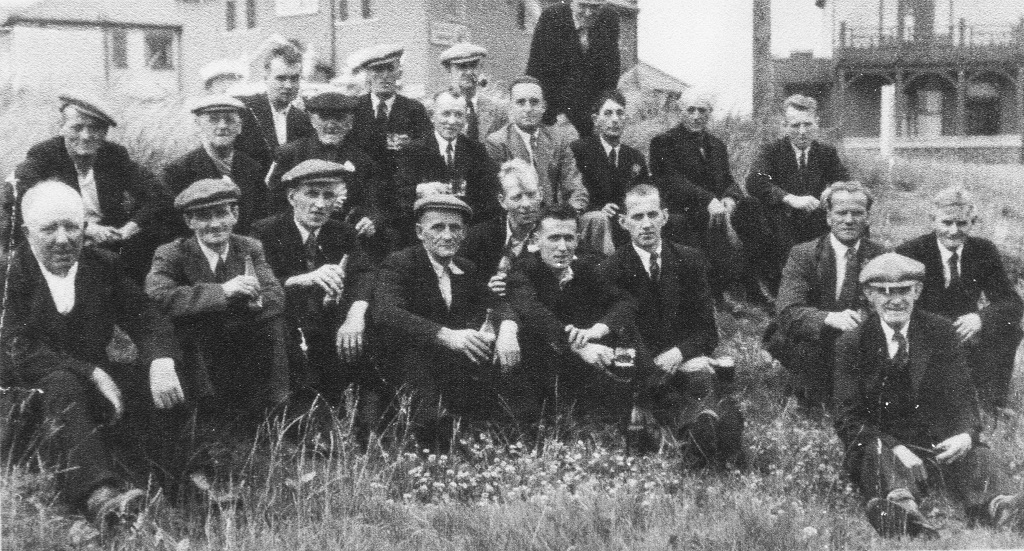
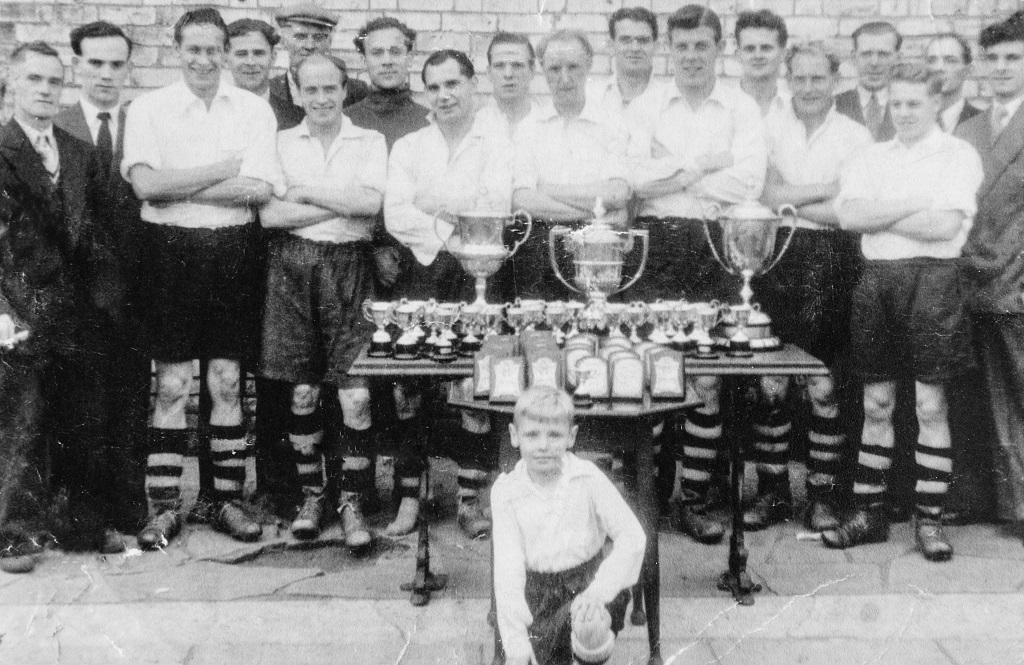
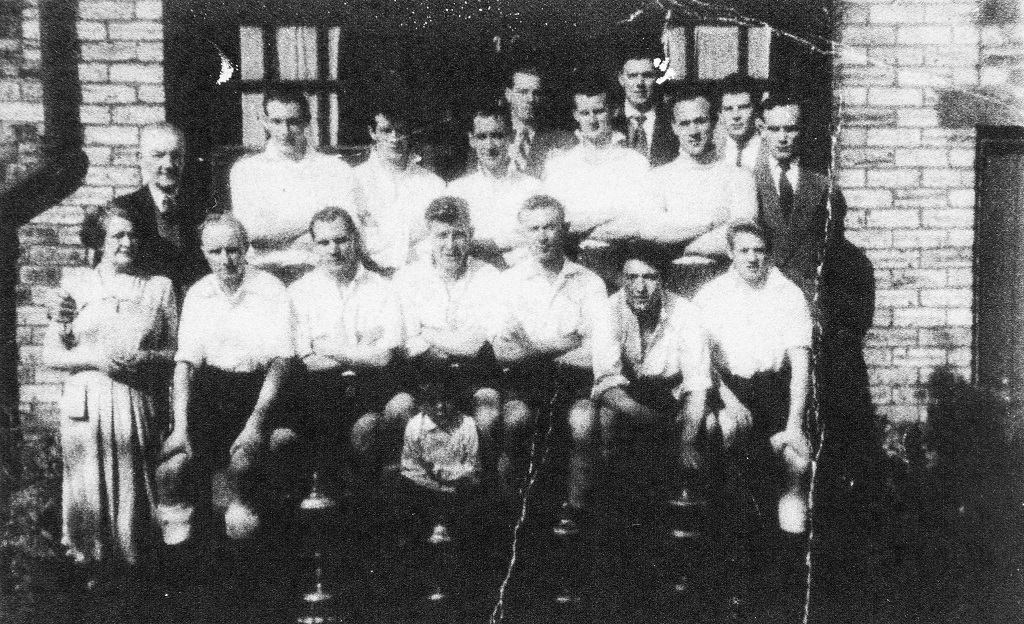
As has already been commented on, many Spikers were given nicknames. Teacake (as mentioned above), Sausage, Wompa, Scone and many more. The latter of these, Scone, was my uncle Ronnie Veitch. Ronnie was one of several good musicians from the Spike. He was a very well known personality in the Blaydon area. As a teenager he made drum kits out of old oil drums and practised for hours - clearly the interest was there from a young age. He went on to become a very fine drummer, able to read drum music, play with big bands, dance bands as well as smaller jazz units. Also he played for many years on the CIU Club circuit working with keyboard players, backing the visiting guest artists ('turns' as they were called) and playing for dances and so on. Two of the early post-war bands he played in was the very popular Rhythmairs and Astoria Bands - see photos below. Joe Fisher is playing accordion, Arthur Stobbs alto sax (just left of Ronnie), the pianist is Alan Lawrence Chapman, Gerald 'Butch' Diver tenor sax, Frank Spoors trombone. Thanks to Ronnie's niece Zoe for a later very nice photo of Ronnie at his drum kit. Christine, who's partner is Alan Chapman's son, contacted me to advise Alan sadly passed away in 2018 (he was born in 1924). He was a very fine pianist who passed his exam for the Royal Academy of Music as a 14/15 year old, the youngest in the country at that time. He went on to work at a very high level including as accompanist for internationally known stars such as Shirley Bassey and Tom Jones. He was a Blaydon lad, from Delacour Road.
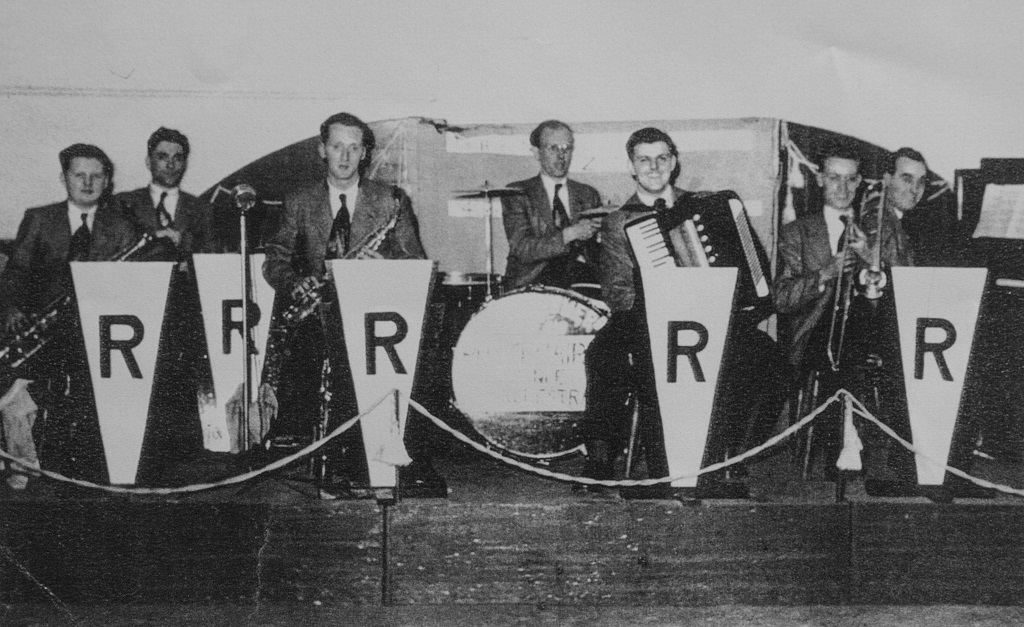
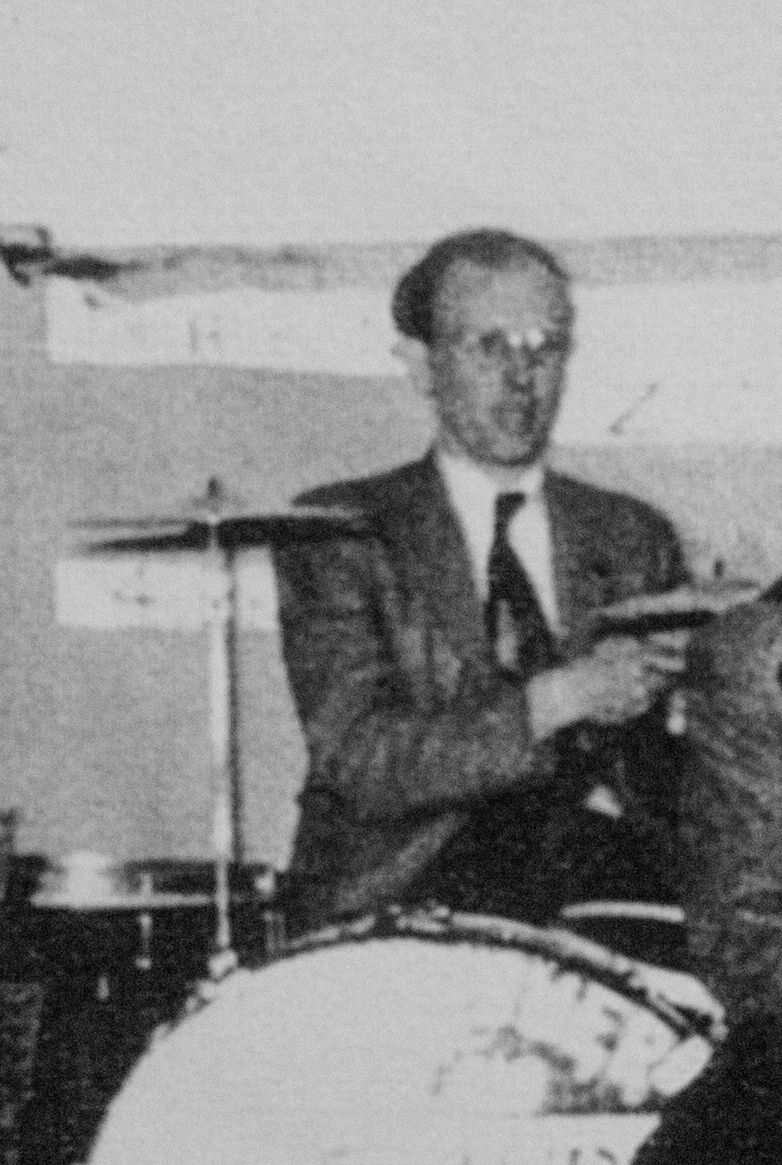

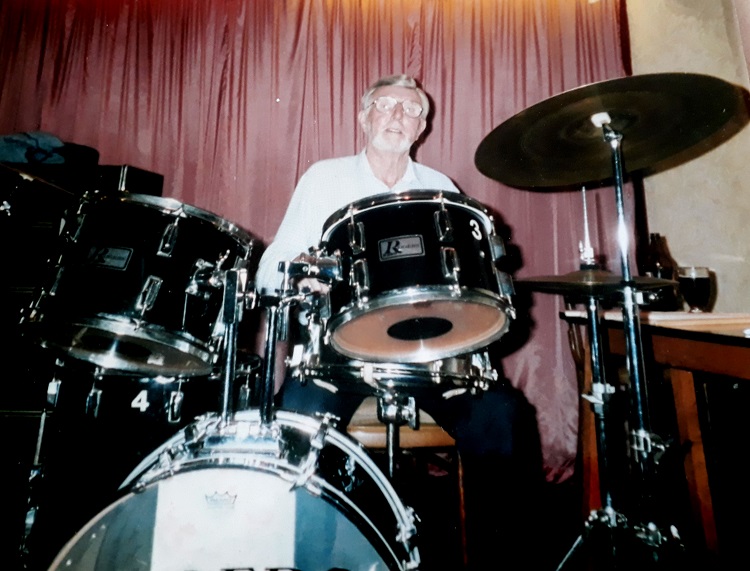
Below, Spiker Rita Wears at her home in Cowen Street on the Spike and then recently at her home in Winlaton.
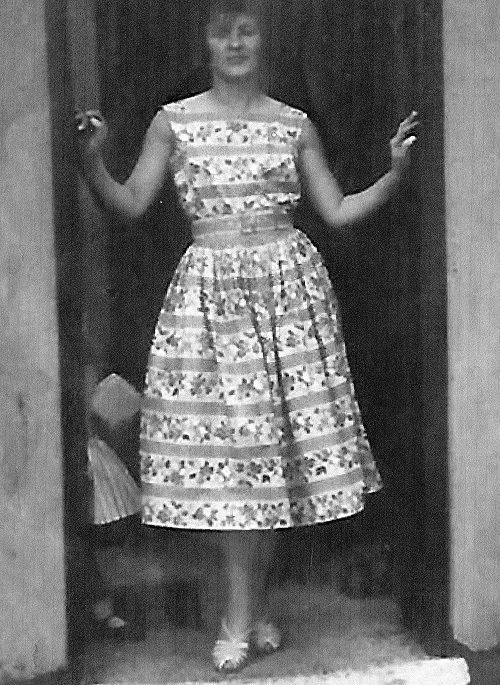
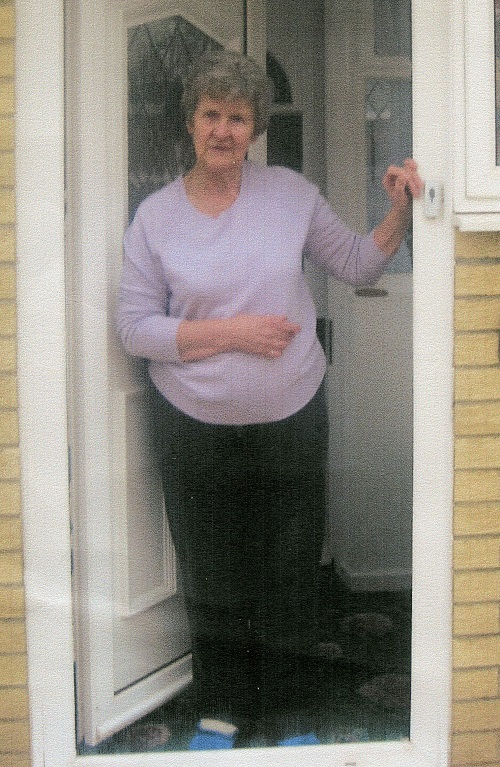
Below - Perna's Ice Cream. I believe the Pernas emigrated to England from Italy back in the late 1920s. Italy was in severe recession at that time and many Italian families emigrated to the UK and USA hoping for a better life. The Pernas made their home on the Spike and quickly integrated into the community. They were well known on the Spike and in Blaydon for selling their delicious ice cream. That's probably 'Teacake' in the background.
Thanks to Spiker John Harrison for the photographs of Rita and Perna.
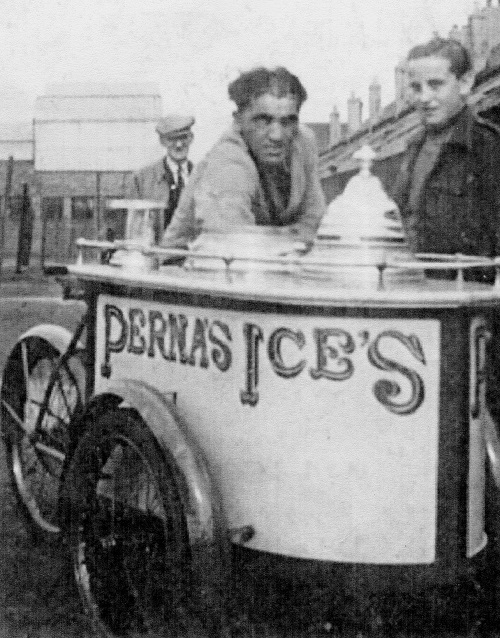
From time to time the Spike had a very good football team. Thanks to John Harrison for passing me these two photos of teams which I think would be in the 1950s.
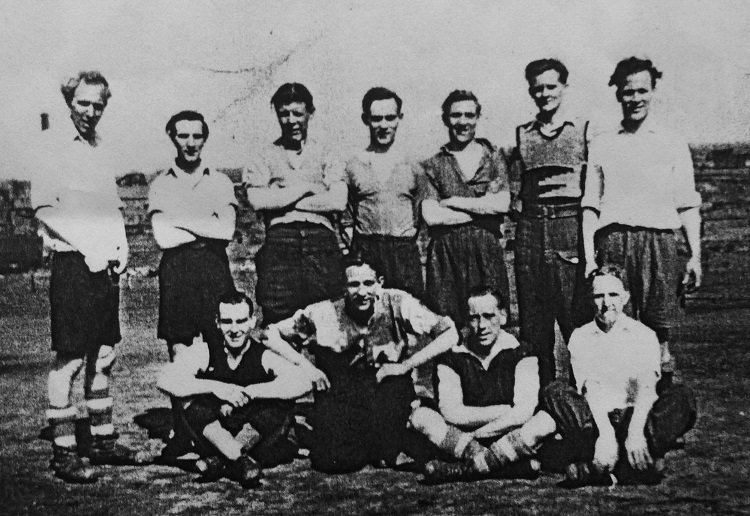
The team above was - -
Back row L to R - Ron (Scone) Veitch, George Daley, Matty Swinbank, John Daley, Albert Page, Jack Amos, Wompa Hamilton
Front Row L to R - Luke James, Joe Daley, Billy James, John (Dabit) Somerville
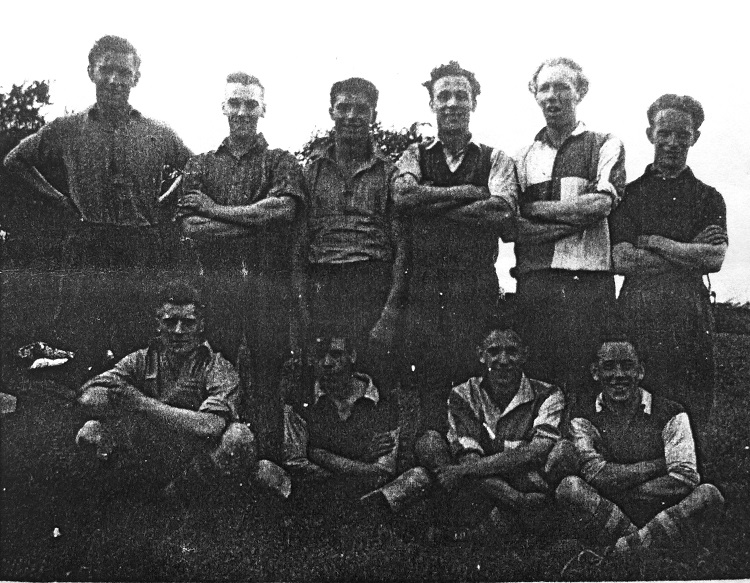
The team above was - -
Back row L to R - Albert Page, Luke James, Maurice Oxley, Wompa Hamilton, Ron (Scone) Veitch, Billy Somerville
Front Row L to R - Jim Armstrong, Jack Kelly, Joe Daley, Billy (Butcher) James
I was walking through Hanover Estate, Winlaton in August 2018 when I noticed a few of these drain covers made by J Hyslop & Co Ltd, Pioneer Foundry, Blaydon on Tyne. It would seem this firm took over Smith Patterson Pioneer Foundry and perhaps ran it up to eventual closure? The houses on the estate were built in the 1960s.
Thanks to Susan who contacted me in June 2020 with an update. Smith Patterson was taken over by Jim Hyslop, a Scotsman, who lived at Stella with his wife and two daughters. Susan's family were neighbours in the late 1950s into the 1960s. Eventually the Hyslops moved away from Stella. It would be interesting to know what happened to the foundry after the Hyslop era.
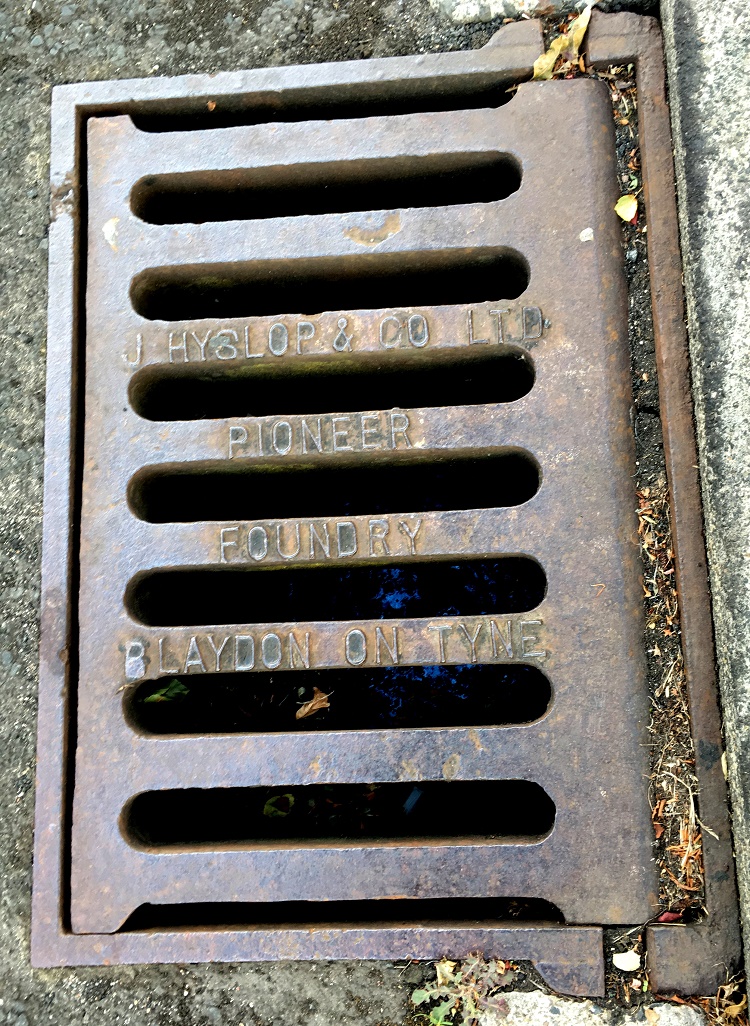
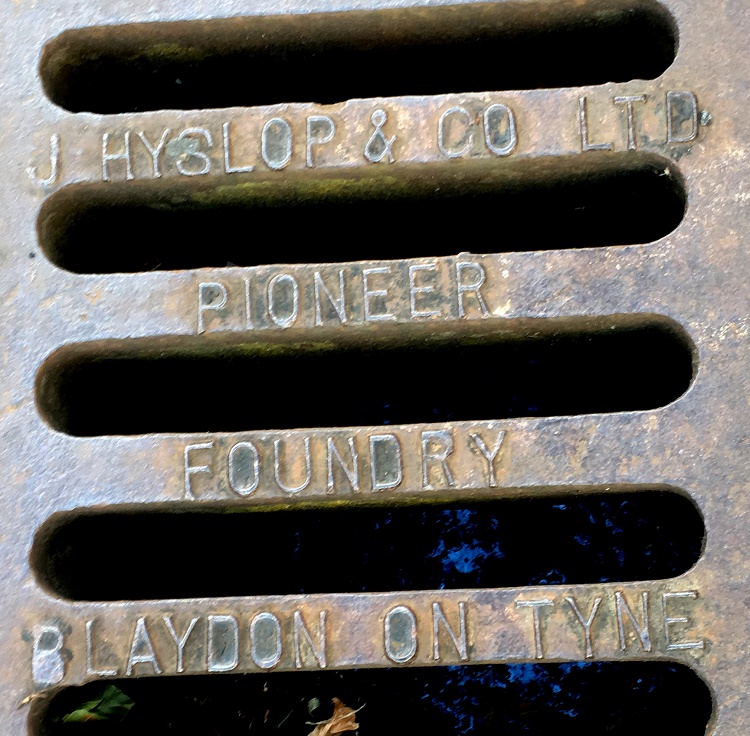
On 7th Sept 2018 I went to see Spiker James Somerville's son Robert and he got talking about the Spike Castle (Turret House). His family used to live there. It seems fairly certain it was renovated by Sir Joseph Cowen and used as short term digs for navvies working possibly on the Tyne improvement work. Later the tenements were occupied by Spike families working in the local factories, Smith Patterson etc. He told me the story that went around at that time was that these navvies (who probably drank away most of their wages) used to come to the castle for digs for the night and if they could afford 1p they got in. If they could only afford 1/2 p they slept on the line ie. slept standing up and hanging on a rope. He said that was the origin of the saying 'I could sleep on a clothes line'. I came home and Googled this practice and found this info below on line (joke!) about poor folk in London.
"if someone was so poor that even 4d was beyond reach, they could sleep standing up, behind a rope fixed at chest height along the wall, for 2d – the origin of the saying ‘he / she could sleep on a clothes line’. It’s a stark reminder of how harshly poverty afflicted people at that time".
October 2019 - my son found another Smith Patterson grate at Stella. So they are still around here and there, reminding us of their heyday. Here below are two images of this one.
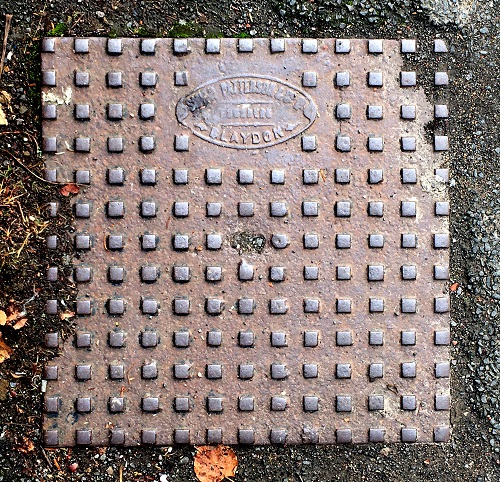
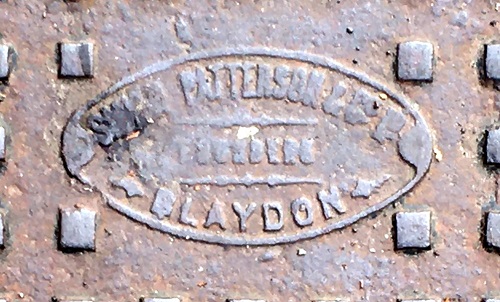
Another Smith Patterson grate. This one is on Barlow Road on the outskirts of Winlaton. First one I've seen that has a date. Found by my son Stephen on 8th April 2020.
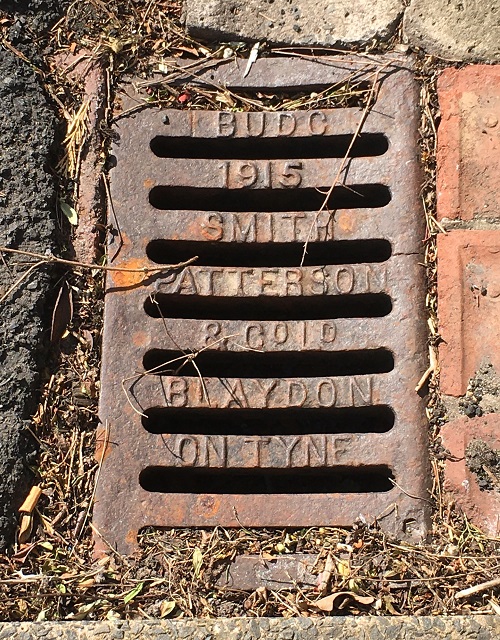
‘When I was a lad’ – some memories of Spiker Don Robertson
I was born 1946 and lived on the Spike in Townley street before moving to a new house in Linden Road, Blaydon around 1956. I went to St. Joseph's R.C. School. A few Spike names I remember were Billy and Lawrence Veitch, Stuart Malone, Joe Tench and Jeff Maloney who lived on Patterson Street. Our playground was the Irons waste ground near the Bottle House Arms pub and the riverside. My Mothers kith and kin also lived on the Spike – the Kelly's & Amos's.
Before I left school I had a Saturday job at Glendenning Butchers and an evening paper round. After leaving school I worked for Blaydon Co-op but eventually left in 1965. I used to drink in the Ord Arms just over Scotswood Bridge.
My memory of places on the Spike were the plastics factory, behind which was Blaydon F.C. football pitch. The football team had a cup game at Craghead and took three bus loads of supporters to the game. Dora Kirvan nee Amos (who wrote those poems) and Bob and Jack Amos (who played on the football team) were my aunt and uncles. I think a young boy mascot was Jimbo? Harris. Over the road from Townley St. and Pioneer St. were a few allotments.
I remember the boats that took Stella Power Station spoil to sea. They were named Bobby Shaftoe, Bessie Surtees and Hexhamshire Lass.
The Somervilles had horses and used to bring them round the back lanes and people fed them crusts etc. Joe and Chrissie Hall lived on Pioneer St. and were among the first on the Spike to have a television. They moved to Hilltop, Winlaton. Chrissie was a bus conductor on the Northern.
In celebration of the Queen’s coronation there was a big street party.
After moving up to Linden road in Blaydon I used to play in Axwell park by climbing the wall on Shibdon Bank before they built the ‘Hole in the Wall’ housing estate. Other haunts were the Windy Fields, the Nobbies, Stella Wood, Summerhill and Brockwell Wood.
Don Robertson - February 2020
Thanks for your recollections Don. I remember the plastics factory down at the bottom of Patterson Street and opposite the terraced houses. It had a pool (which looked rather like a small swimming pool) over a tall fence. I always wondered if it was just water or some other liquid! It was a deep blue. I remember my dad took me to a football match on that pitch. My Uncle Ron (Scone) was playing. I remember the team called ‘the Golden Tigers’ but someone told me more recently they were from Scotswood, so that might have been the opposition. I also remember the first TVs coming along. We kids went to a kind neighbour Mrs McElvanny over the road, who was one of the first to have one. We used to go to watch ‘The Cisco Kid and his sidekick Pancho’. Would be the mid to late 1950s I think. I remember those boats too, they seemed to endlessly go up and down the river.
Roly - 17th Feb. 2020.
Following on from the above here below are two St. Joseph's school photographs from Don taken 1952/54. Don is top left on the left hand photo and top right on the right hand photo. The tall lad with spectacles was another Spiker, Billy Veitch (my late cousin). Thanks for sending these Don.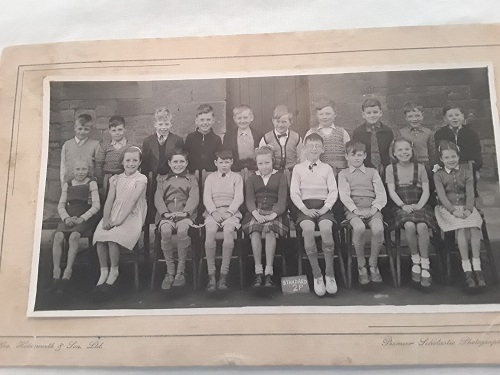
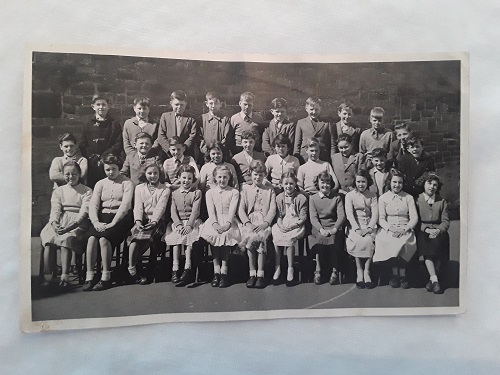
Another two Smith Patterson grates. One is on Scotland Head, just outside of St. Paul's Church, Winlaton dated 1929 and the second on what was Waterloo Street dated 1908. I found these on 6th/8th May 2020.
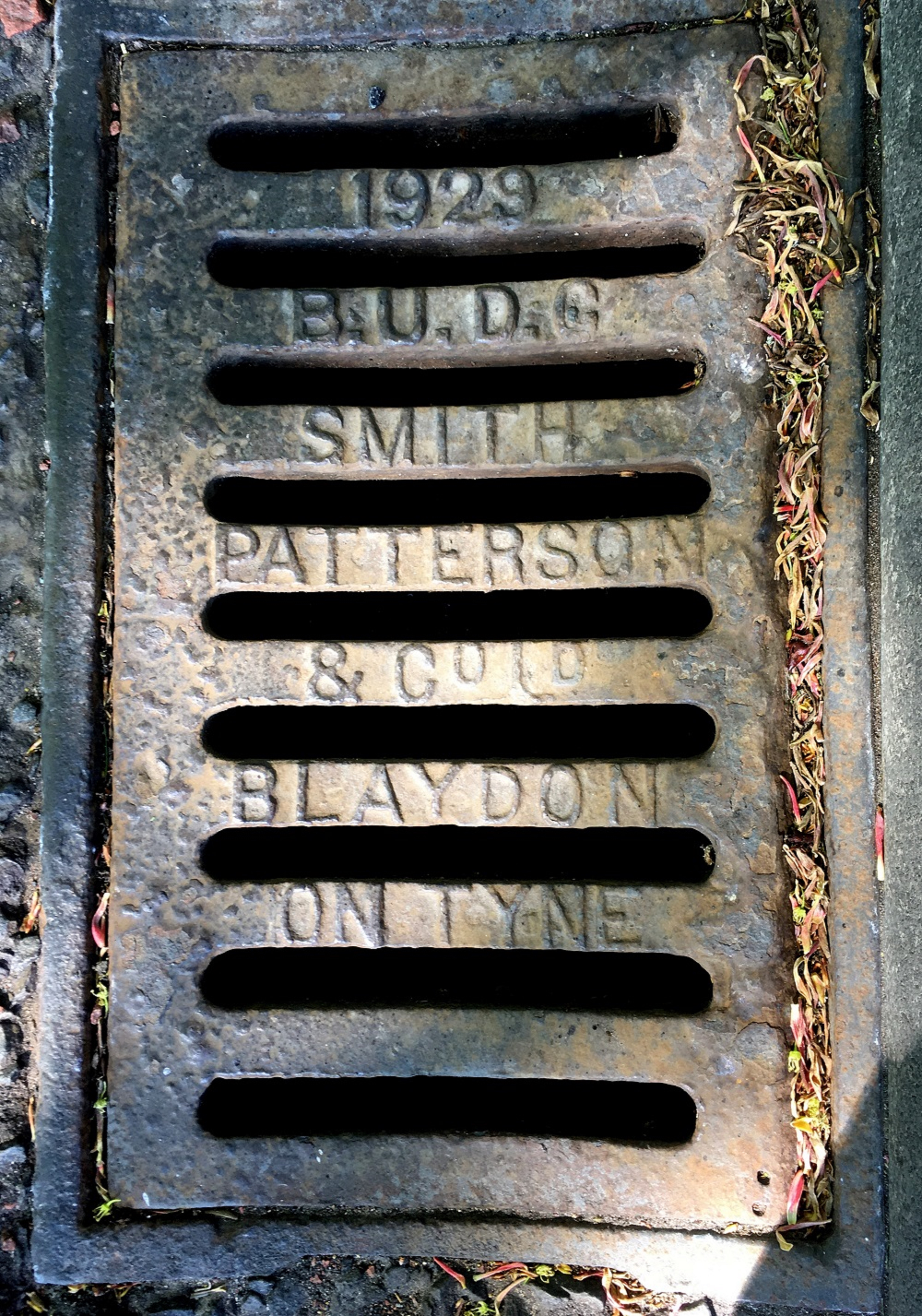
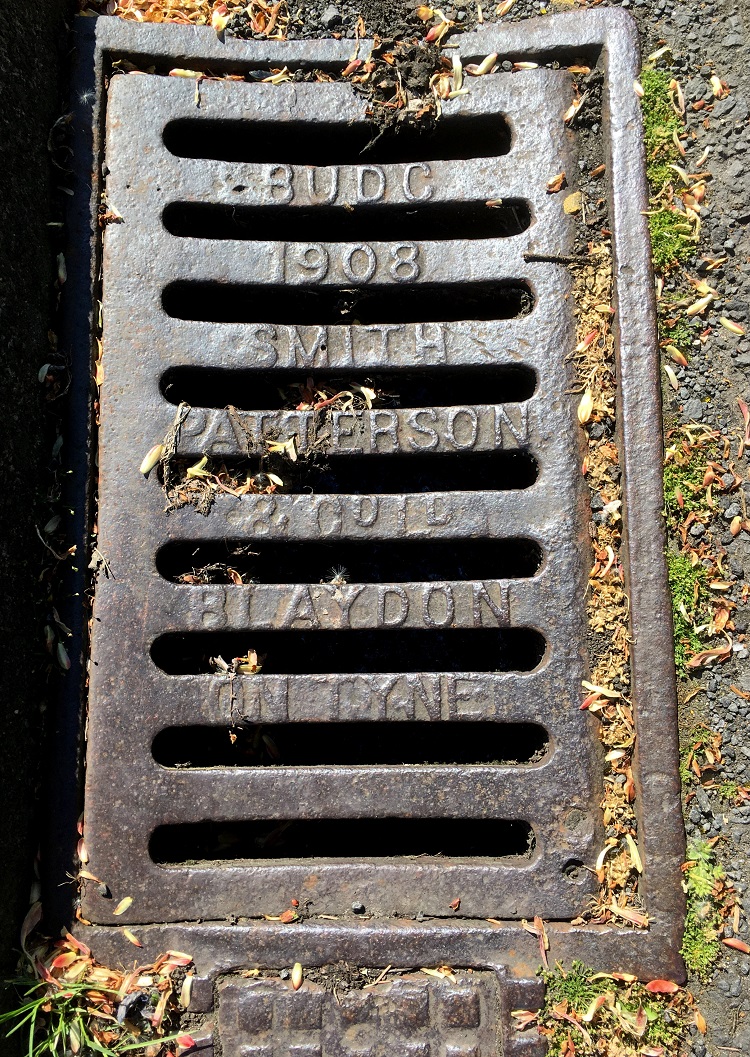
Something new! While out for my short coronavirus exercise on 9th May 2020 I found two Douglass Brothers castings (grate and drain cover). So they were making these as well as Smith Patterson. They were on Waterloo Street (no longer named) - the access road to the scout hut which I think would have had housing but now long demolished. Waterloo Street, Hood Square, Hanover Square - all homage to the Crown and Admiralty where Crowley obtained so much of his contract work.
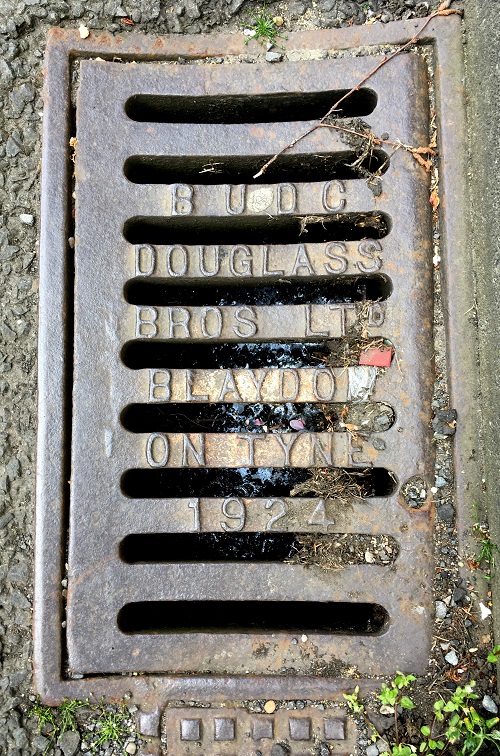
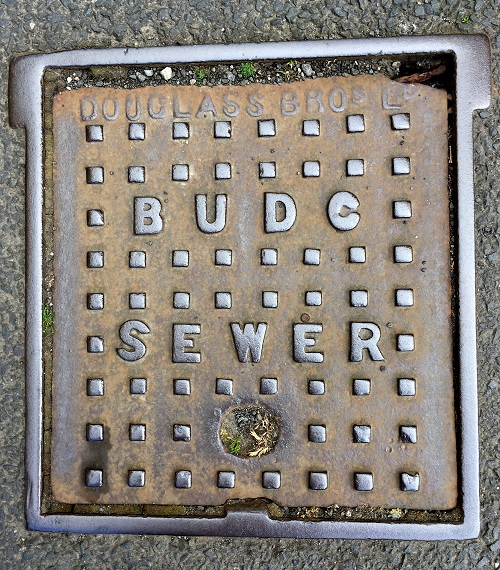
I would like to thank Jen, now of Wiltshire, for giving me some information and lovely photos of Spikers William ‘Gi’ Chapman and his daughter Bella, shown below. Gi had won the clock for his prize leeks.
Gi and his wife Sally lived right at the bottom of Patterson Street (no. 18, nearest the river). He had an allotment behind the house which was lovely. Gi and Sally and were well known and liked by all the Spikers. Gi is short for Giant. He was not very tall. It’s another example of Spike humour in their choice of nicknames. They gave a home to Jen’s grandmother, father and aunt and the family remained very close thereafter. Jen called Gi her ‘grandad’ and she has cherished memories of him.
Note from Roly - thanks Jen for these recollections and photos. I’m so pleased to see them as I heard so much about Gi and Sally from my mother. They were very happy times and she had such lovely childhood memories of those days, playing with the other children down there.
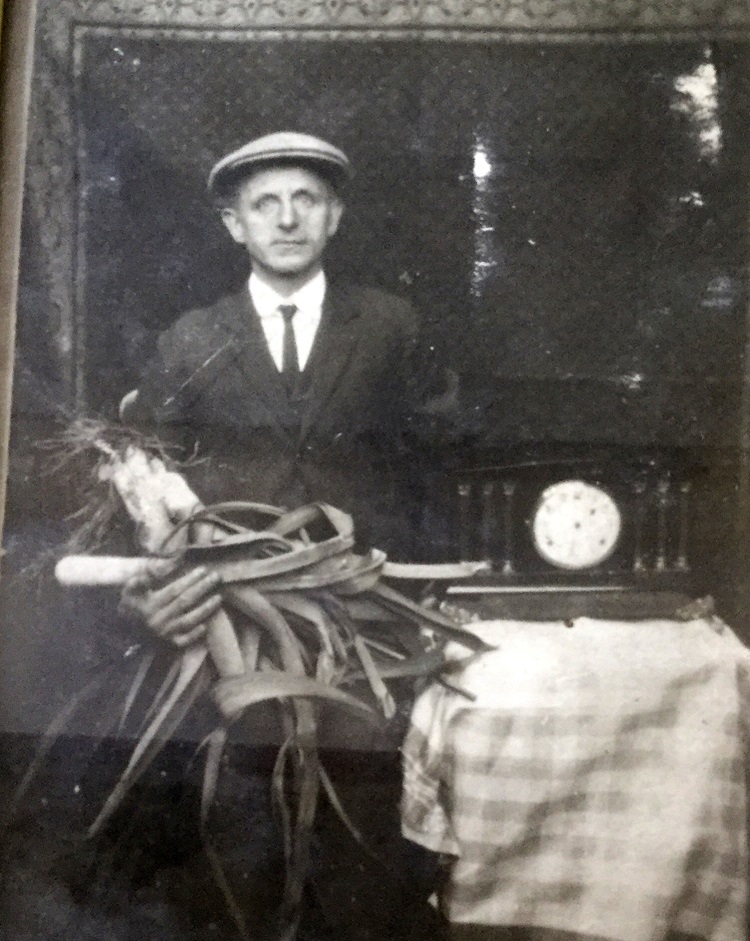
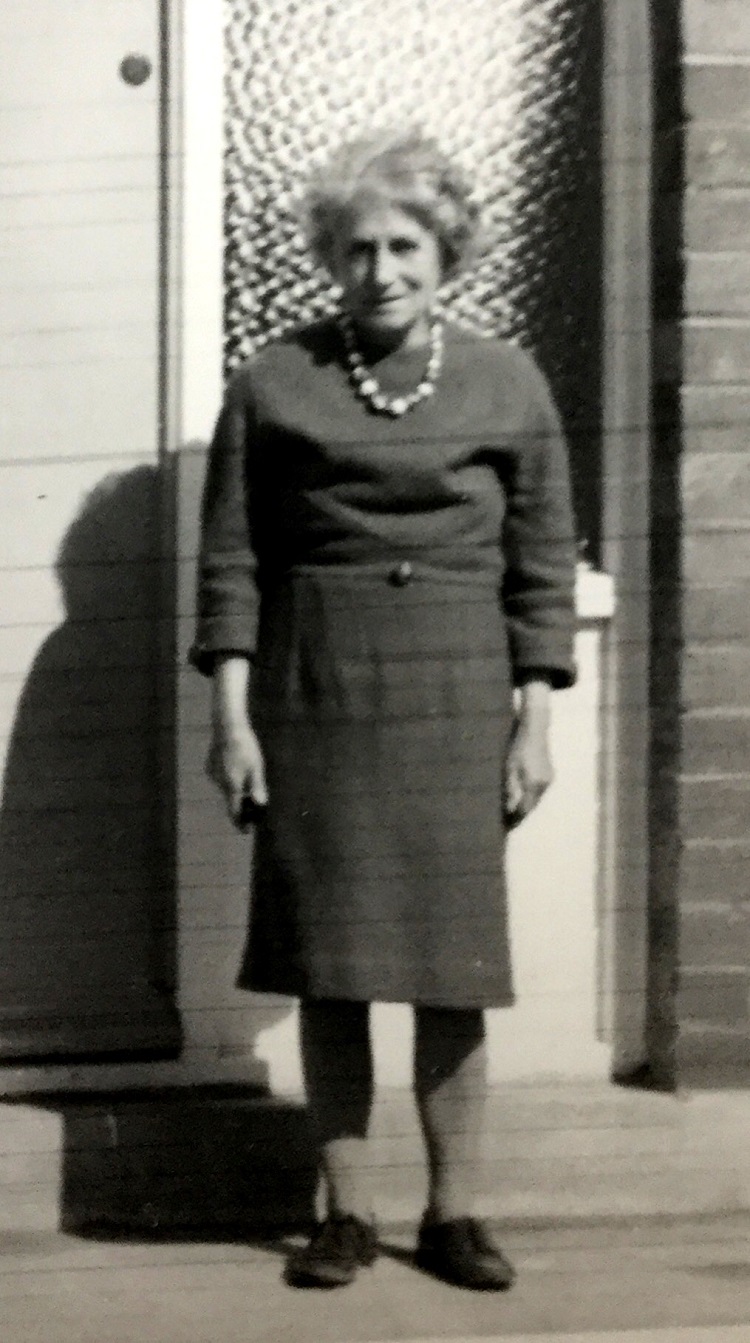
Another Smith Patterson drain cover has been 'discovered'. This one at Ryton. A beauty!
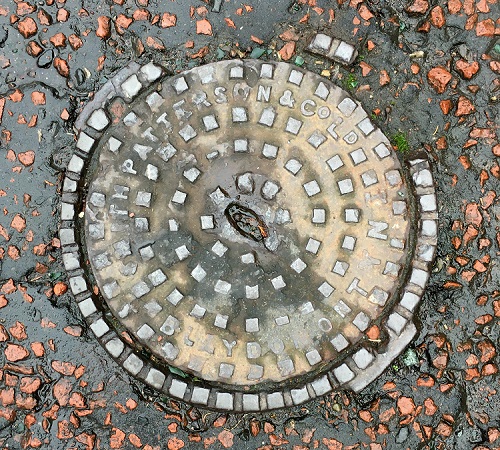
The Pernas
As has been commented on many times the Spikers were a very close knit community. In the difficult times of the late 1920s and 1930s when there was much long term unemployment, they supported each other and the people were resourceful, content and happy. The Spikers who remember those days all say this, without exception.
One particularly nice story from that time was the arrival on the Spike of the Perna family. They came from the Naples area of Italy, settled here and were quickly accepted into the community. Mr & Mrs Perna went on to raise a family of six - Albert, Toni, Laura, Louisa, Eddie and Francie. Two of the children, Toni and Eddie, ran an ice cream business. It was successful and their ices were popular on the Spike and in old Blaydon. That’s Eddie on the two photographs.
Toni married my own grandmother’s brother Stephen Reay and they in turn had four children Betty, Harriet, Stephen jnr and Billy. Stephen jnr married Mary (nee Hudson) (see wedding photo from St Joseph’s Church, Blaydon) and had a daughter Kim who is on the photograph below with her mother taken on the Spike, also they had a son Stephen. Kim tells me her dad worked at the foundry and also played football with friends Matty Swinbank, John Daley, Jack Amos, Wompa Hamilton and best friend John (Dabit) Somerville. Her dad Stephen Reay is on the two football team photos as indicated and he is also in the photo taken in the Pioneer pub on the Spike. He is at the back over on the right.
My sincere thanks to Betty’s son Tony and Stephen and Mary’s daughter Kim for getting in touch to give me some background information and photographs. Roly - November 2020.

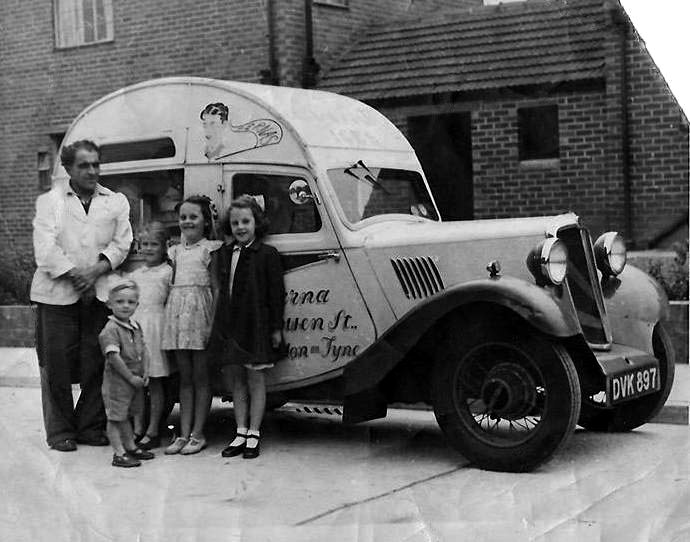
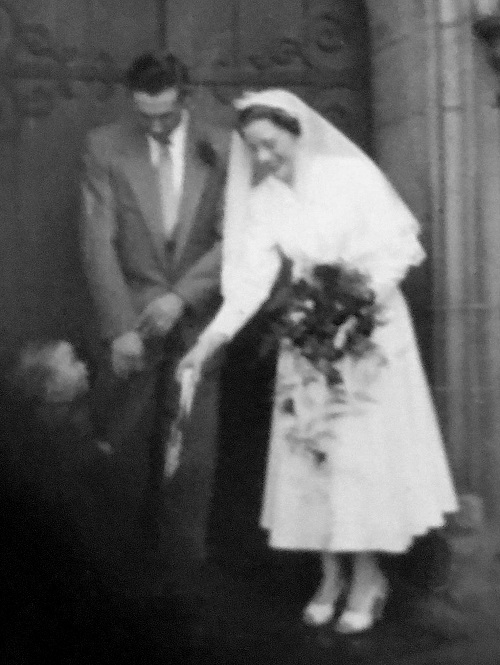
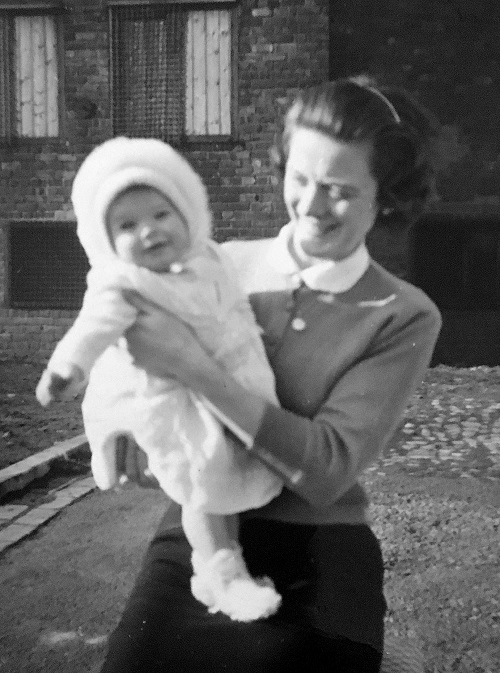
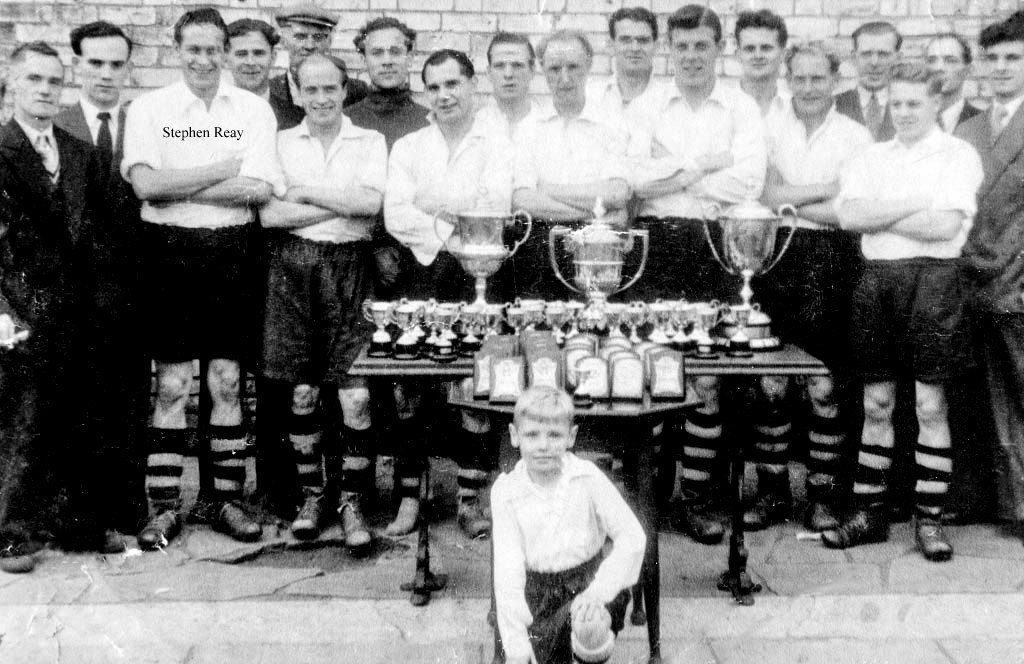
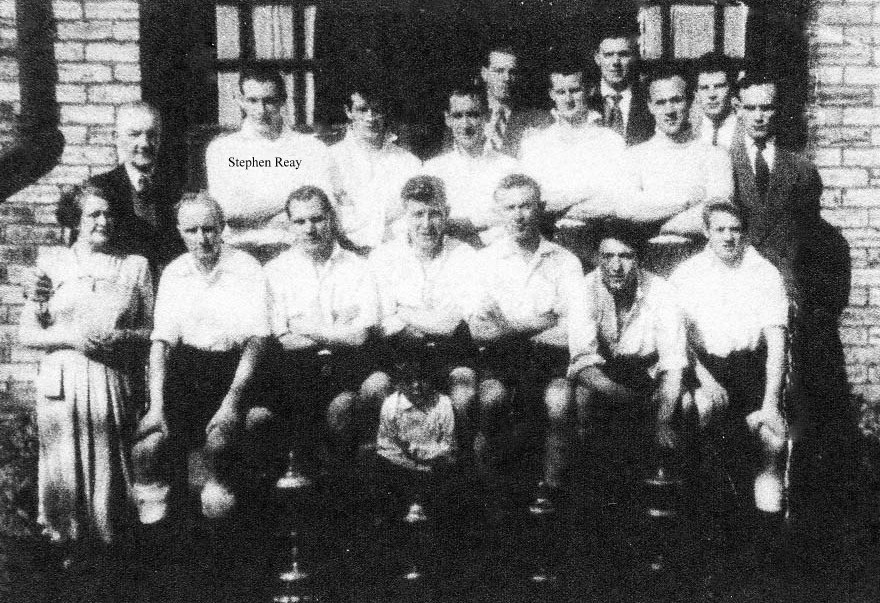

Here's yet another Smith Patterson drain cover on Stargate Lane, Ryton. 27-12-2020.
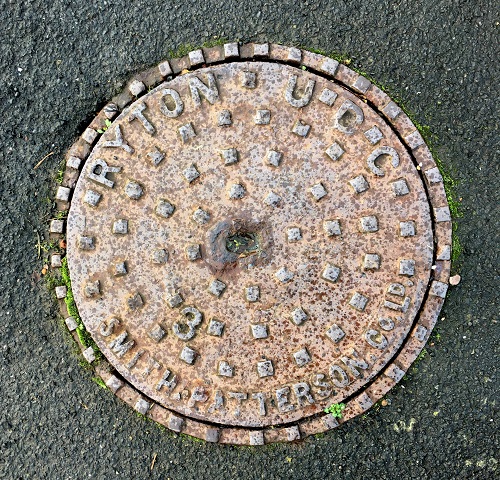
This rather distinctive Smith Patterson drain cover was discovered at Ryton, 24-07-2021.

This grate was discovered at Axwell Park Estate on 2nd September 2021.
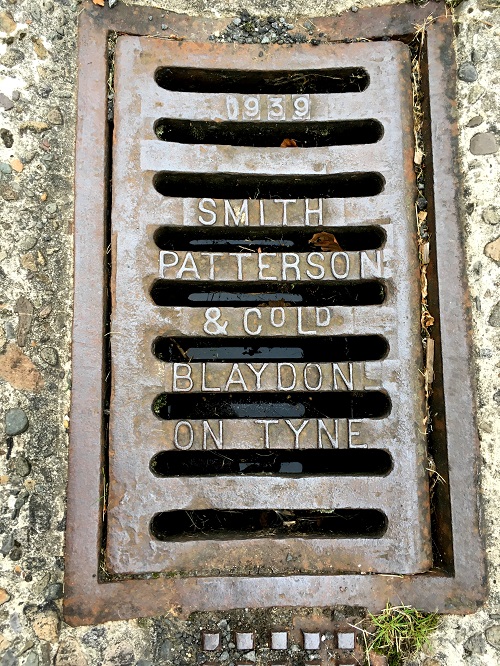
SPIKE MAP
The map below is an old map (1890s) adapted to show places of interest from the 1920s/30s. The railway sidings (marked Blaydon Sidings) were much more extensive by the 1920s though and extended across towards The Spike such that the open land (6 Tench's Field), was considerably narrower by then.
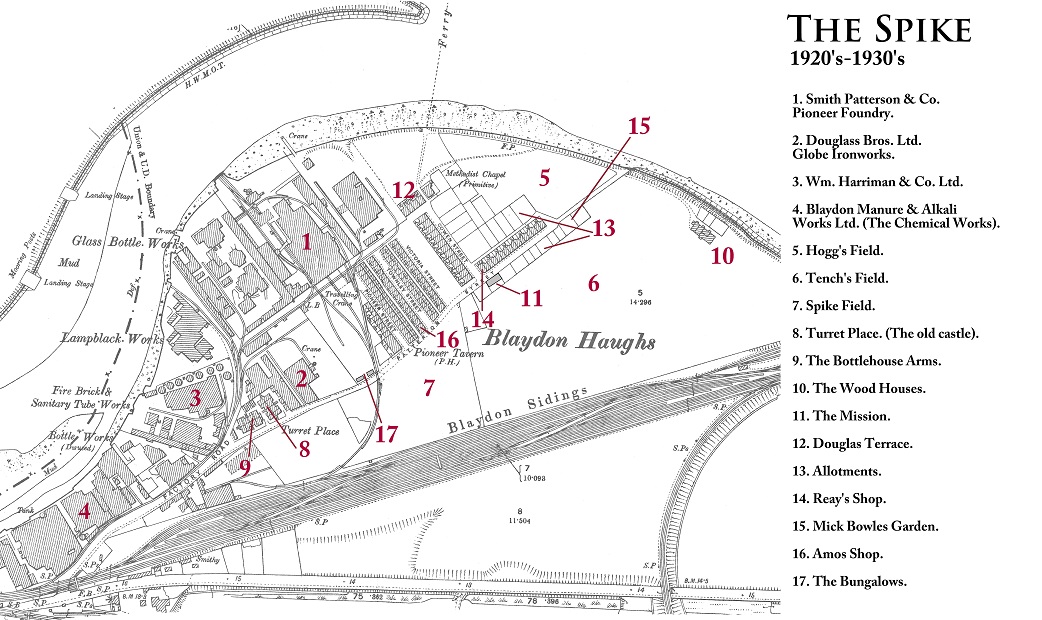
NOTE - THE SPIKE INFORMATION HAS NOW BEEN DIVIDED INTO FIVE PARTS TO MAKE IT EASIER TO READ AND TO MANAGE. REFER TO THE LOCAL HISTORY MASTER MENU. THANKS.Roly Veitch
6th January 2021
Back to History Menu Page